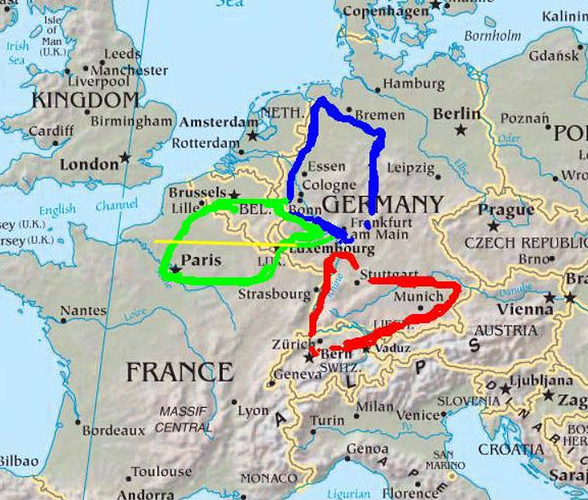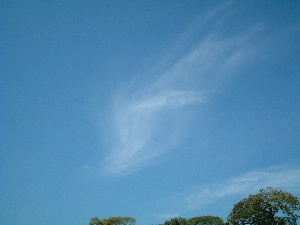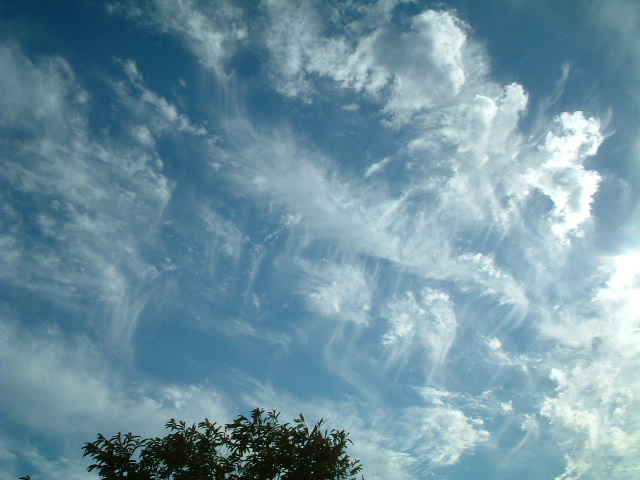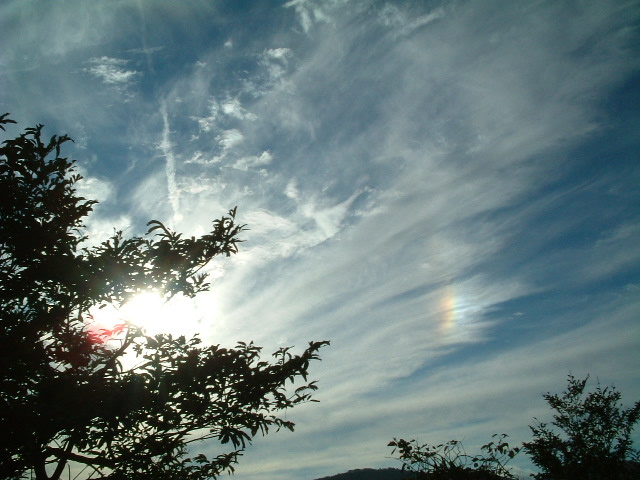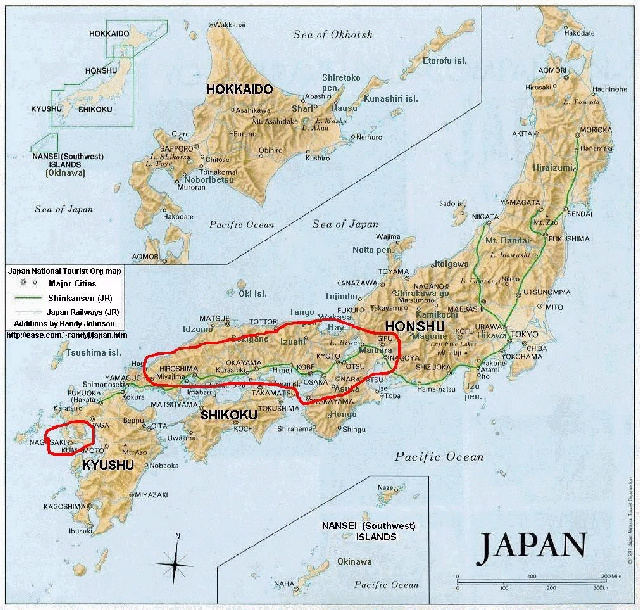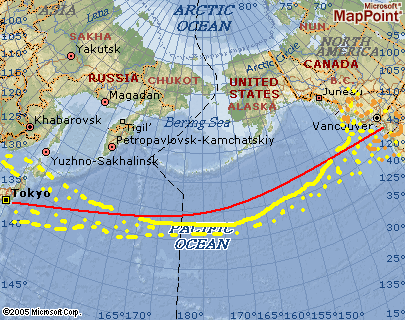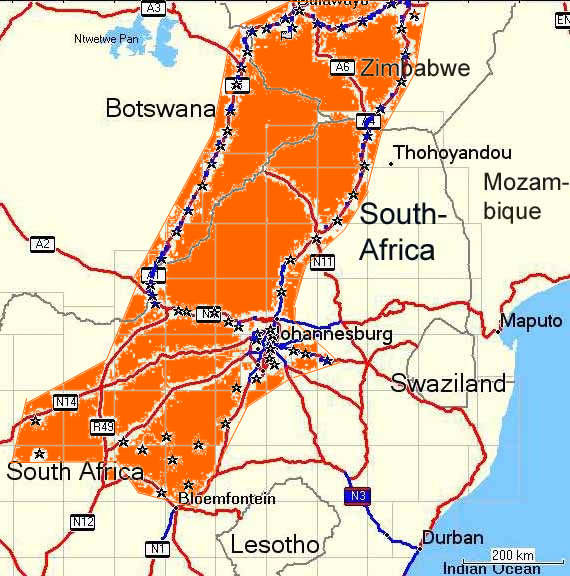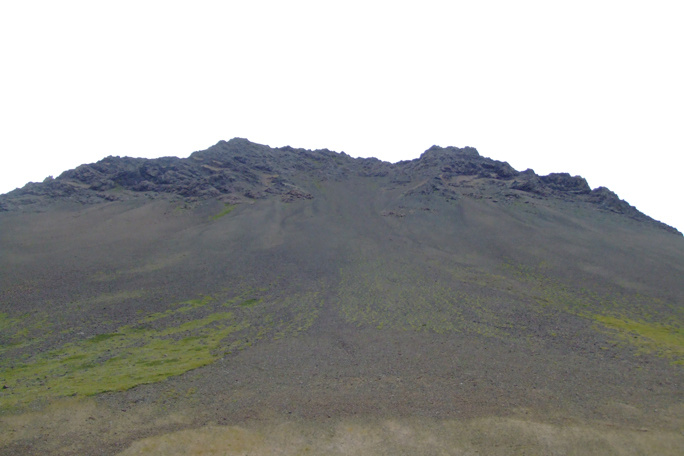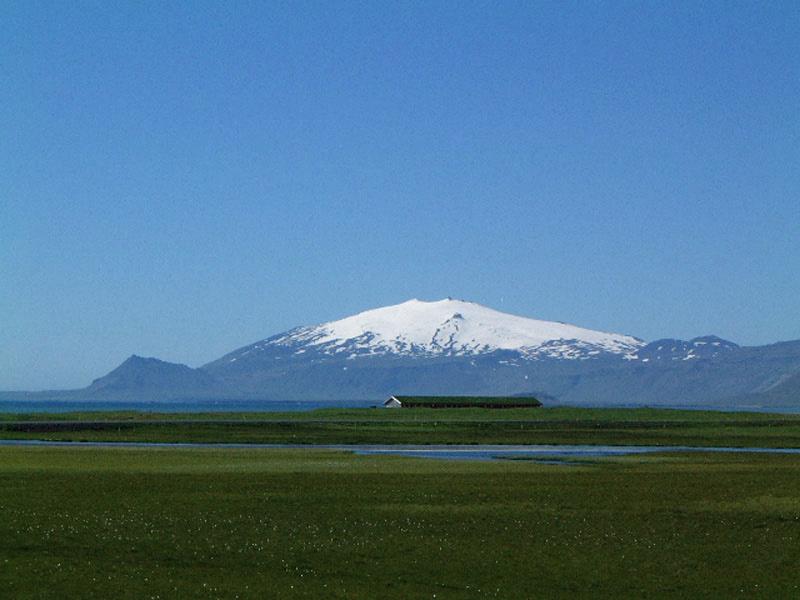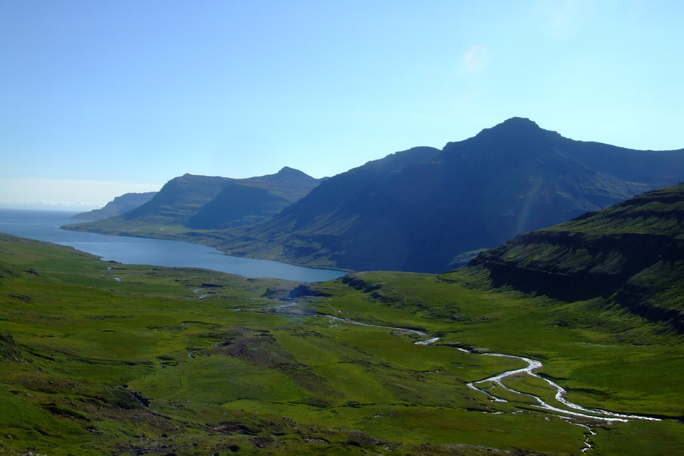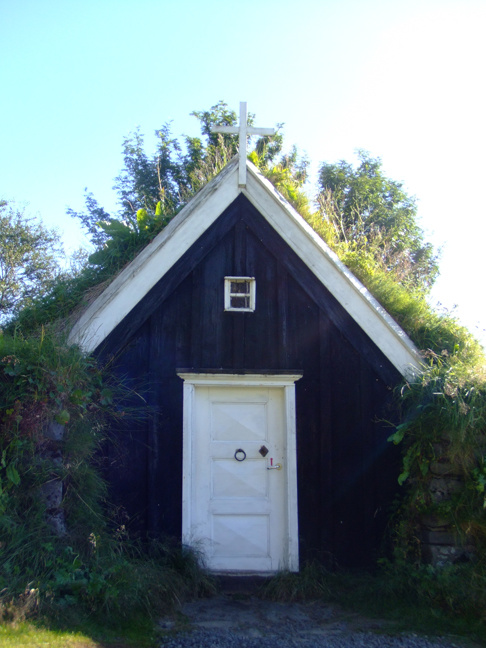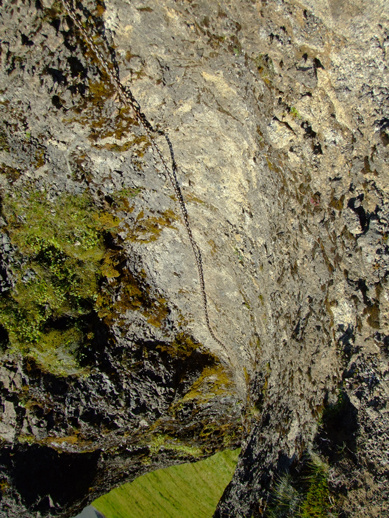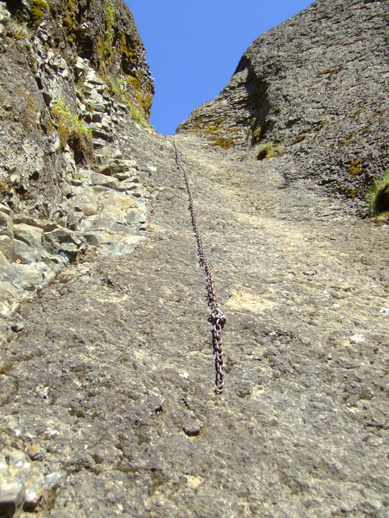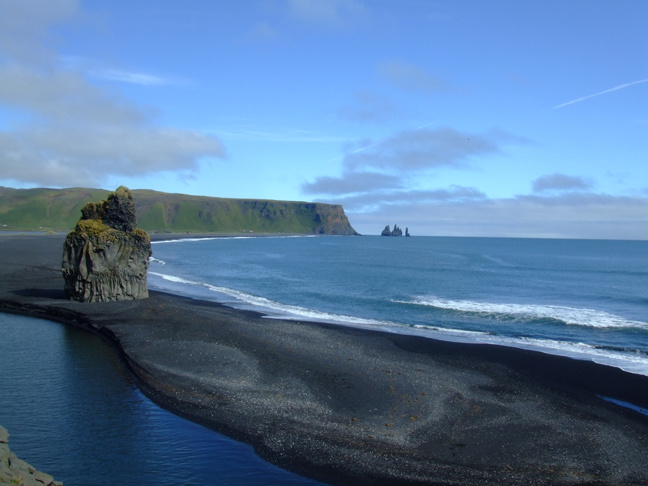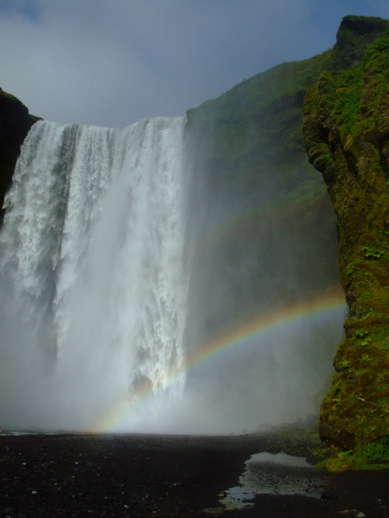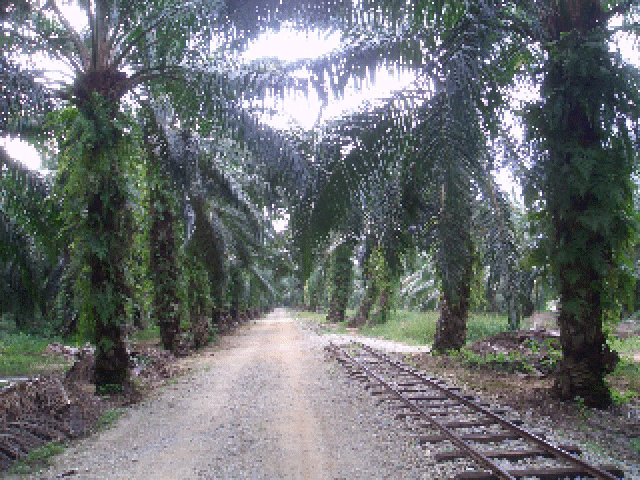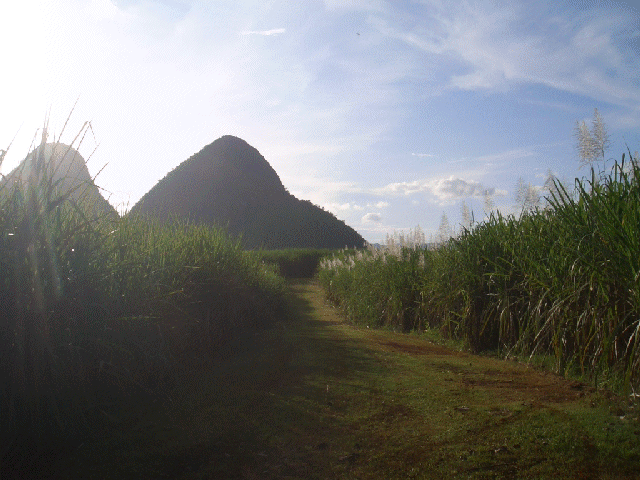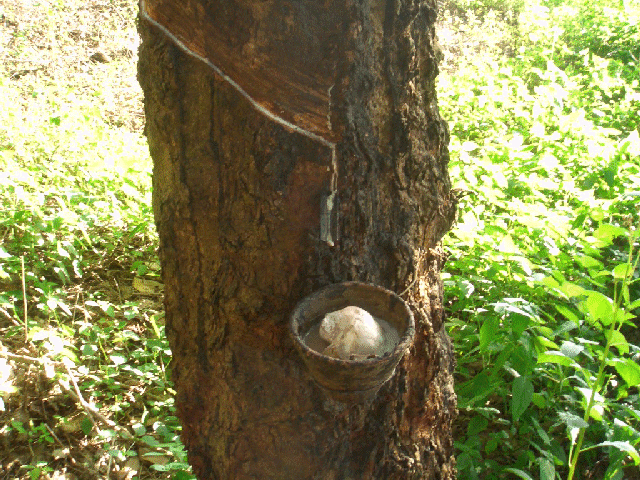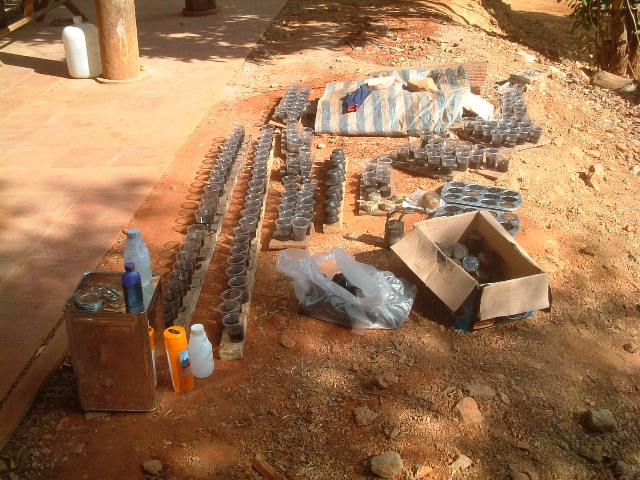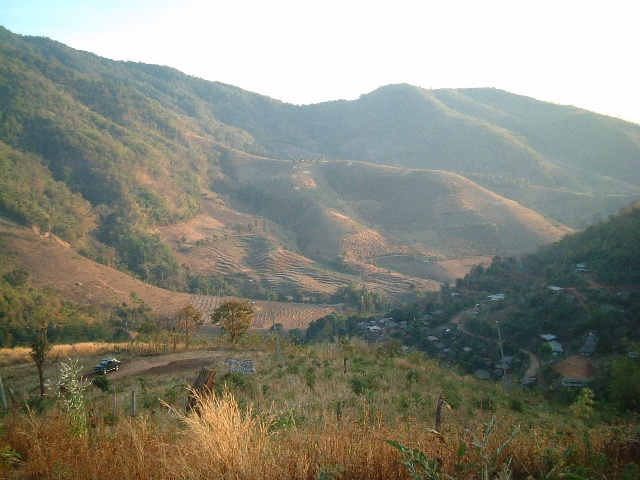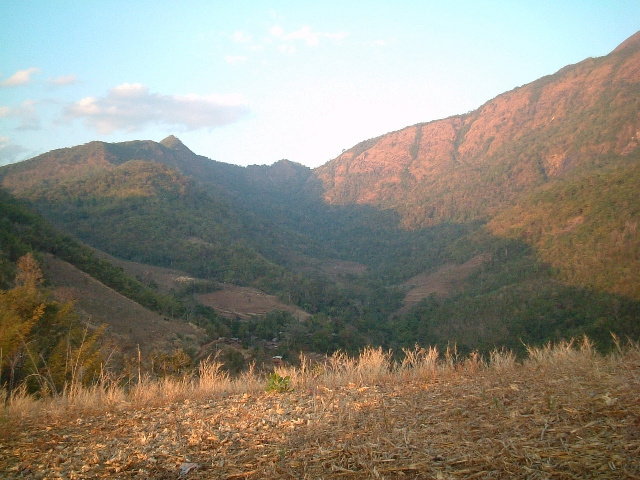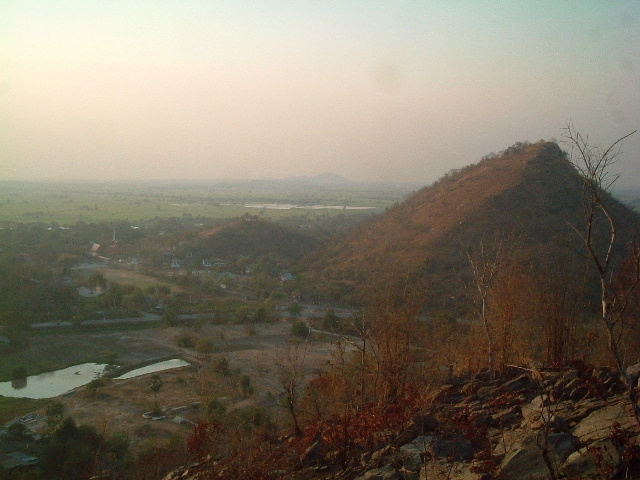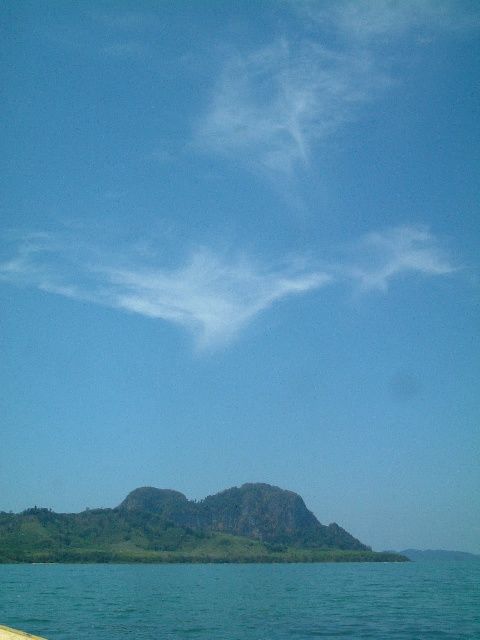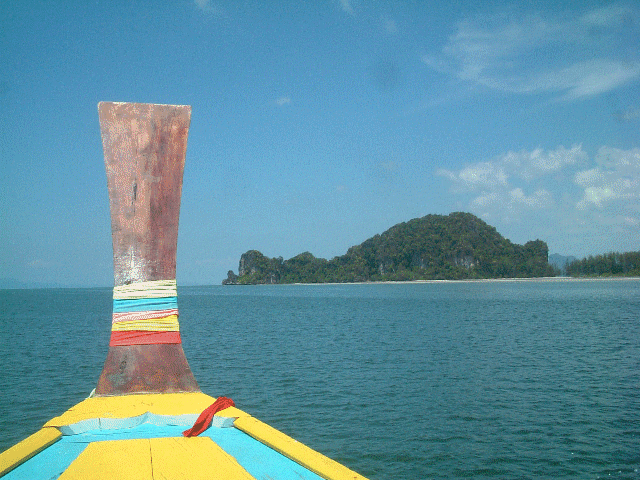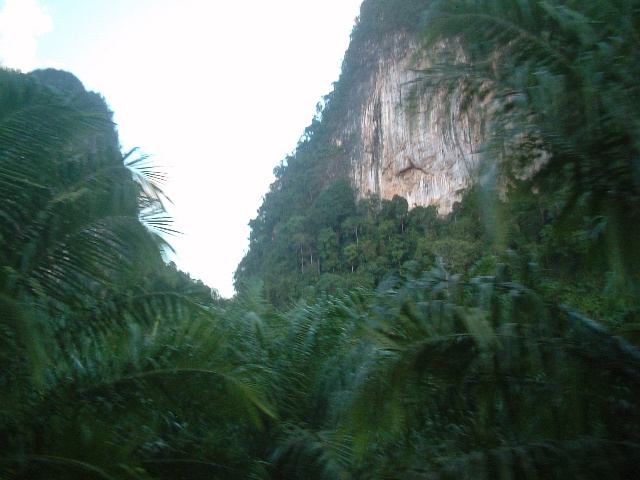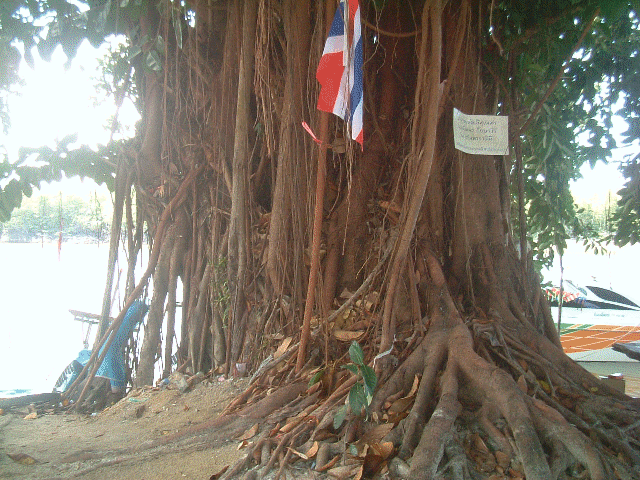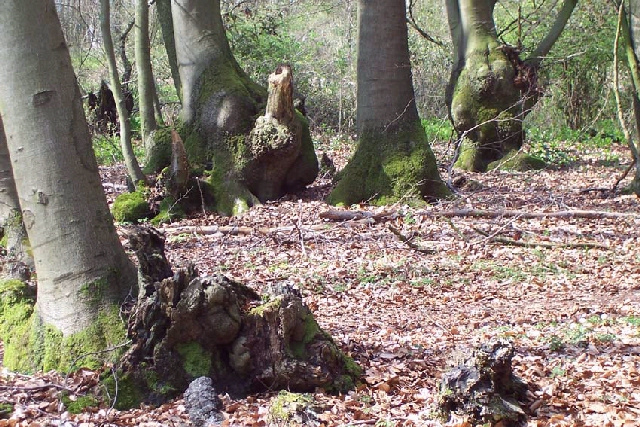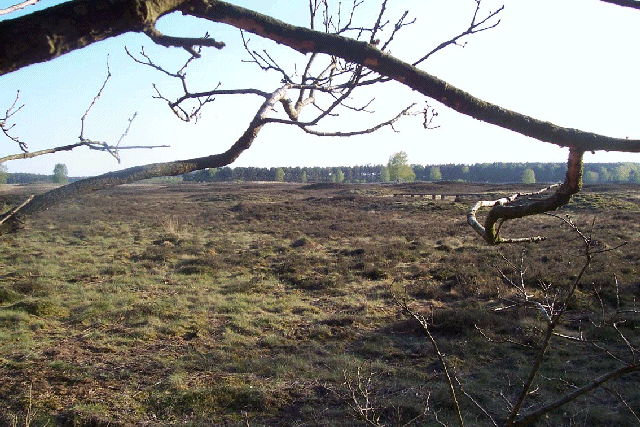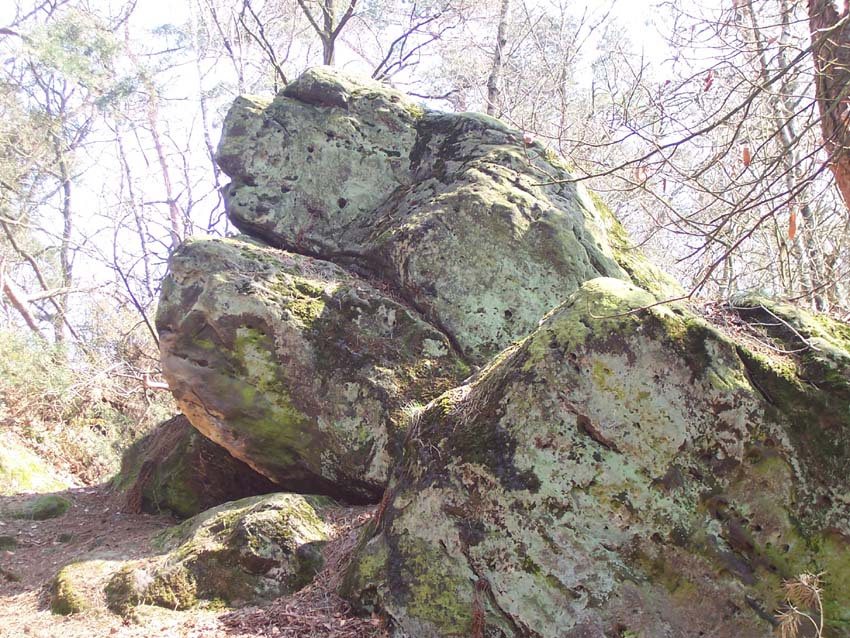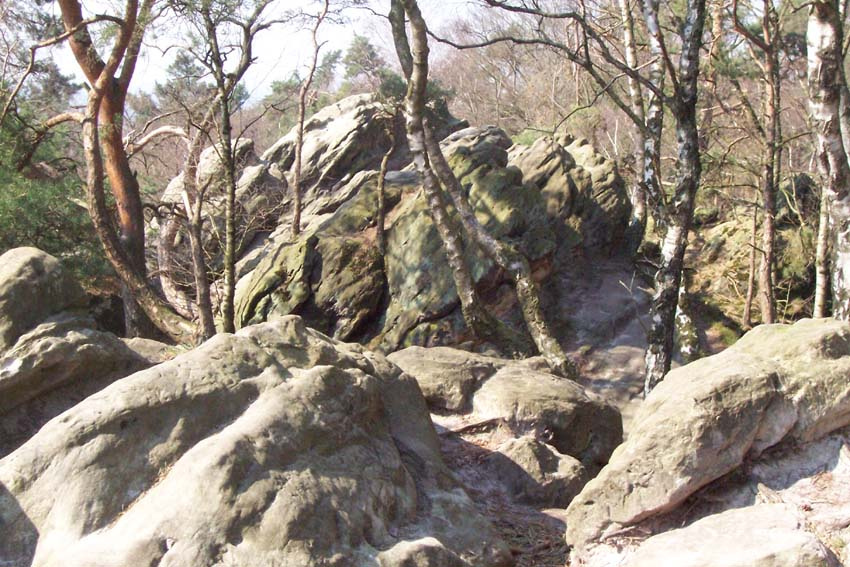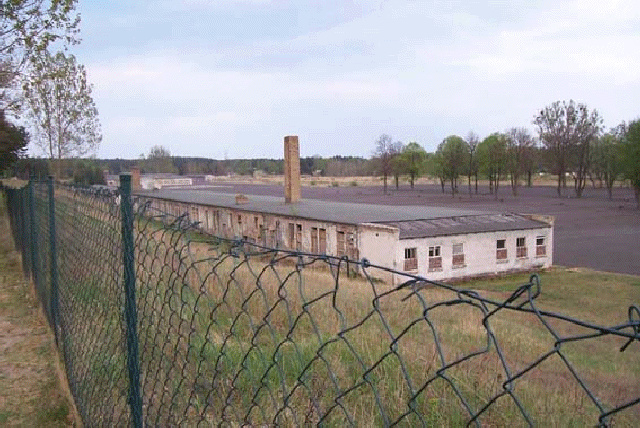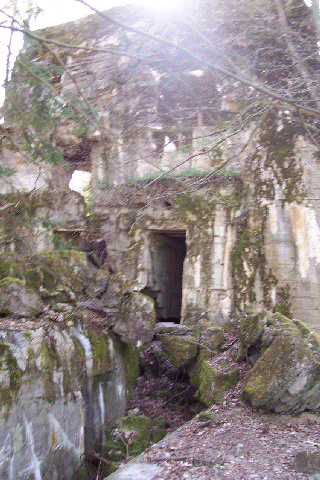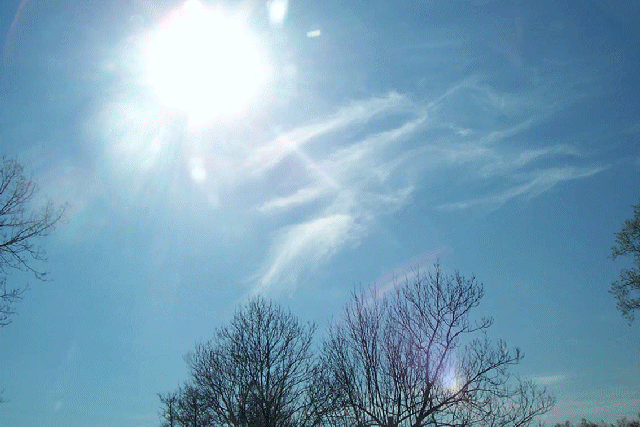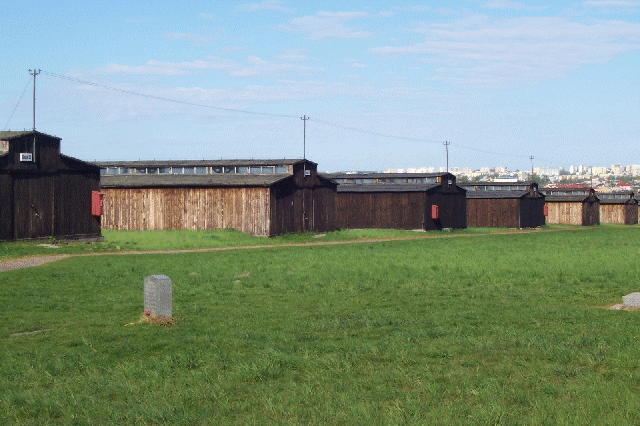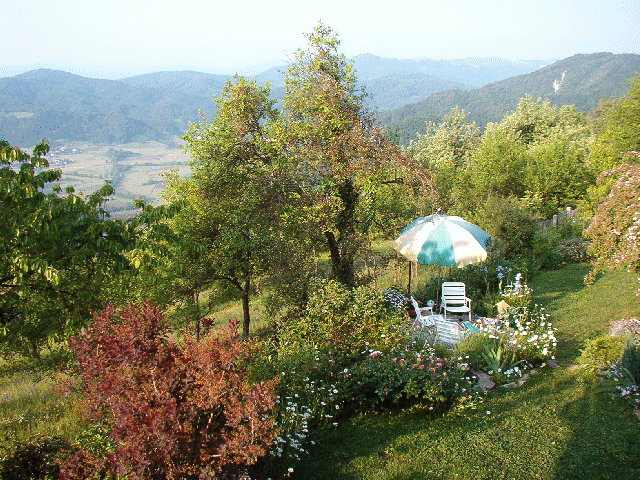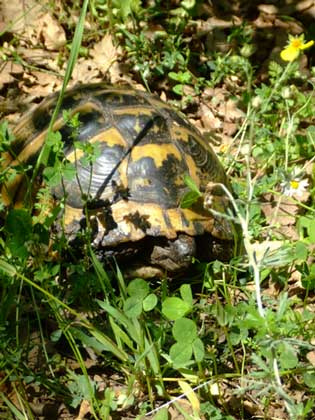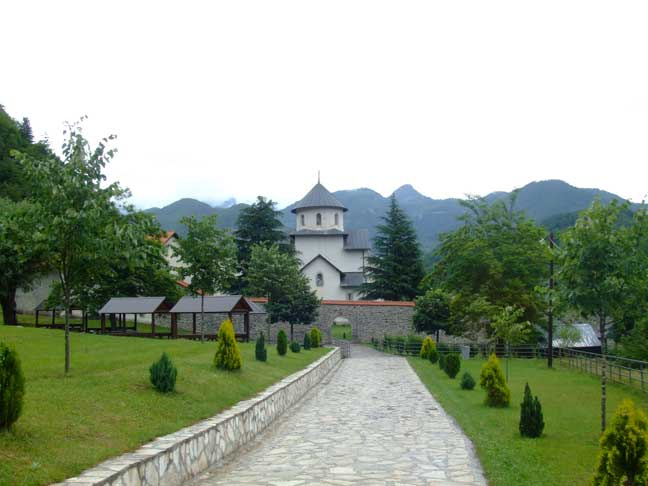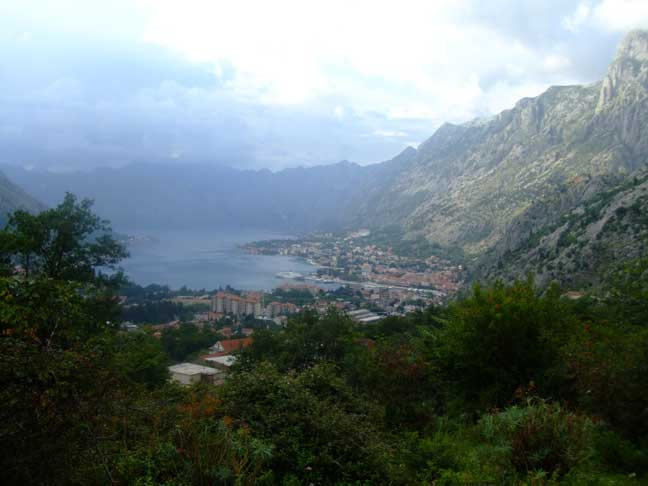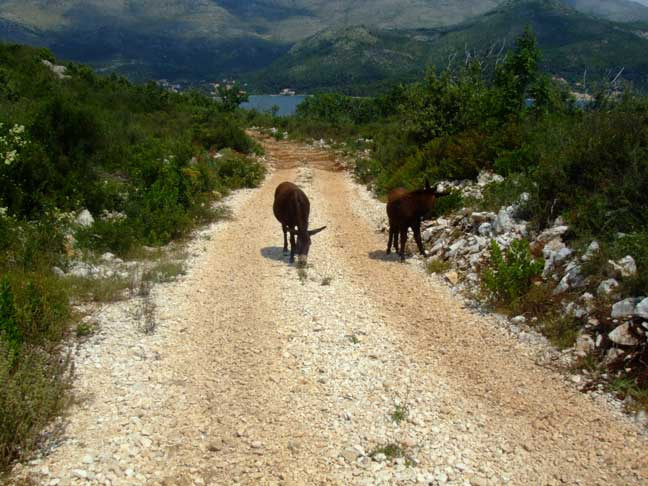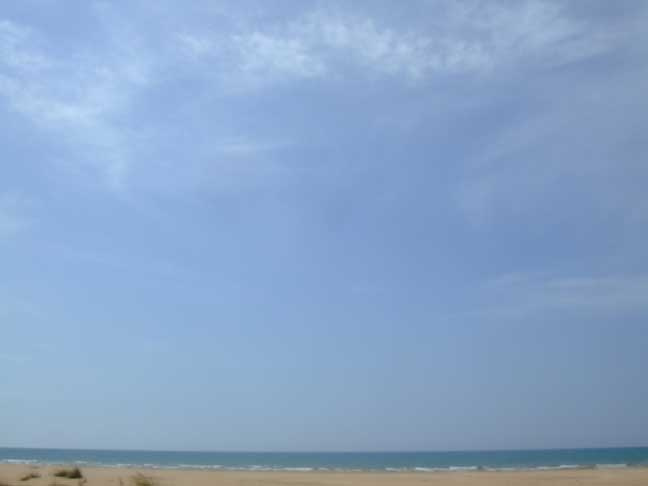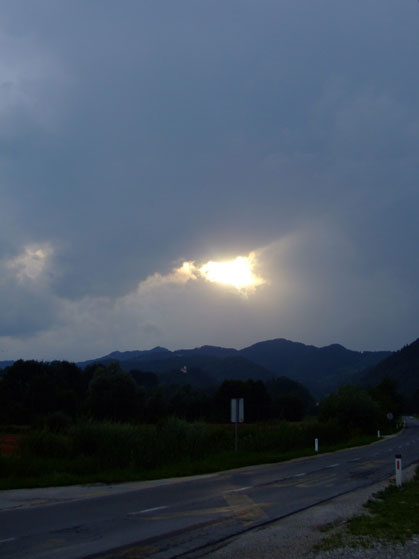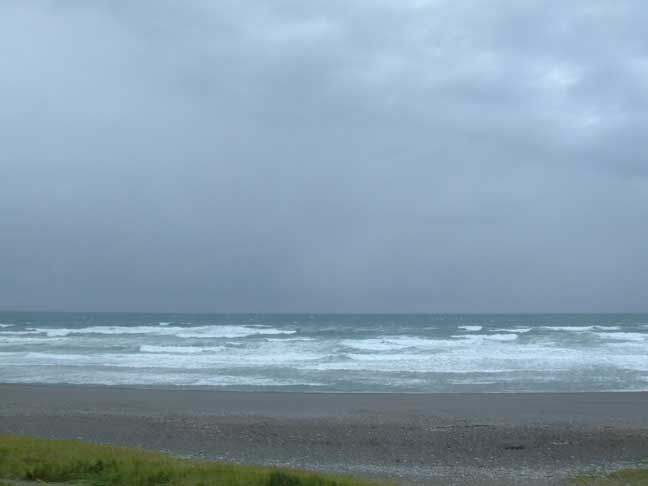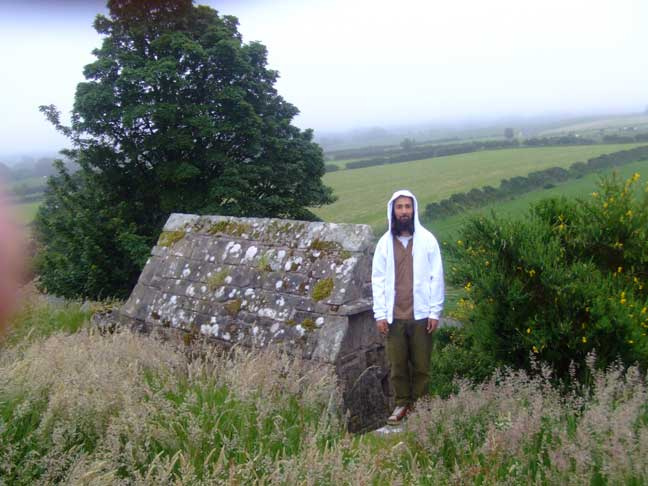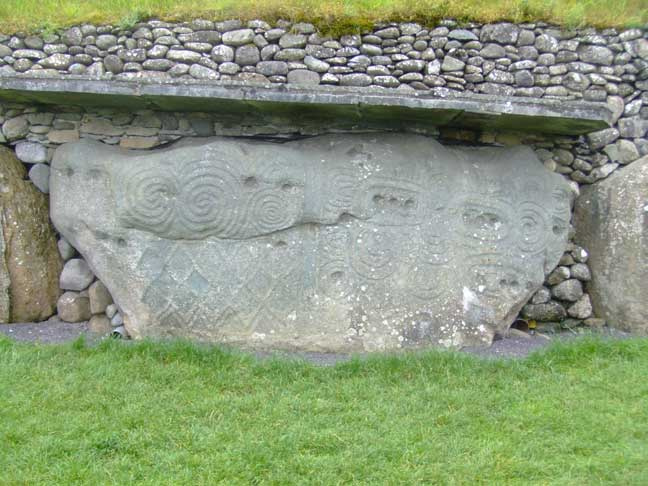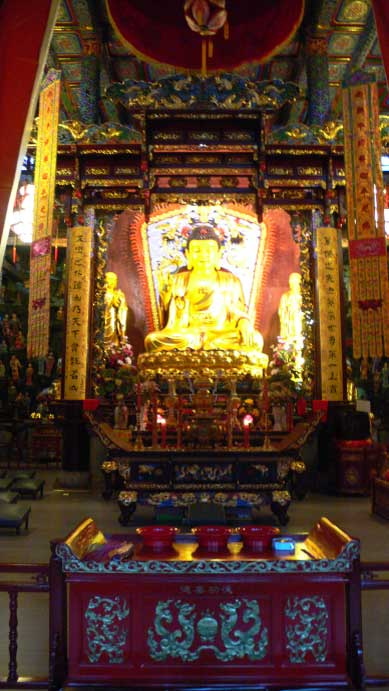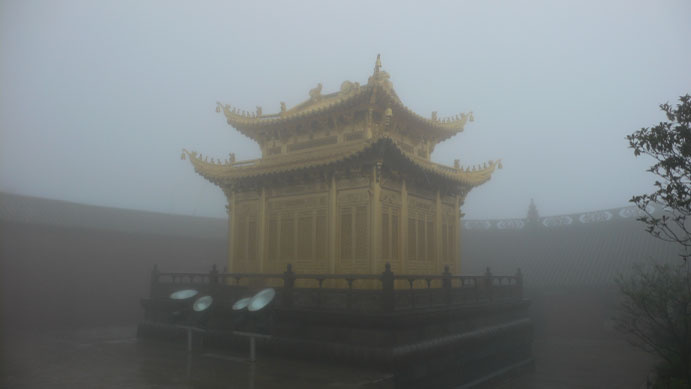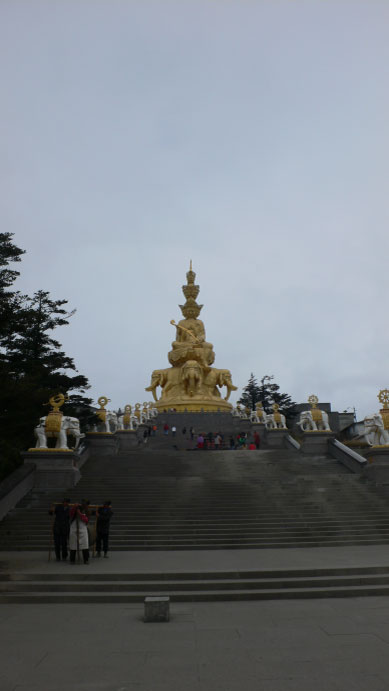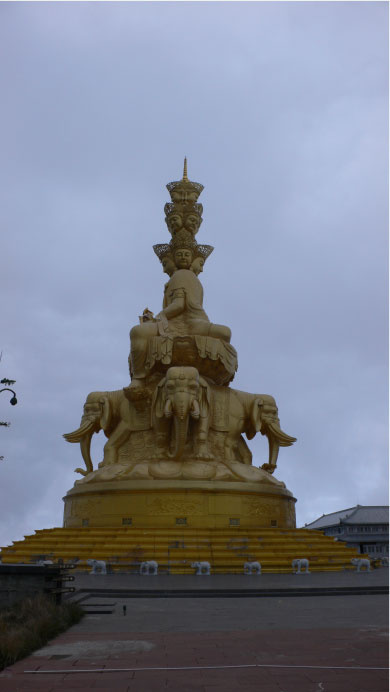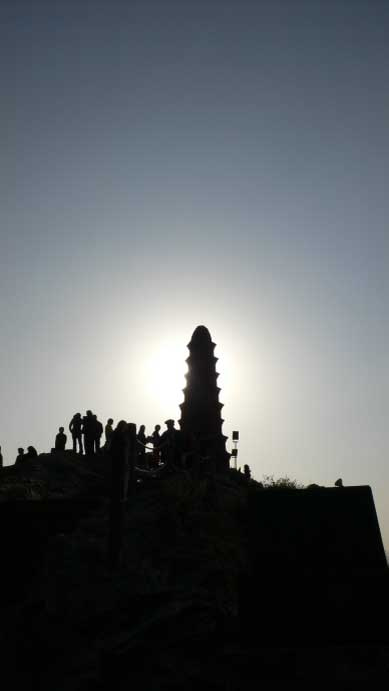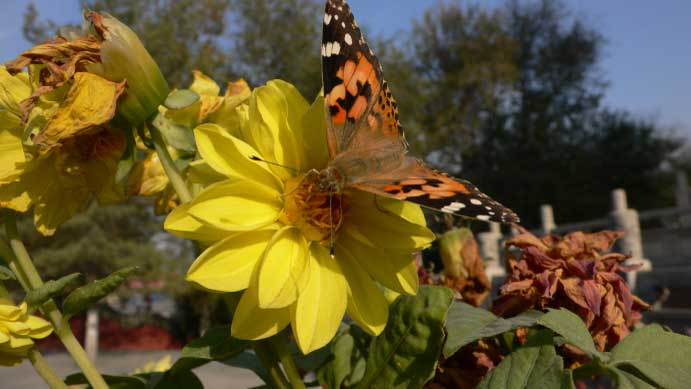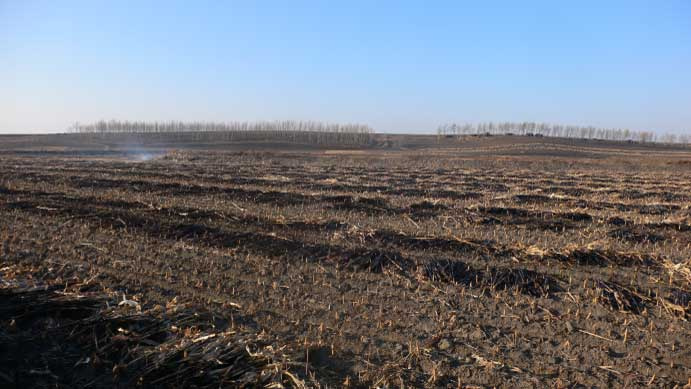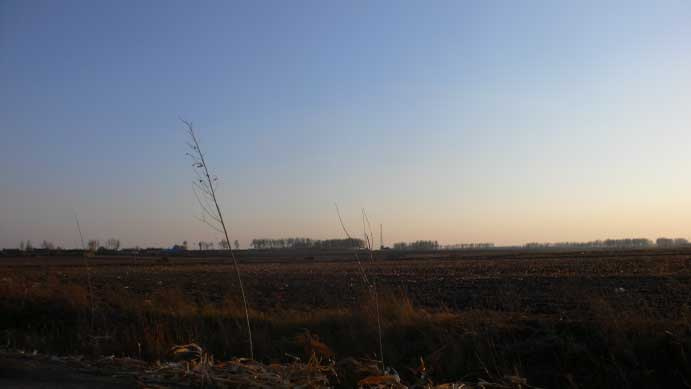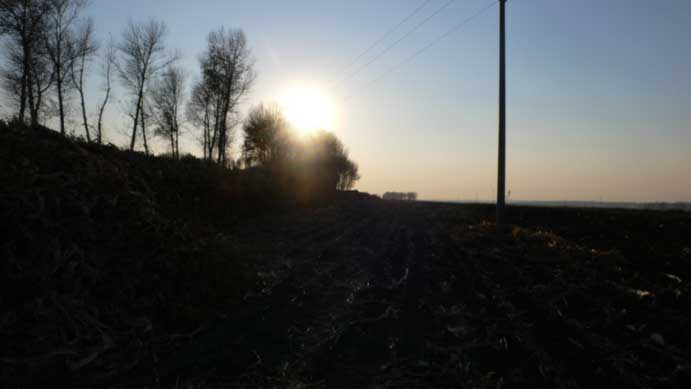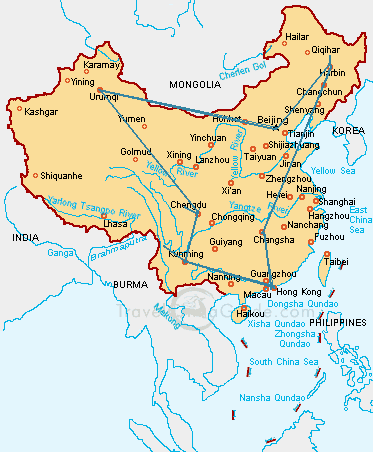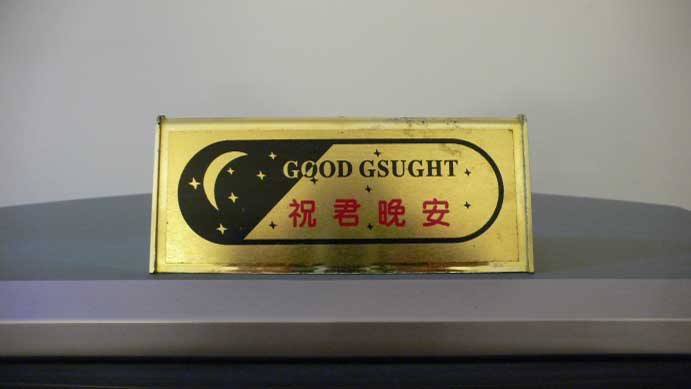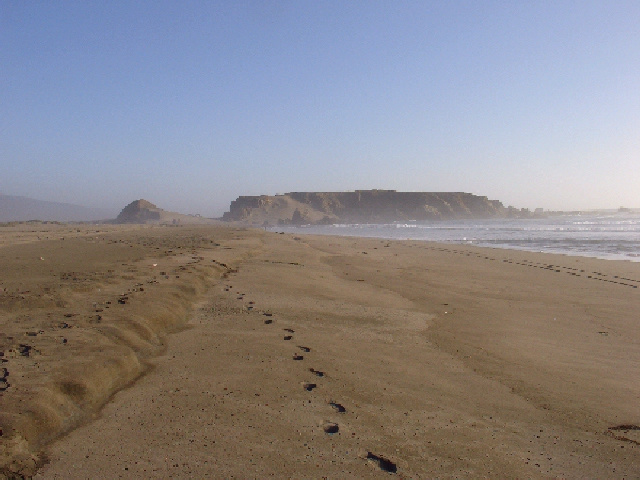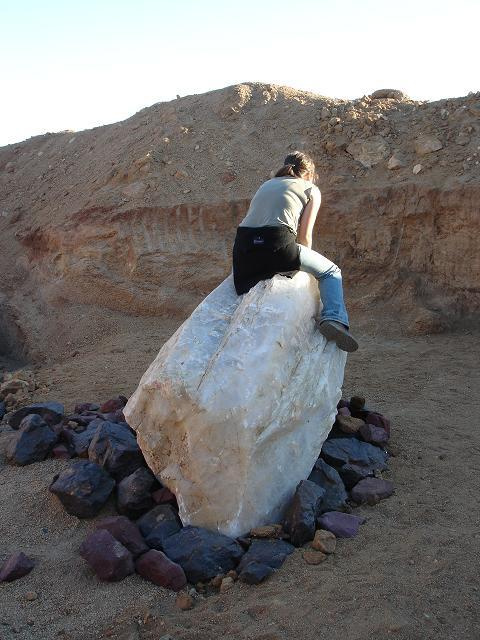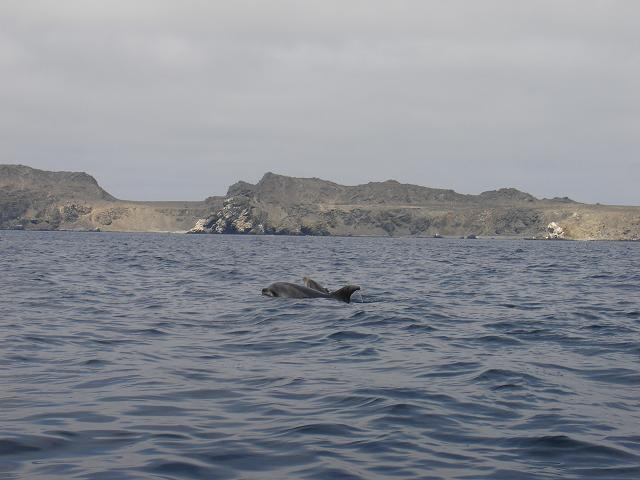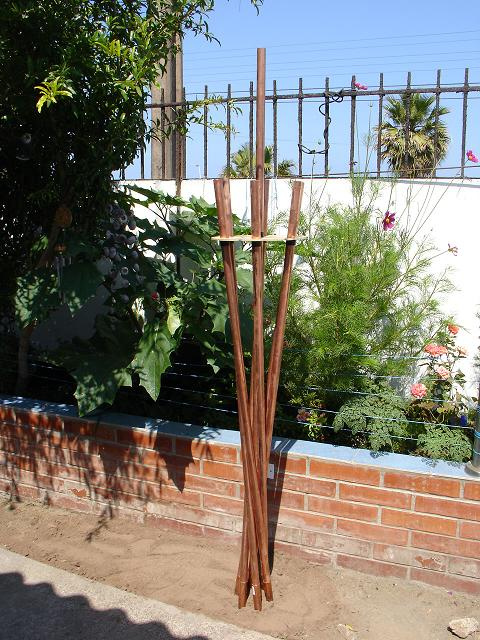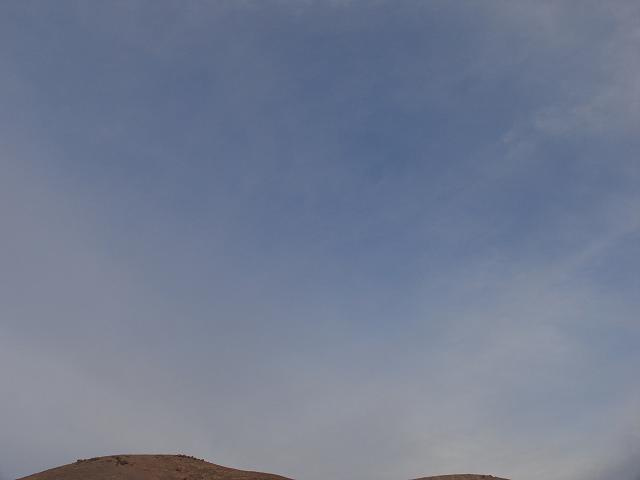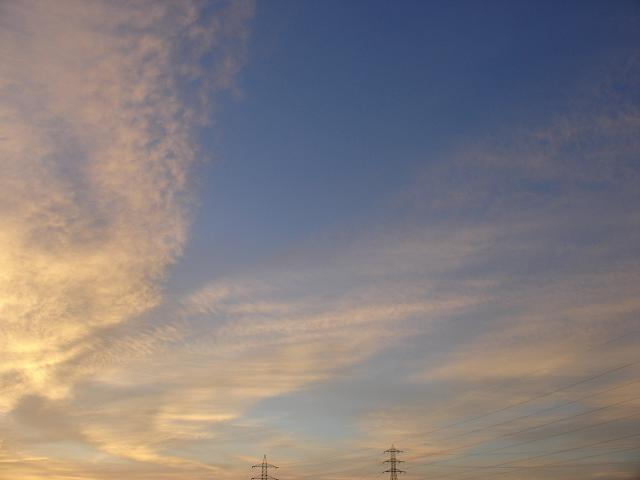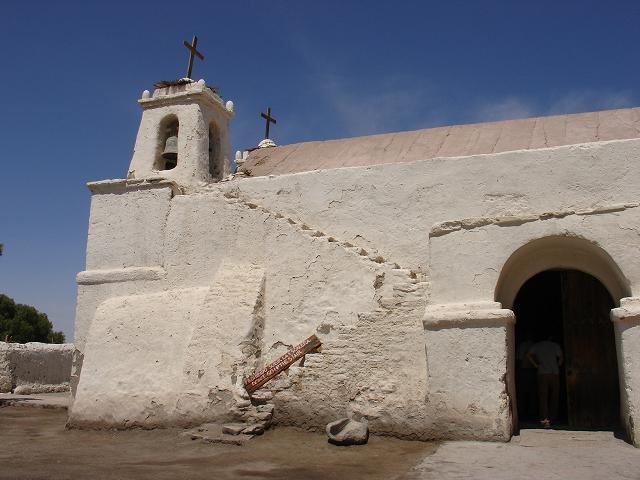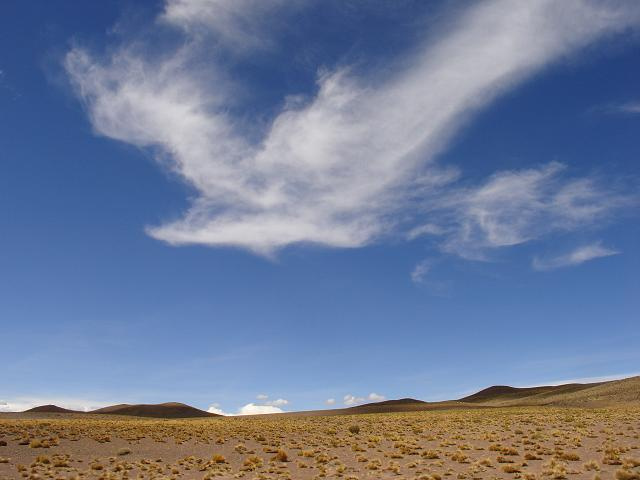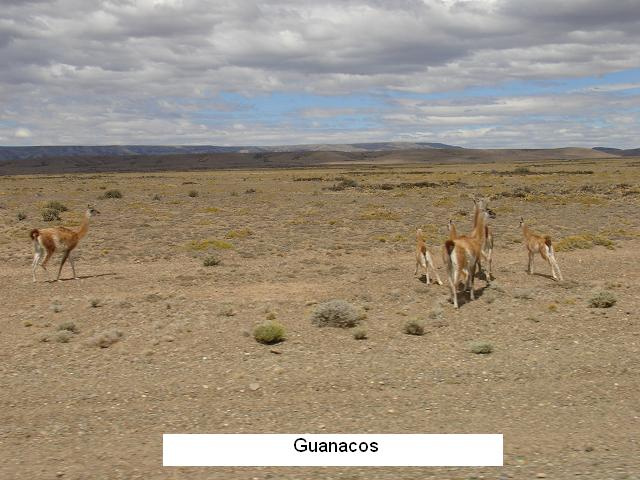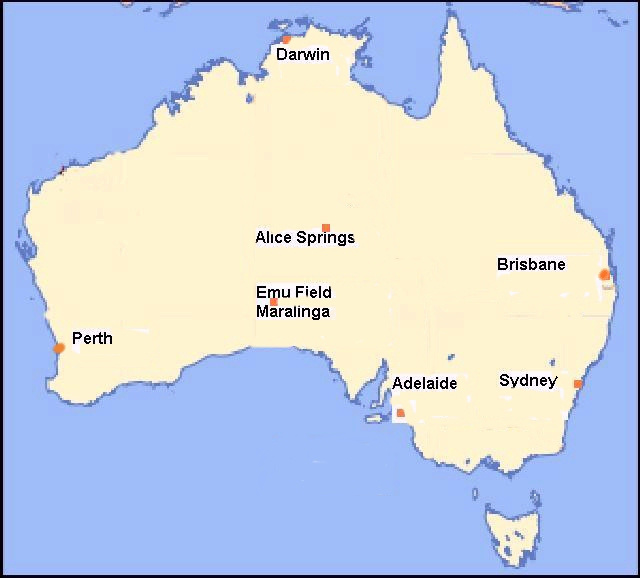14. The Last Two Petals of the Flower over Europe
The second leg of our search for vortices was somewhat circular, from Heidelberg up north and east towards Hanover, north and west into East Frisia, and back south again along the western German border. The plan was to circumvent the great industrial cities of the Rhine-Ruhr region.
Many of the old castles and churches were constructed on high ground, mainly for defence I presume. But it is also the case that vortices of qi coming up from below tend to surface on high ground. And so one sometimes finds both in the same location. The old churches and monasteries were frequently placed on places of power, as well, and this power commonly manifests itself where two lines of qi cross. In a cruciform church, the longer member was called the nave, the shorter member the transept, and the place where these two crossed was the crossing. It was not unusual for one line of sheng qi to run along near the middle of the nave and one along the middle of the transept: thus the crossing was the place of power. One sees this at St. Paul’s in London, for instance, and in the great cathedral in Cologne.On this second leg we came upon the ruins of one of these old churches – built on not such a grand scale as the two just mentioned, but neither was it small, and the plan (with respect to the earth lines) was executed quite nicely. At this period of the trip we were trying to find a latent vortex every 40 kilometers or so. It was a gray overcast day, and we were coming down towards a village, having just visited a vortex about 10 kilometers back. Behind the village was a small mountain and it was plain that somewhere on the mountain was a latent vortex. Normally we would have passed it by, since it was so close to the previous one, but for some reason we decided to look for it anyway. Cesco found a road behind the village leading up the mountain, and we were able to drive up quite near to the vortex. Near where we parked the car was this grand old cruciform church, with roof still intact but with no glass in the windows and obviously long abandoned. While I was tying on my boots, preparatory to finding the the exact location of the vortex, Cesco walked up to inspect the church. He told me later, that after he had entered the structure, a sheng being within approached him, asking for help. As I walked up the incline, I found to my surprise that the latent vortex was somewhere inside the church. Upon entering, I found that there was only one critical point , and that exactly at the crossing. Furthermore, there were lines of qi running along the nave, and along the transept, crossing at the critical point . This was the first time I had ever seen a vortex situated on the crossing of two qi lines.
The local Lions Club had erected a sign on one of the walls of the church relating its history. From earliest recorded times (in this case the times of the Romans), there had been a building at this location. At the beginning of the Crusades there was a castle, apparently owned by a robber baron, which was torn down by the King Frederick Barbarossa. I have forgotten when the present building was established, but it was abandoned early in the 18th century. The paving stones or bricks on the floor were gone, leaving the floor dirt, but the walls and ceiling were still in good condition. Normally at places of power, whereon religious edifices are built, the qi is of a positive nature. And the qi running along the transept here was so. But that running along the nave was not. It was negative, and so we walked outside to investigate. Someone had placed a stone on the qi line, just outside the main entrance to the church, and a date was engraved on it: 184?. So this stone had been placed there over a century subsequent to the abandonment of the church. We used the the six TB Method to try to heal the qi line, and it worked. And now, both lines were positive.
We walked back into the church to the opposite end of the nave, to look around. There, at that end, where I suppose in former times the altar had been located, was a picture of Jesus and two women, presumably the two Marys. Here were old and new flowers, showing that some pious people still visited the place for worship. Near the picture was a sheng being – perhaps the one who had appealed to Cesco earlier. But between this sheng being and the crossing was a powerful sha being. And it was quite angry. I ignored it, and with Cesco, climbed up the spiral staircase of a tower which led up to the roof. After we had looked around, we returned below, where the inhuman unpleasantness yet raged.
And then there appeared another non-material being, but this one had a much more human feeling about it. It was stern, strong, and yet showed reverence and respect for the sheng being. It had come to help me dispense with the sha being. Through my person, it attacked it, and as nearly as I can tell, destroyed it – or at least removed all the qi from it, so that it was no longer detectable. It was to me the most interesting experience of the trip. Unfortunately, I have by now forgotten many of the details. However, when it was over, and the stern entity had departed, the qi in the church had become light, and bright, and joyous.
And so we left to seek the next vortex.
In Hanover, a kind lady Iris and her daughter graciously put us up overnight. She invited a number of others in the city with similar interests over to meet us, and we had a generally good time. Next it was up into East Frisia, where we met the redoubtable Tapiers, at whose very nice house we rested for a day. And then we turned down south again, through the flat country.In hill country, it is relatively easy to pinpoint vortices, for they are most often on the high places, and one can see from afar where the qi hits the surface. On the flat it is more difficult, because the vortices are also on the flat, and though the direction be apparent, it is difficult to tell how far away they are. So one must sometimes drive around a bit until he can home in on the target. One latent vortex turned out to be on a dyke, bordering Holland and Germany, and was actually on the Dutch side of the border. This led us through a small Dutch village, quite different in character from the German towns through which we been passing.
Healing vortices in the industrial areas further south was more difficult because of the urban setting, but we made our way back fairly rapidly to Hahn, finishing a second circuit.
We still had the better part of a week remaining, so we decided to attempt a third circuit into France about Paris. So it was off through Luxembourg, into France, around the capital, into Belgium, down through Aachen, and back to the Frankfurt area.
In Luxembourg or France, I don’t recall which, we found a latent vortex in an old abandoned fort. I suspect it was of the old Maginot line, built after WWI to guard against German invasion. It was a creepy place, and the usually intrepid Cesco was not too enthusiastic about sleeping there. I agreed, and we drove somewhere else for the night.
On our trip north from Paris to Belgium we crossed under the third river of qi, and so we knew that it flowed at least two thirds of the way through France towards the Atlantic.
One night we slept in the car in a parking lot near a school in Versaille. Some police came in the middle of the night, flashed their lights inside our car, apparently coming to the correct conclusion that we were harmless, and drove on.Our only other contact with police on the trip was in Germany, just the day before we left. We were both pretty scuzzy looking at the time, having not had a bath or change of clothes for some days, and I drove into a service station to have the car filled up with fuel. Coming out after paying, I saw that Cesco was speaking with a couple men and a woman. Turns out they were plain clothes police, who had picked us out for possible drug peddlers. They warned us to show them any contraband we might be carrying, saying they had a dog which could smell it out. We of course had nothing to show them, but they painstakingly searched our stuff. I felt sorry for the woman who had to go through my dirty clothes. They were curious about the TBs we had left, but we told them they were feng shui devices, and they seemed satisfied with that explanation. Eventually they figured we were harmless, if a bit odd, and sent us on our way.
Here is a map showing the approximate area of the canopy when we left Europe.
15. The Sky of Japan
After catching up with work at home, I left in mid-September to meet Ed in Japan.
Japan’s island of of Honshu contains two of the most densely populated areas in the world: the Kanto area , which includes Yokohama and the present capital Tokyo; and the Kansai area, with Kobe, Osaka, the ancient capital Nara, and the old Kyoto (the capital from the eighth century to the Meiji Restoration in the middle of the nineteenth century). It was the latter region into which my plane entered, from the Pacific into Osaka Bay, and thence to Kansai Airport.
When my plane neared the coast of Japan, I was struck by the negativity of the qi in the skies: worse than I had ever seen before. It was not just slightly negative, which seems to be the common condition before formation of a sheng canopy , but negative to the point of causing pain to the non-material sky entities .Ed put up with me in Kyoto for a full month, while we worked to gift the southern half of the island of Honshu. Ed lived in an old-style wooden Japanese house, built in the early part of the 20th century, with tatamis, an indoor privy, spiders, a loft, and shoji doors. It was part way up a hill, and required a bit of effort to reach, so anyone living there was likely to be in reasonable physical condition. Ed’s CB was further on up the hill, and when he took me up to see it, he surprised me by holding up a stick to push spider webs out of the way. “What a sissy!” I thought. But I was using the same technique myself within a day’s time. The spiders were large, ugly, and numerous along the wood-paths.
To the north of the Kansai lies mountains, then the Wakasa Bay region with its many nuclear plants, and then the Sea of Japan. Because large metropolitan areas seem to be a magnet for sha qi , and because nuclear reactors create sha qi , this whole area from south to north seemed to be a desirable place for creation of a new sheng canopy , if possible.
There are many Shinto shrines in the region, and forests of cedar and pine in the mountains which come down to, and intermingle with, the cities. Vortices tend to surface in the high places, and so Ed and I were to be much among these things during the first two weeks.
Most of the shrines housed respectable sheng beings, some holy. One of these was just by the second vortex Ed and I opened. This one was special, just as was the church Cesco and I had visited a month and a half earlier in Germany. In that case, as this, the latent vortex touched the surface at only a single critical point .We commenced work in the Region west and north of Kyoto, and thence to mountains further north and to the west of Lake Biwa, Japan’s largest lake. One experience which will stay with me for as long as my memory remains intact, occurred on one of these mountains. Eddie, a Japanese friend of his, and I, took a gondola car to the top of this mountain, only to find that the latent vortex sought, was not there, but on a neighboring peak. So we climbed down the one, and up the other, the last part of the trip bushwhacking with no trail. By the time we had found and opened the vortex, and retraced our steps, the gondola was shut down for the day, and so we had to walk all the way to the bottom of the large mountain. It took about an hour and a half, the last half hour in near darkness. Finally the trail opened up onto an old road and we could relax our concentration on the ground somewhat. Above was a full moon: huge and orange, with its reflection on Lake Biwa down below, long, rippling, and beautiful. The Japanese friend said that this was unusual, and in olden times would have required composition of a heiku. While they were looking for their cameras, I turned around toward the top of the mountain we had been descending, to check out the qi of the new vortex behind. Simultaneously, a tall sheng being appeared at the top of the mountain, apparently looking down upon them, with presence commanding great respect.
It turned out that that vortex was not the usual kind that swirls qi directly up, but of that sort that sends a river of qi off in some direction. Here it flowed south, over Kyoto and Osaka towards the Pacific. The next morning, there was in the sky the beginnings of a sheng canopy , in the shape of a narrow triangle, one of whose sides was bounded by this river of sheng qi .Next, Ed and I journeyed north to the Wakasa Bay region, opening enough vortices along the coast to surround most of the nuclear plants. The last one was a mountain on a peninsula, and we began the climb just before dark. The trail petered out about three quarters of the way up, and the slope increased to about 45 degrees. Earlier in the day, Ed had found at one vortex site a snake skin about 7 feet long. I thought on the snake as I crawled on all fours up this slope, piercing big spider webs with my head. Ed waited below at the end of the trail with his friend, building a small temporary fire to discourage the mosquitoes which had come out for dinner. It was utterly dark by the time I reached the latent vortex. Fortunately I sense these things by feel, and so was able to open it. I was thankful however for Ed’s fire, for direction, as I made my way back down the slope.
Next day the sky was a little less negative and the sky entities less in pain, but it wasn’t until the region to the east of the Kansai, including Nara, had been gifted, that the canopy really opened up and the painful sha qi in the sky disappeared. The last few days of this process involved opening vortices on both sides of Osaka Bay, including an island off the coast across from Kobe, which we reached by ferry.
The final sortie was to Mount Kokko north of Kobe and west of Osaka, where the latent vortex turned out to be on a golf course. Fortunately the vortex was out in the rough, where I could dig the in TBs (I also picked up a couple golf ball souvenirs).The next day I noted that sheng qi was just entering the tips of the trees, penetrating about an inch. The timing for this to happen was very similar to that which I had observed in Heidelberg a month and a half previous.
On the day after that, the morning was wonderful, for there were real sylphs out, all over the sky above Kyoto, and to the east: wispy clouds with sheng beings in such number as I had not seen since that day on the Palouse fourteen months before, the day previous to the formation of the sheng canopy I had ever witnessed.
Why had the skies above Japan been so negative? I had thought long these past few weeks about what might be the reason for these bad skies. One possibility which occurred to me, was the heavy industrialization, combined with the concentration of population. But there were similar conditions in the Rhine/Ruhr region in Germany, and the sky there, though clearly negative, had been not nearly so bad as that above the Kansai. It turned out that I had to go to Hiroshima to learn the answer.
A clever Japanese inventor named Tetsuzi has been working with orgonite. He had posted about his agricultural experiments with it on Greg’s forum and elsewhere. He invited Ed and myself to come visit, and so this week we travelled to Hiroshima where Tetsuzi-san lived. When we arrived in the city, I was surprised that the qi in the heavens was even worse than it had been in the Kansai.
Tetsuzi-san met us the morning after our arrival in the city. It is the custom when visitors come to Hiroshima, for their hosts to take them to the the Peace Park downtown. The major part of the Peace Park, is a permanent exhibition of the history and effects of the first atom bomb dropped upon a human population. And it was thither that we were taken. It is difficult to comprehend how anyone who visits this place could be quite the same afterwards.
At the beginning of August of 1945, the Japanese were fighting a losing war against most of the rest of the world. Their allies Italy and Germany had surrendered in Europe, and eventual defeat was all but inevitable. To insure that the Soviet Union not be part of an invasion force into Japan, and thus that it be excluded from post war occupation, the US decided to shock Japan into capitulation by dropping an atomic bomb. Supposedly Hiroshima was chosen out of a group of possible targets by the fact that there were no American prisoners of war interned there.
There were however Korean and Chinese enforced laborers present, and a number of these, along with Japanese Junior High School children, were out working in the city at 8AM on August, 6 busy demolishing buildings, so that fire lanes would be open in the event of fires being started by possible American bombing. At 8 o’clock also, the city’s elementary schools had begun classes for the day. At 8:15 the US bomber Enola Gay dropped an atomic bomb over the city, which exploded about 650 yards above the main hospital in downtown Hiroshima. A pressure of several hundred thousand atmospheres was created, and about 550 yards from the hypocenter, it struck surfaces with a force of 19 tons per square meter. Most buildings were crushed and and people thrown through the air. The temperature at the center was about 2,000,000 degrees Fahrenheit at the instant of detonation, creating a fireball which reached a diameter of about 300 yards. The temperature at the surface was about 10,000 degrees Fahrenheit, and the people subjected, turned to ash nearly instantaneously. Those people not killed by the concussion or heat within about 4000 feet from the hypocenter, were subjected to such extreme radiation that most died within a few days. By the end of 1945, the death toll had reached to about 140,000 out of a city which had had a population of about 350,000. And many more died later of after-effects, such as various cancers and leukemia.
Most all of this was explained at the exhibition hall, along with much other detail, models, and photographs. But what was not explained, because it is not generally known, is the damage that was done to the etheric realms and their resident entities up in the heavens above. But I had observed, before entering the exhibition, that the entities in the sky were in considerable pain. And so I noted with care and curiosity the photographs taken of the sky before the explosion, during the explosion, and afterwards. The pain was not present in the “before” photos. In fact the sky felt much the same as it does now in most places where there is no sheng canopy overhead. And just after the explosion, when the mushroom cloud was expanding, there was still no visible pain in the sky above the clouds. But in the photographs taken after the fireball had consumed itself, and the destruction was complete, the sky was horribly negative, much like it appeared when we entered the city, 60 years and two months later.
So it seemed that the bad skies over the Kansai, and the worse skies over Hiroshima, may have been effects of the atomic bomb explosion over Hiroshima, and that later over Nagasaki.
In the afternoon Ed and I visited Hiroshima Castle. This castle was a national monument which had been destroyed by the blast, but it was later rebuilt by the Government in the early ’50s. While we were on the grounds heading for the entrance, several sylphs appeared, their bodies in pain, but their heads in sheng qi , as is usual. It seemed like a greeting. Ed later sent me a good photo of one of the sylphs:
From the top floor of the castle was visible most of the city and its suburbs. In particular there were visible two latent vortices, on opposite sides of the city. Later that day, at dusk, Tetsuzi-san drove us to one, and on the morrow, to the other. Thanks to Tetsuzi-san’s knowledge of the city, and his kindness, Eddie and I were able to initiate the process of returning sheng qi to the city’s skies. On the way back to the Kansai, we stopped every so often to open a latent vortex with the intention of extending the sheng canopy begun earlier, back to Hiroshima.
Ed and I visited a friend Larry in the Nagoya region after our return, and the sheng canopy had now extended over that area. Larry was an excellent host, permitting me to stay at his home overnight, driving me to a critical vortex site northwest of the town of Toyota, and setting me on the train to Nagasaki. I wanted to visit this town, because the second atomic bomb, exploded for destructive purposes, had been dropped there, and to see if our attempt to extend the sheng canopy to Hiroshima had been successful. Nagasaki is actually in the southwestern island of Kyushu, but one passes through Hiroshima on the way from Kyoto.
Since the sky over Hiroshima had been the worst I had ever seen, I naturally wondered if that over Nagasaki would be as bad. I was rather surprised to find that it was not. The sky was negative, more so that one would expect to see in the US or central and western Europe, but not nearly so negative as that which I saw in Osaka when first I arrived, and much less that it had been over Hiroshima. The Nagasaki bomb, dropped three days after the Hiroshima bomb, was somewhat different: it was based on plutonium instead of uranium. Also there were fewer immediate casualties: about 70,000 I believe. This is not meant to understate the gravity of the destruction of Nagasaki. The photos in the museum near the Peace Park there are horrible.
I found a latent vortex in the city, and since I was on foot this time, that was all I could handle. It’s was on a small mountain, not all that far removed from the hypocenter of the explosion. Some hours later, after visiting the museum and boarding the return train, I observed that though the state of the lower sky had not changed much, the upper heavens had already begun to turn positive.
On the way to Nagasaki, and on the way back, the train passed through Hiroshima. I was able to observe that the sheng canopy had reached Hiroshima from the Kansai, and so had been extended nearly 70 miles west.On my last full day in Japan, Ed and his friend took me up a beautiful trail, to the top of a mountain some distance west of Lake Biwa. The weather was beautiful and the sky blue, with any new chemtrails dispersing rapidly.
As we emerged out of the woods onto the summit, we saw directly overhead, extending several miles in each direction, a company of sylphs. It seemed almost like a farewell gathering:
The extent of the sheng canopy in Japan, as nearly as I could tell when I left, is outlined on the following map in red:
Here is a part of Ed’s take on our time together:
Most of the information that i’m posting now was lost on the ethericwarriors site, so i’d like to get it back in the public record.
Before Laozu arrived in Japan, I had only met him for a grand total of 10 minutes at Don Croft’s place in Idaho. During that brief conversation, I invited him to Japan, and thankfully, he took me up on the invitation. In preparation for gifting the vortices of Japan, he shipped off 2 boxes of TB’s well in advance of his arrival. Neither box arrived by the time he did. Fortunately I had enough TB’s around to get started, and it seemed as if there was an endless supply to draw from, and I kept finding just enough before each new gifting day. When those ran out, we made more (and 2 TCB’s as well). Laozu would spot a vortex (or rather, feel it) on top of a hill or mountain and we would be off trying to get as close as possible by car, and then on foot, usually scrambling through dense brush, but sometimes following a well-marked path to a Jinja shrine or Buddhist temple where the vortex would be conveniently located right on the temple grounds. When we came across a shrine or temple, Laozu sometimes would feel the resident Spirit of that place. He startled me and my friends on several occasions when he would break into beautiful song in respectful communication with this local Spirit. The language of the song was unknown to me; it seemed to contain elements of both Chinese and Japanese phonemes, but Don posted that it might be an Andromedan language. On Laozu’s last full day in Japan, my Japanese friend and I showed him a series of beautiful waterfalls where I have hiked, camped, and gifted many times before. I had been meaning to take him there since he first arrived, but circumstances seemed to prevent it until the last day. As luck would have it, he felt the presence of a vortex at the top, and we were off on the hardest scramble so far through dense brush. We were rewarded with a parade of Sylphs at the top and the photos are already part of this thread. On the way down, we stopped at a waterfall where I have camped and gifted before. Laozu felt the presence of an Undine, so I asked him to ask this water Spirit if my TB gifts were appreciated. I saw Laozu almost get bowled over with the reply, a forceful, joyful ’’Yes"! That for me was a wonderful confirmation.
During his stay in Japan, we spent nearly every day gifting vortices in both remote areas and downtown urban areas. I’d like to express gratitude to my Japanese friends (who prefer to remain nameless) and to Larry in Nagoya for their wonderful generosity in helping Laozu. The skies above Western Japan are no longer in pain.On the trip home from Japan, my plane flew into San Francisco, and so I was able see the state of the skies there as of mid-October 2005. The skies there and then were covered by sheng qi .
Later, on October 23 I crossed the State of Washington to Seattle on I-90 and so had opportunity of observing exactly where the second river of qi passes south to north. It crosses I-90 a short way west of Ellensburg on the way to Cle Elum.
16. Taiwan, Autumn of 2005
Home safely from Japan, my thoughts turned to Taiwan. My friend Luke (Su Jingsong) had suggested I visit, and the weather in November is usually good in Taiwan.
My good friend Lapping Wong, originally from Hong Kong, had become interested in helping with the vortex opening. He had personally helped me open a latent vortex not far from Ryegrass, above the Columbia River, in 2004. In 2005 he bought my airline tickets to Europe and Japan. Now Su bought me a ticket to Taiwan.I landed in Taipei on the first day of November, with the goal of generating a sheng canopy over Taiwan. The qi in the heavens when I landed was not so bad as it had been in Japan a month and a half earlier, but perhaps a little more negative than that in the heavens above most of the US.
Many people helped me with this project. Besides Luke, an inventor and ME professor at China Institute of Technology in Nankang, foremost were Professor Zhuang Zhenliang of National Taiwan University (Tai Da), Zhang Bincun of Academica Sinica in Nangang, and Professor Chen Jinzi also of Tai Da.
Luke drove me around Nangang, up north to Geelong, down along the east coast to Hualien, up over a typhoon damaged road to Alishan, down south inland to the southern tip of the island, and then back up again along the western coast.
Zhang and Zhuang picked me up at the airport, put me up at Taizhong, and drove me around that area to open my first vortices on the island. Zhuang took care of my lodging for six nights in Nangang.
Chen drove me around Taipei and the Yang Ming Shan area of Northwestern Taiwan, and put me up for the rest of my stay in an apartment he owns in Taipei.It would be difficult at this point to give a sequential history of my activity there. By the end of the first week, there had appeared a sheng canopy in the heavens over Taipei and environs. By the end of the trip, the sheng canopy covered all of the Taiwan except the extreme southeast part of the island. I will mention a few vortex-hunting episodes:
There was in particular one important latent vortex which would not have been opened without Professor Chen. It was at the top of a hill in a gated community in a wealthy area of Taipei. We drove to the two separate entrances, and were turned back by the guards at both. Finally Chen demanded to speak with the President of the building association, and persisted until the guard phoned him up the President, and persuaded him to come down to the entrance. Chen identified himself as a Professor at Tai Da (which is quite prestigious in Taiwan), and presented me as an American expert in feng shui, who had come all the way to Taiwan to treat certain places having special qi . Finally the President agreed to take us up to the top of the hill. In retrospect it was a good thing he was with us, for there was a high chain-link fence around the summit of the hill, and the President had a key to the gate. I rushed up the remaining slope and began placing TBs on the critical points . The building association President reached the top just as I was planting the last one, and wanted to know what I was doing. So I told him. Surprisingly, he believed what I said, and thanked me for coming to his island to open the vortices.
In the Yang Ming Mountain area there was a latent vortex just where the jungle met a mountain meadow. Chen and I tried the meadow first, but the grass was taller than ourselves, and so thick that we could make little headway, even with machetes. So we took the dense jungle option, the lesser of two evils, and eventually made it to the vortex.
Eagerly running down a sand hill toward a latent vortex on the western side of the island, I tripped on a root, and after a short but abrupt flight, had the wind knocked out of me as I hit the beach.
Driving down the eastern coast with Luke, we came to a latent vortex north of Hualien, just before dark. It was on a steep hill in the jungle, and I underestimated the time needed to reach it. Halfway there, it became so dark I had to give up and head back. Couldn’t find the return trail, so had to keep to a ravine and work my way by feel. Unfortunately what I was feeling was nettles, and by the time I reached the road, I was so covered with welts, I slept very little that night. Next morning in the daylight, we found another, more easily accessible latent vortex.
In the south of the island one late afternoon, I felt a latent vortex from the highway. After some wandering about awhile on country roads, we eventually came to it. I was elated, for this vortex was on a medium-sized hill, and not too far from the road. Luke stayed with the car at a parking spot on the side of the road, while I took off. It would only take fifteen or twenty minutes I thought, so I did not bother with a long-sleeved shirt or a hat: it was hot and muggy that day. When I reached the hill, I found it was an old grave yard. I hadn’t seen the graves from a distance, because the hill was covered by thorny vines: the thorns gripped any flesh with which they came in contact, almost as if they were sentient beings. I had to climb very slowly up the hill – both to keep from making a false step and falling onto a grave, and to avoid having my skin torn away by the vines. It was an hour or so before I reached the vortex near the summit, and by then dusk had begun to fall, and the mosquitoes had come out. With no hat and shirt, and an inability to move quickly, I was at their mercy, of which, of course, they had none. By the time I got back off the hill, my skin was pretty much equally divided into bloody cuts, and insect bites: another night with little sleep.During my stay, Luke and I built what may have been the first CB on the island. Now there are more. I know of one in particular, in the yard of another professor friend of mine near Tai Da.
I had spent two years on the island in former times: the first back in 1983-1984 and the second in 1990-1991. It was good to see so many of my old friends again, and once again enjoy the good food.
The return flight to the US had a stop-over at Tokyo. I found that the sheng canopy over the southern half of Honshu in Japan had extended north as far as Tokyo. The sheng qi was weaker here than over Osaka, but it was present.
When the plane took off from Tokyo/Narita, I intended to watch carefully to see how far this high canopy of sheng qi would extend into the Pacific to the east. I was rather surprised to find that it wasn’t until the plane reached a region southeast of the Kamchatka peninsula of Russia that I could detect the edge of the sheng canopy to the north. In the map below, the approximate plane route is indicated by a red line. The solid yellow line approximately indicates the observed northern boundary of the sheng canopy , and the yellow dots indicate area where the sheng qi was observed on the flight back to the US:
Thus the sheng canopy over Japan was now connected to that over the Pacific Coast in the US. I cannot say at this time, what caused this to occur.
17. Southern Africa, Spring of 2006
It was now the latter part of November, and it was snow time was on the Palouse Hills. Vortex opening would be on hold until February, when the weather would become milder again. Georg Ritschl, who has done so much for Africa, had several years earlier invited me to visit his family in Johannesburg. It came to me that it was about time to take up his offer.
So in mid-February I set out for South Africa. I had to change planes in Amsterdam, and the Amsterdam-Johannesburg flight passed over France and the Mediterranean.
I observed that that the European sheng canopy , which had been in the shape of a three petaled flower a half year earlier, now extended as far as Nice on the coast.
Over North Africa the high qi of the sky was more negative than it had been in Europe before advent of the sheng canopy , but less negative than that of Japan had been.Georg picked me up at the Joburg airport, and we began work the next day. For about five days, he drove me about the greater Johannesburg-Pretoria area and suburbs, opening latent vortices, and near the end of that period a sheng canopy appeared over the region.
Now we began to travel a bit further away from town, and it was at this time that we visited the most interesting vortex of the trip. Georg knew the owner of a rock and gem store northwest of the city, and he stopped to see what the man had on hand.
The owner told us a story about some Peruvian shamans, who had a school in Capetown. They brought their students from time to time up to the vortex in the area, because of the strong qi there. They had told him that it was even stronger than anything they had seen back in Peru. They had described to him where the vortex was located, and he drew a map for us.We found what we thought was the place: a natural amphitheater on a mountain in the Magaliesberg range. There was already a swirl of qi around the amphitheater (clockwise looking down at it), but beneath the ground there was a feeling that was not entirely good. While we sat resting from our climb, a sheng being appeared and directed me to place TBs in appropriate places on the site. Georg remarked on the immediate increase of “energy” directly afterwards.
There was, however, still quite a bunch of sha beings about. A second sheng being came to assist with their removal.
Typically, when a latent vortex is stimulated with TBs , a swirl of sheng qi rises into the air spiraling up. With this vortex, sheng qi poured from the sky above directly into the ground near the center of the amphitheater–not spiraling. The shape of the space in which the sheng qi was pouring down, was conical, but the sides were considerably steeper than those of the cone of the up-spiraling sha qi of a normal open vortex.
Eventually it was time to leave, but we intended to return again, sometime before I left Africa.The extent of the sheng canopy was now such that we had to plan for a trip farther away from home. Three years before, Georg had been up to Zimbabwe, and his stories of the area had excited my imagination. We decided to take a circle route: west to the southern boundary of Botswana, north through Botswana into Zimbabwe, east across Zimbabwe, and south again past Pretoria and back to Johannesburg. It would take ten days or so, and we bought provisions for the trip, including corn meal for trade and gifts, and fuel cans for carrying extra diesel. Georg’s pickup truck used this type of fuel, and he knew that in these days, diesel was likely to be unavailable in Zimbabwe. The latent vortices visited on this trip were too numerous to describe here, and I will only mention the more interesting ones.
Not too far west from Joburg, we found a latent vortex situated on a high hill in the bush, on private property. Georg stopped the truck just off the road. I had just climbed over a locked gate, when the owner of the farm and his wife drove up. Fortunately the farmer and his wife were gracious, unlocked the gate so Georg could drive Tata II (Georg’s pickup) onto the property, and closer to the hill. He left the key to the gate with us, requesting that we lock the gate when we left later. We parked in some woods near a kraal, and after opening the latent vortex, ate lunch there. This was somehow characteristic of the trip to come, in the kind treatment we were to receive throughout (with exception of our crossing into Zimbabwe).
On this first leg of the trip, the vortices generally required more effort to reach, since the country was hilly, and vortices tend to be on hills, when such are present in the landscape. Georg however, perhaps from his many missions gifting towers, has a gift for getting his vehicle where he wants it to go, and that saved us considerable time. One of the high points, from my point of view, was meeting with a Kudu in the bush, on our hike in to one vortex. We crossed the South Africa/Boswana border near Lobatse about dark, and passed the first night in a motel on the Botswana side.
The people in Botswana were friendly, and seemed to be on the way up, economically. The capital Gaborone was busy and growing. Somewhat north of that city we found a latent vortex on a hill not far from the road, but the place was gated and fenced. We drove in and found workers preparing to go out to work in the fields. It was a Government farm, and strictly speaking, visitors were not allowed there; but Georg spoke with several of the workers about the vortex mission, and a couple of those who seemed to have more responsibility than the others, told him that we could climb up the hill. It turned out that the latent vortex was not far up the hill, and upon return, a number of those still at the farm’s living quarters, came out, curious to see the two white visitors. Georg explained about what the TBs do, gave one of the men a TB , and soon most of them wanted them. We had not enough for everyone, but he gave out quite a few.
In general we made good time through Botswana. The terrain was somewhat more level than it had been in South Africa, and it was often possible to find vortices not too far from the highway. And when we had to leave the main road, there was frequently a farm road with an unlocked gate.
The last vortex we gifted one evening was out in the bush, but there was a nice open flat space, and we decided to exploit the good weather, and camp out. It had been raining off and on since my arrival, and only that day had the weather been really fine. Georg cooked us a good dinner over his cook stove, and set up the tent. I tried to start a fire, but the wood was too wet, so Georg poured on a little diesel, and we enjoyed a campfire into the evening. Just before bedtime, the wind came up a bit, and a thunder and lightning storm blew up off to the south, where the opened vortices were strung out. After enjoying the spectacle for an hour or so, we jumped into our sleeping bags. I, at least, fell asleep immediately. Sometime later I was awakened by the tent flapping, and the sound of heavy rain drops. Gradually it turned into a downpour, and by morning, water was under and in the tent, and in the sleeping bags.
The dirt road outside was a mess, we high-centered and got stuck on the way out, and Georg had to walk to the highway for help. Fortunately, he found a couple in a 4x4 truck who came to try to pull us out. But the 4x4 almost got stuck as well. After an amount of digging (with only a trowel), and various other unsuccessful muddy expedients, more people showed up with a regular shovel. About five huskies (including Georg) lifted the left rear quarter of the pickup off the ground so that tree branches could be thrown under the wheel. Eventually we got out and back to the road. The rest of the day it rained, but we managed to get several latent vortices opened (though in one cornfield I had to wade in up to my knees). The conclusion of the day was a three hour border crossing into Zimbabwe. The Botswana side was no problem, but the Zimbabwe side was bad. One of the problems was the currency. Inflation had been so severe that Georg had to pay 482,000 Zimbabwe dollars just to purchase obligatory highway insurance. And the exchange did not even issue actual currency – just checks for the currency, checks which had already expired formally at the end of 2005. This inflation was to increase in later years, and by spring of 2008 (when I am updating this chapter), the number of Zim dollars for this insurance would have been about 5,000,000.
Not far from the border we found a motel where we could stay the night, and try to dry a few clothes.In the morning we drove into the city of Bulawayo, to make a few purchases, and then we headed into the Matopos Hills, which Cecil Rhodes had liked so much that he had had his remains buried there. It was drizzling as Georg drove into the hills. The first lengthy stop was the huge rock formation which contains the graves of Rhodes and his henchman Leander Starr Jameson.
Several years before, Georg had made friends with a noted Matebele rainmaker in the area, and we had with us in the pickup a CB which was intended as a gift for him. Luckily, one of the attendants at the grave-rock knew the man. He told us that he had died sometime back, but agreed to take us to where his widow lived, later in the afternoon when he got off work.
The rain and wind had turned stormy, and the guide-gatekeepers were more than willing to let Georg and myself climb up to the graves unattended, and indeed we had the place to ourselves. Georg had gifted the place when he had visited before with TBs , but this time, with no observers, we were able to secrete an HHg quite close to the grave.
I noticed that there were two lines of qi in the ground, crossing over the rock. One, a sheng line , passed close by Jameson’s grave. The other, a sha line , came from a sort of valley in the distance, but crossed the first some twenty meters or so from Rhodes’ grave.
I also observed that there was a latent vortex not too far away in the hills.After descending the grave rock, we found an inconspicuous place on the sha line where there was sufficient soil to bury a ring to 6 TBs and so change the character of the line to positive .
After getting permission from the caretakers to roam about the hills, we headed off in the direction of the latent vortex. We found it on the top of a hill some distance away. The top of the hill was ringed by a circle of rocks, which made it look like a fortification, or a ceremonial place. And indeed after opening the vortex, we were visited by a high-level sheng being, who assisted in doing some cleaning of the place.
Afterwards we slogged back to the pickup through the high wet vegetation. Georg decided he should go see about getting us a room for the night at the nearby Motopos Hills Lodge, since there was no other reasonable place available for many miles. I decided not to go with him, but to go back up to the grave site to see if our ministrations had effected any change. Sure enough, the sha line was now a sheng line .
When I arrived back at the caretakers’ shelter, I found it unoccupied. While waiting for Georg to return, I noticed that there was a collection of photographs showing Cecil Rhodes at various times in his life, and photographs of Jameson, and of Alfred Beit. I walked over and inspected them with considerable attention. The photos of Rhodes as a child, and even as a young man, show a hard, determined person, who feels some inner pain. In the photos of the mature and older man, the determination has changed to ferocity, and the pain had intensified.In the late afternoon, after Georg and our guide had returned, we drove off into the countryside, to the abode of the rainmaker’s widow. The road ran over the a dam and, because of the recent unusually heavy rains, the reservoir behind the dam was overfull – several inches of water were flowing over the road and down the dam face. I was glad it was Georg at the wheel instead of myself (especially later, on the return trip in the dark).
The woman was pleased to see us, but did not speak English, and the guide had to interpret. She invited us into her house, a 6-sided 1-room building of mud and poles, with a thatched roof. In the center was a circle of stones for the fire. She took out some reddish powder and burned some of it, invoking several non-material beings into the building above us. She spoke aloud to them, but I did not understand what she was saying. There seemed to be no hole in the roof for the smoke to escape, and so the air became thick and hard to breathe – I understand this keeps the mosquitoes out however.
Later we took the CB out to the edge of the cornfield where the rainmaker’s corpse was interred, and set it up. A number of the neighbors joined us, and the CB was ceremonially dedicated to the deceased. There were non-material beings also present during this time.
When we left, Georg gave the lady the greater part of the corn meal we had brought with us. She was very thankful. She said that she had had nothing to eat but field corn for about a month, and that with the corn meal they could have a real dinner that night. We found this to be characteristic of Zimbabwe at the time. People could not afford to buy food, and many of the males with which we spoke asked us if we knew where they could find jobs in South Africa.
It was nearly dark by then, and so we drove back to spend the night in the bungalow Georg had rented. There was water leaking in from outside onto the floors, and there was no cold running water, since the pipes leading from the dam had broken. But the electricity was working and so our wet clothes could be at least partly dried by a small electric heater in the place. Next day was the one day spent sightseeing on the trip, visiting cave paintings, a museum, and places of etheric interest. After another night without running water, we packed up and headed east.Several years earlier Georg had given a CB to a man in rural Zimbabwe, and he was interested in driving to the man’s home to visit him and inspect the CB . Due to the muddy road, we could not drive all the way, but had to walk the last half mile or so. When we got to the place, the man was not there, and the residence seemed abandoned. But the CB was still set up, even protected by a small fence, and was working quite well.
With all the rain, the rivers through that part of Zimbabwe had water, and Georg made sure they (as well as whatever towers had not been gifted before) got TBs .
One of the latent vortices which we opened on our way east, was on small mountain not far from the road. Here there was no way to drive off the road, and quite a few pedestrians were using it. Since we could not afford to have anyone walk off with our cans of diesel, Georg remained in the truck while I took off into the bush toward the mountain. After a short distance, there appeared out of the bush a couple of ragged looking individuals, who approached me and asked me what I was doing. I told them I wanted to climb the mountain. One of them told me he would take me to a trail up the mountain, which he proceeded to do. When we came to it, he continued with me on up. He asked me if I were carrying a gun, to which I replied in the negative. Then he asked me why I was climbing the mountain. It took a little time, but I explained to him about opening vortices, and the sheng canopy and so forth. I don’t know how much he really understood, but by the time we reached the summit, he was convinced I was sincere, and not a threat. At this point the second man, who had been following us out of sight the entire way, appeared out of the bush. The two explained to me that they were gold miners, that gold mining was illegal, and that they had been afraid I was a government inspector. They then asked me if I knew anything about mining, and showed me some of their nuggets. I opened the vortex, and we walked back down the mountain together, and to the pickup. I gave them a TB to place in their hut, and we parted friends.
For the rest of the day, progress was rapid and successful, and we reached the town of Masvingo by nightfall. In the morning we drove to the Great Ruins, and engaged a guide who told us about the history and former uses of these ruins. Their name “Zimbabwe” had been adopted by the Shona as the new name for their country, after they took over political control of Rhodesia. “Zi” means “great”, “mbab” means “house”, and “hwe” means “stone”.
There was a great stone house on top of a steep hill, the stones being granite blocks, partly hewn, and partly broken by heating and cracking. The ascent was interesting, designed so that any unwanted visitors could quite easily be disposed of, by enemies above dropping rocks, or shooting arrows. On the hill was a cave with singular acoustics, such that words spoken there could be heard down on the the plain below the hill. In that cave were two non-material beings , one quite happy and the other quite sad–the guide explained that the place had probably been used for ceremonial purposes.
From there we climbed up to the higher part of the hill, where public dances and ceremonies had been performed in front of the kings, in times past. As I recall, the place had been used for such purposes from the 12th to the the early 16th century. There was a high concave rock, near to the king’s seat, where a strong sheng being still lingered. It reminded me of the being in the old monastery ruins on Heiligenberg in Heidelberg which Cesco and I had seen the previous summer. In both cases the sheng being appeared and inspired me to do some work. I suspect that the presence here of the the sheng being was the reason that that particular hill had been chosen for the location of the Great Zimbabwe.Later we came to another part of the ruins down on the plain, surrounded by a great circular wall. Georg had told me that there was something special about the place, and indeed there was a latent vortex there. By that time, the guide had developed sufficient confidence in us, that he permitted us to open it. Georg told me that he would have been surprised if there had not been a vortex there.
It was afternoon by the time we left the ruins, and we just managed to reach the South African border by nightfall. Again there was trouble “jumping through the hoops” on the Zimbabwe side, but it was not so bad as it had been when entering the country.
In Botswana and Zimbabwe, gates into rangeland had been mostly unlocked, and fences had been low enough to climb easily. This was not the case in South Africa. Especially difficult were the high game fences, often ten feet tall, with barbed wire and hogwire on one side, and sometimes electrified on the other. When confronted with these latter, I either looked for vortices elsewhere, or asked permission to enter. On one occasion when permission was requested, it was refused on the grounds that there was a tiger inside. We were fortunate in being given permission sufficiently often, and finding enough non-game fences, so that vortices could be opened with the necessary frequency to successfully complete the circuit.
Riding south, I observed that the sheng canopy had already spread along our previous route north through Botswana some three hundred kilometers to the west. Turning my attention to the far south, I became aware of a large swirl of sheng qi far to the southwest. I could feel that sheng qi was dropping downward into the swirl, but rather than depleting the sheng qi above, the sheng qi seemed to be stronger there than elsewhere. Georg had a GPS device, by the aid of which, it was determined that direction of this positive swirl was quite close to that of the Magaliesberg vortex mentioned above. The closer we approached to Pretoria, the more we became convinced that it was indeed that vortex. I was able to confirm this about a week later.
Somewhere between 150 to 200 kilometers from the Pretoria/Johannisburg area, we drove under the edge of the sheng canopy . I found it unusual that the canopy had spread so far north from the vortices originally opened, which were the source of that part of the canopy. I speculated that the special Magaliesberg vortex, visible from so far away, may have been some part of the reason.
After entering under the canopy, it was no longer necessary to gift vortices with such frequency as before, and we reached Georg’s home not long after dark.
Georg had fallen ill when we returned, and he felt worse the next day. He in fact was suffering throughout the remainder of my stay, and when I returned to my home, I came down apparently with the same thing. At first I suspected malaria, but later it seemed more likely it had been tick fever, for I did get quite a few tick bites ranging about through the bush. At any event, due to his illness, and the many duties which had piled up for him during our trip north, Georg decided to stay home for a few days.
For my final trip in South Africa, I borrowed Georg’s TATA II pickup, and set off to the south, intending to extend the positive canopy parallelogram further. It now covers an area approximately 300 km by 1250 km. The corners of the parallelogram are roughly Bulawayo (Zimbabwe) in the NW, Masvingo (Zimbabwe) in the NE, Bloemfontein (South Africa) in the SE, and Kimberly (South Africa) in the SW. I say “roughly” because the canopy actually extends a bit further. Here is a map, provided by Georg, with the vortices we opened indicated by stars:
The area on the map colored orange, is my estimate of the extent of the sheng canopy when I left South Africa.
The only time I was interrupted by authority during the trip, was by a couple of private patrolmen near the Harmony Gold Mine (owned by the Oppenheimers I believe), not far from the town of Welcom. Just before they showed up, I had opened a latent vortex_The soil there was toxic and pretty bad. I had to scrub my trowel hard the next day to clean it. When they learned I was on his way out, they lost interest and drove on.
About a hundred kilometers south of Kuruman, I found another unusual vortex. It was almost as if a number of vortices were together, for, instead of there being several critical points in a small area, there was an extensive area throughout which the qi felt much as what the qi in a critical point usually feels. After I gifted just one place, the resultant expansion of the canopy was about 80 kilometers, occurring within the period of only one night. Later I was to find more such latent vortices: in Poland, in Ireland, in Argentina, and elsewhere.
On the way back to Johannesburg I drove through the town of Magaliesburg, not far from where we had opened that special vortex several weeks before. It was still the case that sha qi was pouring down straight into the vortex, but rather than all of the sheng qi being sucked out of the area, paradoxically, the sky here was much more positive than normal. It had actually spread south to the town of Kuruman, before I had come upon it driving north.
Coming back to Georg’s house after my circuit, I drove through a district of Johannesburg in which a minor riot was taking place. Strangely, many of the participants, as well as the police, seemed to be having a good time.
It was now nearly time to return home. I looked at the tree tops to see if sheng qi had begun to enter them yet from above. In Germany in August of the preceding year, the process had begun in less than two weeks; in Japan in September/October of that year, it had begun in a similar period of time; and in Taiwan in November, it had actually begun more rapidly. But here in South Africa, after nearly three weeks, it had begun only slightly, or not at all. I have wondered if the sheng qi pouring into the Magaliesberg vortex may have had something to do with this.
I owe Georg and his family many thanks, for providing the TBs and all they did for me during the trip.
On the return journey, due to a missed connection, I flew directly from Amsterdam to Seattle, and passed over northeastern Canada. About the middle of Hudson’s Bay, to my surprise, I observed the edge of a sheng canopy . As the route of the plane turned southerly over the Provinces of Manitoba and Saskatchewan, the canopy receded from view. I only observed it again when entering southern British Columbia.
18. Britain, June of 2006
Cesco and I had planned to go to Europe again in the summer of 2006, to extend the sheng canopy there. For various reasons, our original plan was to go to France and Spain. However, observations made on my trip back from South Africa seemed to indicate that visiting Scandanavia might lead to a more productive outcome. So we determined to begin in Copenhagen, drive down to meet the canopy which we had brought to East Frisia in Germany in August of 2005, and then turn back and head north into Norway.
Not knowing the results of our work on the Wales border in early August of 2005, we decided to spend some time in Britain first, before heading on over to Denmark. The best time to travel in Europe seems to be June, before school has let out and the Europeans are on vacation. So we came to England on June 3rd.John picked up Cesco at Stansted, and Rich met me in Gatwick. Since Cesco arrived in the evening and I in the morning, Rich and I took a side trip to a gem show near Heathrow. Lena, Tracey, and Dunx met us there and we had a good visit. Lena, a Swede, had just come from Stockholm, where she had erected a good CB . Tracey had helped me with prognosis when I was suffering after the South African trip, but I had not had opportunity to meet her before. Dunx I had met in the Leeds meeting in 2004, and it was he who had persuaded my wife and myself to visit Iona. Rich picked up some good inexpensive CB crystals at the show, and I found a good cheap piece of Chinese jade, so it was a good beginning.
I was mildly surprised, and pleased, to find a sheng canopy over Gatwick and Heathrow, and it extended all the way to John’s place at Kentchurch on the Welsh border.
We spent the following day overcoming jet-lag, working on orgonite devices, and meeting some of John’s interesting friends. One of John’s dogs played soccer quite well (hitting the ball with his nose), and it was fun watching Cesco match skills with him.
Rich had generously offered to provide car and driver (himself) for a vortex-opening trip through Britain, and on the 5th we set out north toward the “Midlands”.
The sheng canopy continued overhead until somewhere on the M6 motorway between Bromwich and Walsall. At this point we began opening latent vortices.
A bit north of Preston, I believe, we drove under a second sheng canopy , probably originating from the work my wife and I had done back in June of 2004. Since I knew this one likely extended up into the isles of western Scotland, we took a route into central Scotland, and came outside the sheng canopy again. Once more we began opening vortices, and worked our way up to Inverness on the Moray Firth.
Inverness is roughly equal in latitude to the most northerly part of Skye, where my wife and I had reached two years before, so I was somewhat surprised to find that just north of Inverness a sheng canopy appeared again. We crossed Moray Firth and opened our most northerly latent vortex of the Scottish trip, on the Black Isle.
We drove a bit more north, but observed that there were vortices some miles yet further north already open. These were the first vortices on my trips that I had found open already open, before treatment. Whether they are left over from an earlier era when perhaps most vortices were open, whether someone else had opened them recently, or whether from some other purpose, they were there spewing forth sheng qi . So we turned around and headed south again – this time along the eastern coast of Scotland.There was no canopy here, so we worked as we travelled south. We had had e-correspondence with Paddy Imhof, who has a farm just south of Aberdeen, and he had invited us to drop by if we came into his neighborhood and had time. We arrived at the farm one day just at noon, and Paddy’s wife invited us for lunch, along with the extended family of young people the Imhofs care for during the day. Paddy showed us around the farm, and demonstrated his well-functioning CB . There was a latent vortex up in a tree farm not a great distance away, and Paddy led us up to it.
After together opening the vortex, he offered to show us one of the many megalithic stone circles in the neighborhood, which offer we gratefully accepted. This one was/is called “the nine stanes”, and most of the stones of the circle seemed to be still intact. It was in a clearing on the edge of a woods.
It was special, among similar sites I had visited. It seems likely, that since the beginning of the Christian era in the region (likely over a thousand years ago), the place has not been regularly used as a place of worship or ceremony. My experience is that in such places, so long abandoned, the erstwhile resident “deity” of the place is no longer present – or at least whatever traces persist of it are so weak as to be unidentifiable. For whatever reason, however, this stone circle was an exception.
Perhaps folk worshipped here long after other places had become neglected, perhaps its purpose was more vital, perhaps the deity was special in some way, perhaps the feng shui of the site was stronger, perhaps the array of stones was less disturbed, … I simply do not know the reason, but when I entered the enclosure of the stones, there was present up above, a quite powerful and respectable sheng being. I offered to help set things to rights, and it directed my movements for a half hour or so in restoring the proper movement of qi in, among, and around the various components. It could not be a perfect job, given that a few stones were missing and one or more displaced, I don’t recall ever previously having had more specific or active help in such an enterprize. Unfortunately, I got so caught up in what what going on, I neglected to note what, if any, significant lines of qi passed through the configuration.
Later Paddy took us past and to three other stone circles. They were all of note for one reason or another, but none was nearly so vital or powerful as the “nine stanes”. As I recall, at least two of these three had depressions in their centers, where there were feelings of pain or other unpleasantness. But the center was clear within the “nine stanes”.Concluding our peregrinations, Paddy took us home where his wife had prepared an excellent supper. Northern Scotland at that time of year has a long evening, so after eating we decided to continue further south towards Edinburgh. We were running a bit short of TBs , and anticipated being even shorter later in Scandanavia (since at the time it looked like some of the packages we had sent might not arrive). Paddy generously offered to donate to the cause the supply of TBs he had accumulated in his shop, and they being of excellent quality, we gratefully accepted. Paddy’s TBs now lie in vortices along much of eastern Scotland, eastern England, and the coasts of Cornwall.
So we resumed our way south, and opened three more vortices before dark. The third one turned out to be rather interesting. It had been palpable from some miles off, and Rich drove up towards the hill on which it was located, just about 11PM. We went up a long driveway with a lighted cottage at the end, and got out and knocked on the door to request permission to climb to the top of the hill behind the cottage. A lady came out, and asked why we wanted to to up there. We explained what we were doing, that there was a latent vortex on her hill, and that we wanted to open it up. She was much more understanding than I had apprehended, and gave permission. She told us that the place was a portal, and that there was a very old powerful being in charge of it, and warned us to be careful if we came in contact with it. There is more to the story, but it seems best to respect her privacy and say no more for the present. Later her friend came home, and they offered to let us camp out in their back yard for the night. We gratefully accepted. In the morning when we awoke, they had already left for town, so without further ado, we set off on our day’s work.
History records that the Order of the Poor Knights of Christ and of the Temple of Solomon, later known as the Knights Templar, was formed in Jeruselem in 1118 by nine French Crusaders, and granted permission by King Baldwin of that city, to dwell in the ruins of King Solomon’s Temple. Ten years later at a specially convened council for Catholic dignitaries in Troyes, France, the group was officially recognized as a military and religious order. Its rise in power and prestige was meteoric, until Friday, October 13, 1307, when France’s King Philip, with the blessing of the Pope Clement V, secretly and successfully moved against, and extirpated that Order from France. It is almost certain that some some of the leaders had warning, and of those, some escaped ahead of the King’s men. Tradition has it, that some sailed to Scotland, which was then fighting for its freedom from England. Soon other kings moved against the Templars. In 1309 Edward II of England moved aggressively against them, and in 1312 the Pope officially dissolved the order.
It is thought by many that Freemasonry inherited much of its lore from the Knights Templar, and Masonic tradition has it that in the Battle of Bannockburn, fought on June 24, 1314, the Scots’ cause was much helped by the appearance of a band of Templar knights led by one Saint-Clair, who held lands near the town of Roslyn, situated somewhat south of Edinburgh. Victory by the Scots in this battle preserved the independence of Scotland from England, and that independence persisted until the death of Queen Elizabeth I, when the Scotch King James was made the first Stuart king of England, and the two countries were joined in peace. There is speculation that the Templars enjoyed protection in Scotland, through the offices of the Saint Clair family, and that Templar documents, objects, and lore were placed in the family’s protection.
In 1441 the head of the family began construction of a small cathedral on a hill above the family castle. Upon his death, the son, apparently from economic considerations, elected to cease construction of the building. There are carvings on the walls, made prior to 1470, which appear to picture Indian corn (maize) and aloe cactus. Of course these were products of the New World, and Columbus did not make his discovery until 1492. Throughout the church are carvings of Masonic or Templar significance, and the whole has been considered to be somewhat curious.
We visited this church after crossing the Firth of Forth near Edinburgh. The cathedral was to have been in the shape of a cross, with a nave (lengthwise) and a transept (crosswise), with the altar near the top of the cross. Just the upper part was completed, the present church consisting of the altar at one end, and where the transept would have crossed the nave at the other end. As mentioned before, the old cathedrals in Europe often have strong lines of qi running through the middles of the naves and of the transepts. In Roslyn Church, there is a sheng line through the earth, just at the end of the end of the church, where the transept was to have been constructed. Furthermore, it extends down the hill and through the ruins of the old castle, seat of the Saint Clair family for hundreds of years.Next we headed east along the coast route south. We gifted our way through Northumberland, into Anglia, and as I recall, were somewhere in the vicinity of Norwich, when we entered once more under a sheng canopy . What we eventually learned, was that the sheng canopy , begun the previous summer in Europe, had spread across the English Channel and had connected up with the one which had formed in Herefordshire and South Central England. My educated guess is that the third river of qi, which began in southwestern Germany and flowed through northern France, induced this connection.
Whatever the reason, our work was temporarily done, and Rich was free to drive more or less directly to his home in Bournemouth. Here we had opportunity to take much needed baths, and the next morning, to sleep in a bit.After breakfast we drove west along the southern coast of Devon and Cornwall. As I recall, it was somewhere in the region about Exeter that we drove out from under the sheng canopy again and had to resume our vortex opening. The weather was beautiful, as it had been during most of our trip in Britain thus far, and I found it a quite pleasant. At one point, after traversing a couple fields and a bit of woods, I came upon a huge well-kept up mansion: perhaps the seat of a wealthy Peer. Anyway, the vortex was in the woods off to one side, and the place now has sheng qi swirling up next to it.
We continued working our way east, and late in the evening, some miles west of Penzance, I could feel a cloud of sha qi , near and to the west of the city. Rich and Cesco felt the same, and we set out to follow it to its source. It was more or less in the direction of Land’s End, but several miles from the latter. After visiting Land’s End, we back-tracked, and found the source in a field, about a mile or two inland from the beach. Rich remained with the car while Cesco and I hiked across a couple of fields. Between two fields was a hedge growing upon a wall of earth and stone. The source was in the wall, and two sha lines crossed just at that point in the wall. While the remainder of the earthen wall had foliage, it was bare at the negative point, and a stone at ground level had somehow become dislodged just where the source came up from below into the wall. Cesco placed one of Rich’s powerful HHg’s into the hole, thereafter replacing the stone. Then we took 6 TBs and placed them on one of the negative lines (in a place where they would not likely be disturbed by future plowing) in the usual configuration calculated to change the line from negative to positive. Cesco buried them and subsequently, not only the qi of that line, but also that of the crossing line, became positive. By the time we had gotten back to Penzance, where we ate dinner, the sha qi in the area had become considerably weaker.
We camped out in a field, and next morning headed north along the coast. Again, somewhere north of Exeter, we entered under the sheng canopy . My guess is that when we left Britain a few days later, the whole was under a sheng canopy , except western Wales and Ireland. In particular, the two separate sheng canopies had joined together, and were quite likely now also connected to the sheng canopy on the Continent.
It was now time to head back to John’s place, and we decided to drive through Glastonbury on the way. Tradition has it that Glastonbury was connected with King Arthur’s headquarters and, among other things, it is the site of Glastonbury Tor, a tower high on a hill above the town. The town itself reminded me a little of Sedona, Arizona, having so many New Age shops, though it has not proceeded quite so far along that direction yet. The Tor was no disappointment, though it does take a little effort to reach. I found three strong sheng lines crossing under the tower. Cesco tried doing some quiet sitting at the spot, but there was a little girl who seemed to take it as a challenge to “wake him up” by stomping and generally making noise nearby. If persevering under such difficulty shows degree of attainment, he must be at a high level.
Checking the points at which the lines crossed the horizon, in both directions, and comparing their positions to the center of the tower, I found that two of the lines were not straight, but that one of them was. There was a latent vortex, not up on the Tor, but not far from the path back to town. This was the last vortex we opened in Britain on that visit.
After buying some pasties in Glastonbury for lunch, we proceeded on, arriving in Kentchurch early in the afternoon. Meanwhile, acting upon our request, John had been busy making TBs , and had several hundred and more ready for us to take with us over to the Continent. He also made us a good dinner, and after a shower, Rich drove us to Stansted, where we were scheduled to take off early the next morning to Copenhagen.Our stay in Britain had been for ten days. I owe John much appreciation for his hospitality and TBs , and Rich much for giving up his vacation time, and for his transportation and patience over the long drive.
19. Scandinavia, June of 2006
Cesco and I had a 7PM Monday morning flight out from the Stansted airport, and so tried to get a few hours of sleep on the airport floor. We were nearly first in line for check-in, and arrived at the airport in Malmö, Sweden, without a hitch. From there we took a bus over the bridge to Copenhagen, and thence a train to Kalstrup airport, where we picked up a rental car.
Two years previously, my wife and I had met a Dane “Sitting Taoist” in Malmö, and he had agreed to let me mail a box of TBs to Denmark via his postal address. Just before leaving England, we had learned that the box had arrived. So we drove to his home in the Copenhagen suburbs, and then went to the local PO to pick up the TBs . We had intended to drive south from there through Denmark into Germany, to the northern boundary of the sheng canopy created the previous year. However, we found that the sheng canopy had already extended north into Denmark, and even into southern Sweden.
So we retraced our route back to Malmö, and north along the western coast route in Sweden. Since we did not have to open vortices along the way, we made good time, arriving in the city of Göteborg (or Gothenburg) about supper time. The latitude of Göteborg is about that of the most northern part of Denmark. After eating, we continued north, and not far from Gteborg, we drove out from under the sheng canopy , and began our work. Roughly halfway between Göteborg and Uddevalla, we found a latent vortex near some large exposed rocks, in some woods, bordering a hay field. It was time for bed when we got there, and so we parked the car by the side of a gravel road, carried our sleeping bags across several fields to the vortex, opened it, and lay down to sleep. That was one of the least comfortable nights of the trip. For us that is. The mosquitoes and other insects had a feast, and from that night on, we mostly slept in the car. As we walked out of a field the next morning, lumpy and unkempt, the farmer (whose woods we had slept in and who was walking out to get his mail), grinned knowingly at us.
After several hours, we crossed into the part of Norway which is Cesco’s back yard. He grew up in Oslo and his family has a cabin on a little lake east of there, not too far from the Swedish/Norwegian border. We drove in that direction, opened a vortex not far from the lake, and stopped at the cabin. Neither one of us had had too much sleep the previous two nights, and it was good to get some rest.
The next morning we found that the sheng canopy had caught up with us. We proceeded west to Oslo, driving out of the canopy again on the way. Driving into the capital city, I spied a latent vortex on a hill and so, putting business first, we proceeded to that hill. Turns out it was near the big urban ski jump, and we had little trouble accessing the critical points .
In the middle of the city there is a famous park featuring the work of the sculptor Gustav Vigeland . Cesco took us there, explaining to me something about the man and his creations. One can feel that the essence of the man is reflected in his art. Towards the rear of the park stands a large monolith which, due to the line of qi flowing through the ground beneath it, reminded me somewhat of the monolith in Switzerland that Hans had shown us in the summer of 2005. There were differences, but they were alike in that sha qi was flowing though the ground in both places. Due to the large number of visitors at the Vigeland monolith, we had to go away quite some distance (indeed out of the park) to find a place suitable for turning the line positive.
In the afternoon we visited a quite nice photo exposition by Cesco’s brother, and then resumed our journey, this time to the south along the coast, stopping for the night not far from Kristiansand. Next day we continued along the coast, through Stavanger, and visited an old Norwegian monastery near Haugesund in the afternoon. We followed some other people there inside (though we found later it was not open to the public at that time), and found it quite worth the visit.
The next large town along the coast was Bergen, but due to the high cost of ferries and the fact that Cesco was interested in visiting a special place inland, we headed northwest instead.
In March of 2005, while walking and admiring the feel and view of the Grand Canyon of Arizona, Cesco was moved to tell me something of the gifted Norwegian clairvoyant and healer Marcello Haugen , who had worked very hard over the years to assist the many who came to him for help.
He had a cabin named Semeti, built near the top of Pillaguri Mountain in central Norway, on a small piece of land given to him by a man for whom he had once performed a service. Cesco somehow knew where it was located on the map, though it was only after a kindly clerk at a hotel en route looked up the location on the internet, that we learned he had guessed correctly. Pillaguri is near the town of Otta, and it was evening when we reached there. After making our way to the top via gravel and dirt roads, we found a wooden sign directing us to a path leading to the cabin. After about a half-mile walk we reached the cabin, situated on a small hill. There was a spirit inside the structure, which I suspect was Haugen’s, and it seemed to be pleased that we had come visiting. It was a handsome simple place, built early in the 20th century, and all the construction materials had been carried up the mountain by hand. We stayed there for about an hour. The spirit seemed to have a special connection with Cesco. I suspect that it was because of this that later during the trip the spirit tipped us off about a particular vortex that it seemed concerned that we open.
It had been some distance since we had opened a vortex, and so next morning we carefully scouted around for one. There was quite a strong one on top of a higher mountain, several miles from Pilliguri. This one was not easily accessible. It took us about a 30 minute drive looking for a reasonable trail access, and then about a two and a half hour hike up over open ground and rocks. This vortex was right at the peak of the mountain, and the soil was thin there. Fortunately one of the critical points was in a small crevice, in which we could hide a TB . The view was majestic, and we spent a half hour or so resting there enjoying it, before heading back down the mountain.We drove north through Trondhjeim and Mo I Rana up across the arctic circle, opening latent vortices as we went. Thence east and south, reaching the Baltic Sea at Ume in Sweden. We were not sure how much further south we would have to travel before coming under the canopy so, having more time remaining than anticipated, we elected to take the ferry across to Vasa in Finland.
Finland has many lakes, and many (and large) mosquitoes. We did not even try to sleep outside here, and often Cesco would wait in the car while I went vortex healing, we having only one mosquito net between the two of us. From Vasa we drove east and south towards Helsinki. Returning from one vortex, away out in the woods, I jumped in the car and began backing down the dirt road without paying sufficient attention. I high-centered on the edge of a ditch, and so had to hike out to find help. First man I encountered was a farmer working on his tractor. I was amazed to see him with only underwear on, taking in the wonderful sunshine, and apparently immune to the mosquitoes. He only understood a few words of English, and I knew no Finnish, but he eventually figured out what the problem was, and drove his tractor up to pull us out. He did have enough English to tell us, with a grin after the car was once more on solid ground: “Don’t do it again!”
It rained just before nightfall, but that did not prevent about two dozen mosquitoes somehow getting in the car before we moved our stuff to the front seat, and ourselves into the back for sleeping. We had to hunt down and kill the rascals before we could doze off. Cesco was the better hunter, having killed about three times my number.
Next day we make it to Helsinki, and thence we turned east towards Turku (or Åbo, as the Swedes call it). About forty or fifty kilometers from Turku, we drove under a sheng canopy . This meant that the canopy had likely spread over the Baltic after us into Vasa, and had rapidly spread south. We stopped seeking latent vortices at this point, and drove directly into town. Next morning we took the ferry again, to Sweden, only arriving in Stockholm in late afternoon. There was a sheng canopy overhead all the way over the Baltic and, in fact, for the rest of our trip south along the eastern Swedish coast.
When we reached Stockholm, it was raining. It was also a Sunday and a national holiday, so we had a difficult time finding dinner. Eventually we succeeded, afterwards driving out of the city to find a place to park and spend the night. As we emerged from the suburbs, the sun came out again, and Cesco directed us to an old church by a beautiful little lake. It was called Salem Church, and Cesco sensed that somehow we were needed there.
He was quite correct. There was quite a nice sheng being in the church, but also a much stronger sha being that was feeding off a sha line that flowed through the church up the hill from the lake. We took out six TBs and Cesco planted them, changing the line to positive. We then went back up the hill and did what we could to persuade the sha being to leave the other alone. We slept in the parking lot in the churchyard, and by next morning, the the church was bright and positive. I have no idea how Cesco knew we should go there.Next day we drove south, reaching the small city of Ystad, just about dinner time. From Ystad we took the ferry over to the Danish island of Bornholm, to the southeast. It was late when we arrived at the island town of Ronne, so we drove up a weed covered country lane and parked for the night. We opened a latent vortex near the middle of the island the next morning, and then drove to the old castle ruins at Hammershus on the northern part of the island. There was also a latent vortex here, and we were able to open it, ducking behind a wall where we could not be seen. There was a sha line through a tower there, which needed changing, which we could not work on without being seen. The line came from the sea, and passed near a light house about a mile away. Fortunately there was a road to the light house, and we were able to take care of the problem there, in privacy. We found a much appreciated public shower on the island, and took the ferry back to Ystad in the afternoon.
We did not visit them that day, but later before leaving Sweden, we saw the Ales Stenar, a ring of stones on the coast west of Ystad, formed in the shape of a ship. The stones on the left side were more regular than those on the right, in that the qi in them alternated negative, positive, negative, positive, etc. There were two places in the earth, about a third of the way from each end, where there was concentrated sha qi in the ground inside the circle. And there was a sheng line that came from the field on the left, entering through one of the positive stones, crossing through the enclosed area, and coming out of that area through a gap in the line on the right, continuing on and flowing into the sea to the right.
The night before we left Sweden, we slept in the car on a dirt road by an abandoned farm house not too far north from Malmö. Or tried to. . . shortly after we had gotten comfortable in the back of the car, we were visited by men with flashlights. I pulled on my pants, got out, and was told that we were NOT allowed to sleep there, that they had locked the gates, but they would let us out without calling the police if we left immediately. We did, and so have no Swedish police record to date.
Next day we headed home. On the way out, we passed through Hamburg and Blankensee in Germany, and thus I know for a fact that the sheng canopy was above those cities. At that time, the end of June, I estimated that the sheng canopy extended from Nice in the south, to the arctic circle in Scandanavia in the north; and from Helsinki in the east to Wales in the west.
20. Iceland, August of 2006
I had observed in March, during the Amsterdam-Seattle leg of the flight back from South Africa, that a sheng canopy stretched from west of the Northwest territories in Canada to about half-way across Hudsons Bay. By late June the canopy on Continental Europe had been joined to that in Britain and extended as far north as the arctic circle in Norway. The next logical target for a vortex expedition seemed to be Iceland, situated between the two.
On Thursday morning, August 10, I arrived at Cesco’s apartment in in Iceland’s capital of Reykjavik. He took me on a long walk, showing me the points of etheric interest in the city.
One of these was the Icelandic Parliament Building. There was a little garden in the back of this building, and two sha lines crossed just through the center.
We found one latent vortex in the city, near an old water storage area which is now a restaurant, called Perlan (the Pearl).
Walking back from opening that vortex Cesco, directed our course to a sculpture behind the library of the University of Iceland, and next to the main cinema. Cesco had noticed that there was something wrong with the feeling around that sculpture. Sure enough, there was a sha line there, which we treated.Cesco enlisted his good friend Gustav, who had just finished a forestry job preparatory to attending college that fall, to drive us around the island. Gusti turned out to be a great asset, and we owe him and his car much for our successful journey. We set off that Thursday evening, opening a second vortex just east of the city on our way out.
Our first major stop was Thingvellir. This is the site of the world’s first parliament, and is where the Icelandic parliament, the Allthing, was held from 930 until 1798. It is also the site of a recently opened vortex. It is a special place, both geologically (being on the meeting line of two major tectonic plates) and etherically. There is an old church nearby, built shortly after the country turned Christian in the year 1000, and there is a quite strong sheng line running through the church at right angles to the fault line.
Down from the church, across from the actual meeting site of the Allthing, is another strong sheng line – much wider and somewhat softer feeling than the one through the church, but roughly parallel to it. It passes through a spectacular falls nearby , and in the falls is a quite cheerful undine.
We set out again, and hunted vortices until dark. We were now not far from the forest, in which Gusti had been recently employed, and so we spent the night with some of Gusti’s hospitable former co-workers.Our first vortex next day was on a small mountain east of the town of Borgarnes. As we were coming down, the guardian entity of the mountain joyfully made itself known to us.
One of the vortices was on a rather steep and gravelly mountain. We had to travel on all fours for about a third of the way, and the round trip took us about three hours. But there was a beautiful view at the top, and the strength of the vortex when opened, made it quite worthwhile.
Toward the end of the day we arrived at the glacier Snæfellsjökull.
The glaciers in Iceland have been melting at an unusual pace these past years, but there are still some large and impressive ones on the island. Snæfellsjökull is not large, but it is impressive. We climbed up on it just before dark, to gift a special vortex. Usually there is a cone of qi coming up from below, but on Snæfellsjökull, the shape was more like a narrow cone rising up (although it did not come up straight all the way, bending at right angles twice). It was dark when we got back down to the town below, Arnarstapi, but with aid of a flashlight we managed to get the tent up.
On Saturday we headed east until we reached the main ring road around Iceland, Highway 1, where we turned north following the road clockwise around the island. Nothing extraordinary occurred that day, other than I observed, when getting back to Highway 1, that the sheng canopy had appeared for the first time. That night we put up the tent again, this time in the daylight, in a farmers field, and with better results. We were of course outside the canopy by then, but by next morning it had once more overtaken us.
Iceland has many hot springs. Reykjavik is the first city I have visited where two water lines go into each house from the street: one hot, and one cold. On Sunday we visited one of the more spectacular hot springs sites, which was not far from a latent vortex.
This was just west of the Icelandic “badlands”, which is an area in the north where little grows, and few people live. We gifted one strong vortex there, on a desolate mountain in the rain (it had been overcast or raining most of the time since my arrival). By the time our clothes had dried, we came to Akureyr, the largest town in the north of the island. Cesco treated us to dinner, and I had my first taste of Iceland fish, which was delicious. That night we slept near another farmers field, once again just ahead of the sheng canopy .All day Monday we drove east, still with poor weather, hunting vortices along the way. After opening a vortex on the outskirts of the town of Egilsstadir, we turned off Highway 1, continuing on to the coast to the small seaport of Seydisfjördur. Here arrives once a week a ferry, bearing tourists from Norway, and here live two friends of Cesco and Gustav: Helgi and Thorun, and their two small children. They graciously invited us to spend a couple nights there. It was good to take a shower and scrape some of the whiskers off.
Tuesday we slept in a bit, and then drove north to Borgarfjördur. There was a vortex on the edge of the town, and a little restaurant which serves wonderful fish soup. But these were not the reasons we drove there. Many Icelanders express belief in the unseen people: the trolls, the giants, the dwarves, the elves. And the area around Borgarfjördur was supposed to be elf country. I was interested in finding out what the qi of an elf felt like. We had to drive in-country a couple miles, and then hike another three or four up into the hills to reach a big rock which was called “elf-church”, because in the past, elves had been seen by the country folk going in an out of that rock. It is said that elves do not often make themselves visible to people, or invite them into their domiciles – nor did they to us that day. But on the way up the trail we passed a rock which was said to be the haunt of an elf in former times. There was an entity inside, and I tried to get a feel for its qi . It was much more like that of a human being than that of a sylph, or one of the mountain spirits. It seemed to spiral up where one would expect the body to be, which is not the case with a human, but the feeling around the head area was more similar to that of a human. And the emotion around the head area was a little sad, which emotion seems to be that most common for humans.
After some time hiking along the trail, it became quite foggy, which is the state they say elves prefer. When we got to the large rock after about an hour’s hike, there seemed to be about four other similar entities in the rock. The qi in the rock itself was not as it should have been. I spent about a half hour, with help, trying to rectify things. Of course I asked first if it were acceptable, and there was a short but sharp argument, before I was given permission. I was a party to the argument, but I was not really one of the adversaries – it was rather queer. During the treatment some things were forced out of the rock which should not have been in there: it reminded me a bit of the experience I had had with Georg at the Megaliesburg vortex the preceding February. As in that case, after the treatment, a “mopping up” operation was required, to insure that the negative things did not afterwards return.
Cesco suggested I look for qi lines going through the rock. Sure enough, there were two of them. One was a good one, which went up the hill behind and through a large cylindrical shaped rock. There was a similar entity in it. The other was negative, and came down from another direction passing along the base of the large rock. We went up the hill to a place where there was enough soil over the rocks that we could bury six TBs , and Cesco buried them, turning the line positive. The big rock seemed quite fine afterwards. Cesco felt that the entity in the cylindrical rock wanted something, which was correct, and we took care of it.
I was quite energized on the way back, and covered the ground in about half the time as would normally be the case, stopping only for a short time at the smaller rock, where we had seen the first entity, to do a little work there.
Reaching the car, we drove back to Seydisfjördur, and spent a second night at Helgi and Thorun’s place.When we had driven into Seydisfjördur on Monday night, I had noticed that the mountain across the fjord to the northeast from the town, had unusual sheng qi in it, and that there was a latent vortex on top. Because it was so high, we put off climbing it until Wednesday morning.
Gusti stayed back to have some work on the car done, and Cesco and I set off about 8:30 in the morning. The climb was not difficult, but it was long and tiring: we arrived back in town at 3PM. It was the strongest vortex we gifted on the trip, and there were several confirmations of this:
First, by the time we left Seydisfjördur at about 4:30, there were many sylphs in the sky, and their procession centered above the gifted peak.
Second, the sheng canopy had not only caught up with us, but had spread as far as could be seen in every direction. We were to find during the next few days that the sheng canopy had extended over the entire island at that time, and as far as could be seen over the ocean, to the east, to the south, and to the west. My suspicion was that it had now joined up with the sheng canopy over Europe, and perhaps with that over northern Canada as well.That night we took a short detour off the main highway and drove to Stdvarfjördur on the coast, where is located one of the finest of rock collections. It had, among many other things, specimens of Iceland fellspar. Most fellspar that you see is striated, but here were some clear pieces, and one in particular was quite clear. I noticed that the feeling of the clear pieces was better than that of the common pieces, and that of the best piece was quite good.
We found a nice spot by the sea to put up the tent. Beginning that day (Wednesday), the weather turned sunny, and it continued nice, more or less, for the remainder of the trip.
Next morning we back-tracked to Highway 1 and drove south, continuing to open latent vortices, even though the sheng canopy , with its incident sheng beings, was now everywhere above. Our thinking was that Iceland is only a modestly large island between two continents, and so needed to be well-stocked.
The largest glacier in Europe, Vatnajökul, in is southeast Iceland.
One vortex we gifted that day was on a little ridge, overlooking a tail of that glacier. Besides a quite tall sheng being that greeted us there, after opening the latent vortex, there appeared a number of birds, including two falcons, circling the newly opened vortex.
We spent the night further down the road, erecting our tent near a beautiful little chapel close to a famous old cliff called Lomagnupur.
One of the most famous of the old Icelandic sagas is Njalssaga, which has a good translation into English. I recommend it to anyone who is interested in the old history of Iceland and the customs of the Vikings. One of the characters in that saga had a dream of a giant coming out of Lomagnupur speaking to him a prediction which later became true. The little chapel had quite a nice feeling inside, and Cesco had a chance to sit there undisturbed for a time, before the next tourists arrived. There has been a chapel there likely since before 1200.
On Friday morning we stopped at an old nunnery Kirkjubæjarklaustur, which was close by a latent vortex. On the way to the cloister was a hill with sheer sides called Systrastapi (Nuns Rock). On one side was anchored a cable which extended over the top of the hill, and which ended in a small chain coming down just above a trail that ended about 2/3 of the way up the hill. The chain extended down only far enough that a reasonably tall adult could reach it, and to get the rest of the way up the hill, one had to pull himself up the chain hand over hand.
At the southernmost part of the island is a beach Dyrholaey at which we stopped.
Cesco had long wished to swim in the ocean, and he and Gustav did so here. I stayed in the car. Afterwards a warmly dressed woman came up to them and told them they were heroes, and that the newspaper should have been informed beforehand so that photographers could be present.
Further down the road was an impressive waterfall, with a latent vortex nearby. The sun was out, and when I walked into the falls, a beautiful double rainbow appeared. One could walk right to the foot of the rainbow, which was my first such experience.
The last vortex of any particular note was up on a high headland. It turned out to be directly below the cairn of one of the first viking settlers of the country, buried in 875. There were other graves up there as well, and considerable effort must have been expended to carve and carry up the rocks necessary for their adornment.
We arrived back in Reykjavik that night, our cycle complete.
Next day Cesco and I went back to the Parliament Building, and followed one of the sha lines passing through the garden, until we found an inconspicuous place where it could be transformed. It turned out that the same line went under a large public statue elsewhere in the city.On the flight back from Iceland I was naturally keen to see how far the positive canopy extended to the west and south.
The first leg of my flight was to Minneapolis, and I was surprised that that canopy continued all the way to that city, over Greenland and central Canada.
The second leg was to Las Vegas, and somewhere not far south of Minneapolis, the plane flew out from under the sheng canopy.
21. Two Vortices in the Northwest
In the late spring of 2005, driving back home from Nevada, I had noticed a strong latent vortex. Because the snow in the mountains was still deep at the time, I did not attempt to reach it. Now seemed to be a good time to repair that omission. On Saturday, September 9, I loaded up some TBs in my old jeep, and headed north for I-90. Driving east and south from Spokane, the target latent vortex was somewhat obscured by the etheric glare of the Missoula vortex, but after Missoula, I got a fix on the direction, and headed south on US-93. At Salmon, Idaho, I had to turn off 93 to the east, and eventually found the vortex up in the Beaverhead Mountains. I found an old rough mountain road which lead to within a few miles of the mountain top where the vortex was situate. I was driving with the windows closed, due to the smoke in the air from the many forest fires in the region, but when I exited the car to begin the climb, the first rain in several months began to fall. Other than having to hurry to avoid being caught in the woods in the dark, the climb was uneventful, and the requisite TBs were placed at the critical points . It was dark when I finally found the car, and with the new rain, I decided to sleep there in the mountains, and wait for morning to negotiate the steep mountain road. This vortex was likely the strongest I’d seen in the Pacific Northwest to date.
I woke up about 3AM and found that the moisture had pretty well been soaked up by the soil, and the road was in good shape. So I turned on the lights and made my way down the mountain. I was lucky, for later in the day my electrical system went out, and had it done so up on the mountain, I’d have been in trouble. I had to see a man in Ely, Nevada about other business, and so headed east toward Idaho Falls and Pocatello. It was light when I reached the latter town, and from there I noticed another strong vortex to the south. Later that morning, I found it on a mountain somewhat north of Malad City off of I-15, north of the Utah border. It required about a 20 mile drive on country roads and then a bit of a hike to reach it, but it was a good one. I found on the way home, several days later, that it, along with the big one in the Beaverheads, had extended the canopy over the whole State of Idaho.It was on the road from Salt Lake City, Utah, to Wendover, Nevada, along the salt flats, that my alternator gave out, and I had to flag a (good samaritan) driver down to make a phone call to a tow truck. I managed to get towed all the way to Ely, where I found a good repair shop. Next morning, while the car was being fixed, I found my friend.
Years ago he had tried to show me an old Shoshone camping ground he had lived in for about six weeks. It was out in the desert and the Indians had used the place for making arrowheads, since they had a flint mine there. It consists of a quarter mile long array of huge rocks (most of them larger than buildings). It is a maze of paths, natural corrals, caves, and lookout spots. There is a trail through it, used by coyotes and wild mustangs, but otherwise abandoned. The name for the place in the Shoshone language is “City of the Rocks”. Back in January of 2001 when we tried before to reach it, we failed due to the deep snow. I could feel a vortex out in that direction, so when the car was done, we drove out there. It was quite a place: more interesting than I had imagined it, and the latent vortex was indeed on a high spot in the “City of the Rocks”.
Next day I drove back home, passing through southern Idaho and northeastern Oregon this time. I located another good vortex in Oregon, but had to leave it for a later.
A week later I attended to another latent vortex I had long planned to visit. It is at the top of Mount Si, on the outskirts of the town of North Bend, Washington. For several years, every time I had driven to Seattle, I was reminded of that vortex, and finally my sense of obligation drove me to take care of it. Drove over early in the morning and met Edward (who has been posting on various orgonite forums for about three years) in North Bend, and we made the climb. He is from the area, and was familiar with the trail, having climbed it a number of times in his youth.
One of the points was right at the top of the “haystack”, and it took a bit of seeking to find a secure depository. Fortunately there was no one else up that high at the time, and the search was successful.
It was a good strong vortex. Edward mentioned several times on the way down how much better the mountain felt with the vortex open.
22. China, October of 2006
Spent a day in transit in Hong Kong (September 26) on the way to China, with friend and gifting partner Lapping Wang, and another friend Waiwan Tsang drove us to two latent vortices: one on Mount Butler, and one on a mountain popularly known as Dog’s Belly.
Waiwan told us that Dog’s Belly is actually called Nine Bellies now, due to political correctness and the fact that “dog” and “nine” have the same pronunciation in Cantonese. It is the name of some small mountains near the Chinese University of Hong Kong. This was the more difficult of the two latent vortices, for a couple reasons. Just as we began our climb we met some police cars, who were investigating a robbery of hikers by illegal immigrants from over the border. Seems that people come into the New Territories, skulk in the hills, rob hikers, and flee back over the boundary with their takings. So we had to keep an eye out. Furthermore, the hill the vortex was on had no good trail from where we set out, and the vines and trees were so thick, we had to go on hands and knees part of the way.
Mount Butler is on Hong Kong island itself, and there was much easier access: first a road, and then stairs to the top. The latent vortex was a little way down the other side, but accessible. We got there just before dark, and in time to find the critical points . We planned to return in several weeks to see what effects, if any, had been made on the Hong Kong sky.Lapping and I left Hong Kong for Beijing on September 27. I had been in Beijing several times before: first in 1989, and the most recently in 2001. The place had changed considerably. In ’89, on the way into the city from the airport, we drove on an aging road shared by trucks, cars, three-wheeled carts, and donkey carts. Now the place is ringed and pierced by modern freeways, and the traffic is a caution. I wouldn’t like to drive here even if I could rent a car, (which is not easy for a foreigner anyway).
We had to rely on public transportation, and the occasional taxi. In the beginning, our progress was slow. In ten days we reached only 7 latent vortices. For comparison, last year with Cesco on our expedition in southern Germany and Switzerland, we averaged about 4 per day, and that count increased during the latter part of our trip. On that trip, and on the trip to South Africa, the sheng canopy appeared after three days: this time it took ten days.
Three of the vortices in the Beijing area were in the countryside out in the suburbs: near the towns of Sanhe, Langfang, and Fangshan. One was in the Forbidden City, and one on a hill near the Ming Tombs, north of the City. This last was the most difficult of the five, due to a thorn thicket covering the hill.
Several times we travelled to latent vortices, only to return disappointed, due to inaccessibility. One such place was a mountain near the Great Wall (in Ba Da Ling). We progressed along the wall as far as we could, until we could see in the distance a section of wall which had been destroyed, lying in a rather difficult pass. If we’d had more time, we might have tried it, but it would have carried us into the night, and we weren’t prepared for that.
The Mid-Autumn Festival took place during our trip, and Beijing was overflowing with people on vacation. This made getting around even more difficult than usual, and so we took a bus and spent three days in neighboring Shanxi Province. Without a car, we had time only to attend only to the most strong vortices. There were two such in Shanxi.
One was on a hill some distance east of Taiyuan. A friend of a friend there had a new car, and he drove us back to the vortex site. It was an exciting drive: he hit over 160 kilometers per hour on the freeway, and nearly high-centered on the rough hill roads after we left the freeway.
An unusually memorable vortex was over the border in Inner Mongolia. We took a bus to the nearest town, then hired a taxi (with Mongolian driver) to drive us further north to the closest point to the vortex from the road. Here Lapping, a friend Qui from Da Tong, and I started climbing. Several hours later we reached the vortex on a high mesa, after passing several flocks of sheep. We caused one of the herders a bit of trouble, as his sheep kept following us away from where he wanted to keep them.
This vortex was special: not only because it was strong (visible from over 400 kilometers away), but beginning about 50 kilometers away, you could feel the presence of a strong cheerful welcoming spirit there. After we reached the vortex, which was on nearly the highest point of the mesa, and opened it, the sheng being made his presence known, and directed me to do some cleansing and other work on the place. This attracted quite a number of other sheng beings.
Leisurely walking back along the Mesa, and then down, in the sun and cool breeze, through the occasional flocks of sheep and herders, far from teeming cities and pollution, with my spirits high from contact with the wonderful guardian spirit of the place, and the sheng qi billowing out from the newly opened vortex, was a rare treat.
We reached the highway just before dark, and after a period of hitch-hiking, an old van pulled over and took us to the nearest town. From there, we found a bus to Da Tong over the border, to spend the night.Next day we travelled to the ancient taoist center at Hengshan (Mount Heng). There was a vortex up on the neighboring mountain, but the way was blocked off – for fire prevention, the soldiers told us. There is quite good feng shui at the place, and some of the old sheng beings survive, in spite of the Government commercialization of the mountain. That night we took a train back to Beijing.
Having finished our work near Beijing, we decided to continue the strategy we had adopted in Shanxi of just opening the strongest latent vortices.
Years ago I had read the biography Chronicles of the Tao by Deng Mingdao, and was moved to visit Huashan. This is one of the five holy Taoist mountains in China, and from time immemorial the site of a taoist community. Only 120 kilometers from the ancient capital of Changan (now Xian), it had been visited by many renowned men (including emperors) over the past three millennia. This heritage was interrupted during the Great Cultural Revolution, when the monks were driven away, and many old buildings destroyed. Now there are Taoist monks on the premises again, but the place is commercialized as a tourist and cultural attraction, and at least some of the monks seem to be there mainly to add color.
My first visit was in 1990. At that time there was only one way up the mountain: a path dangerous at places, but equipped with chains driven into the mountain sides for relative safety, and rather steep. The climb took about five and half hours, from base to the top of the highest peak. As might be guessed, the trip was taken mostly by those who were serious in wanting to visit, rather than by casual tourists. I found the place wonderful: primarily for the outstanding feng shui, but also for the beautiful and breathtaking scenery, and the glimpse it offered into three thousand years of history. Some of the taoist gods still keep a presence on the mountain, most notably Leishen, the god of thunder.
Some years later, when another opportunity presented itself, I returned, and was unpleasantly surprised to find that a gondola had been built to carry passengers the greater part of the journey up. The number of visitors had now increased greatly, and many of this new increase behaved not as pilgrims, but like immature children, tossing about refuse and yelling, just to hear their voices echo from the mountain sides.
But the beauty and wonderful qi of the place was still there, and so I decided to revisit Huashan, suspecting that it might harbor a vortex. I was not disappointed: the only other location where I have seen so many together is Sedona, Arizona. Due to the steepness of the mountains, we could not reach many of the vortices, but we took care of what we could reach. The old main trail has now been completely replaced by a concrete walkway, and steps cut into the side of the mountain. But the climb still required more than 5 hours, from bottom to top.The train from Beijing to Xian had gone south to another old capital city Luoyang, and thence west. Passing Luoyuang in the night, I had noted another quite strong vortex, somewhat to the south. So after descending Huashan, we took a train to Luoyang, and next morning set out for that vortex.
The town on the map most nearly in the direction of the latent vortex was Yiyang, so we boarded the Yiyang bus from Luoyang. When the direction of the vortex became perpendicular to the road, we got off the bus and began hiking: first across paved country roads to a village, then along dirt roads to a smaller village, and then along a path through the fields, until we reached a river. From the river we could see our destination through the hazy sky, but neither up nor downstream could we see a crossing.
So we headed south along a dirt road bordering the river. After a kilometer or so, we found a farmer with a three wheel cart cutting twigs from brush. Lapping asked him where the next bridge was, and was told, “about 30 kilometers upriver.” For a fee, he was willing to drive us in his cart (with his two year old boy on his lap). We bumped up and down on that cart for about ten kilometers, at which point we came to a ferry. Great luck! We paid the driver and waited for the ferry to come across to our side of the river. The craft was steel, and hooked to a steel cable which was strung across the river. The captain/crew was a young lady who pulled the boat across the river by pulling on the cable hand-over-hand. When she got to our side, besides ourselves, her passengers were a bicycle and a motorcycle, with drivers of course. Lapping and I helped things along by pulling on the cable too, and we recrossed the river rapidly.
From the river bank we hiked to a nearby road and found a car willing to drive us ten kilometers back upriver. From there we took off again toward the vortex hill. Finally, we came to railroad tracks, another road, and a village at the base of the hill. We found a trail following terraces up the hill, and eventually reached our destination.
This vortex was in Henan province: “he” means “river”, and refers to the Yellow River. “Nan” means “south”. Beijing is in the middle of Hebei province: “he” is as before, and “bei” means “north”. The Yellow River, second in importance in China, has changed its course a number of times, so the names are not entirely accurate, but they give a general geographical idea.I had hoped that on the way back to Beijing, we could pass through Shanxi Province and learn whether the positive canopy over Beijing had extended thither, aided by the vortices we had gifted over a week before. But train tickets were scarce, and we had to take the east route back.
We left Bejing on the 15th, to spend a day and a half in Hong Kong, before setting off for the States. As related above, we had opened two vortices three weeks earlier in Hong Kong/New Territories, and I was rather curious to see if there were now any effects. I was surprised upon flying in, that the region was now covered by a sheng canopy . This is the first time I saw that happen with only two open vortices. My suspicion is that the distribution of 600 or so TBs by the gifter Didier in greater Hong Kong, contributed much to that effect. On Monday, the 16th, Waiwan drove us about and we opened two more vortices, to “ice the cake”: one on Big Hat Mountain and one near the big Buddhist statue on Lantau Island.
The weather for our trip back on Tuesday was nearly perfect for observation, once the plane climbed out of the extreme smog which had been present in Hong Kong the previous few weeks. The sheng canopy did not extend much into the ocean to the east, as I had expected.
When we flew over Taiwan, however, I found the the sheng canopy there last autumn had expanded somewhat, over the intervening year. It extended into the ocean some miles south of the island, but the expansion to the north was even greater. And in fact, there was a belt of sheng qi some 30 meters wide or so, which extended from Taiwan all the way to the large southern island of Kyushu of Japan. In fact all of Kyushu was now covered by the canopy, which was surprising, given that I had only opened one vortex in Kyushu the previous fall: that, in Nagasaki. Now a single sheng canopy covered all of Taiwan, Kyushu, and the southern half of the big island Honshu. In the corridor of the canopy connecting Taiwan and Japan, the qi was flowing northeast, toward Japan from Taiwan.
Japan’s most famous mountain, Fujiyama, was clearly visible from the airplane. It is home to a quite strong latent vortex. The channel of sheng qi from Japan across the north Pacific to the Puget Sound area was still there, the qi flowing east, so in that sense, the sheng canopy of Taiwan/Japan was linked up to that of the Pacific Coast.Since the land was so clearly visible on the trip, it gave me good opportunity to view the effect on the ground of the “trickling down” of the qi from the sheng canopy back to the ground. It has earlier been described how, in particular, this sheng qi enters living trees through the highest branch, and passes down the trunk into the earth. The highest concentration of sheng qi that I now viewed from the air, was indeed, in the trees.
But there was surface sheng qi in areas without trees: more in grassy areas, and lesser, but still considerable amounts, in bare earth. So the process of falling qi from the sheng canopy seemed to occur most everywhere beneath it; but the amount of retention or absorbtion appears to vary. There was very little of it over concrete or asphalt surfaces.Due to the corridor of qi extending from Taiwan to Kyushu, it was possible to observe the effect on the sea beneath the sheng canopy . The water seemed to be even more positive than most of the land. With one curious exception: the water along the coast line, from 1/2 to 2 kilometers out, depending on depth apparently, was not positive. The sheng qi would extend down to the coast line from the interior, and then cease, beginning again only some distance off in the ocean. I should mention that this sheng qi , both on land and water, at least as yet, does not seem to penetrate much below the surface.
We had a stopover in Narita (Tokyo Airport), and it was nearly dark when the plane took off from there. Traveling against the sun, it was daylight again when we reached the US Pacific Coast. The Pacific Coast sheng canopy now extends 30 or so kilometers out into the ocean in the San Francisco Bay region, at least as far down as San Jose, which was where our transcontinental flight ended. It extended as far east as I could see from the airplane.
The next leg to the trip was north, to Seattle. The broad extent of the sheng canopy continued into northern California, and then gradually narrowed to 30 kilometers or so through southern Oregon, widening again in northern Oregon. From southern Oregon up, unto Puget Sound, the region immediately along the coast had no positive canopy above it.
23. Malaysia, November of 2006
The previous spring my friend Hari kindly offered to guide me around Malaysia. I gladly accepted, and he advised that late fall would be a good time to come. I arrived on November 2, and after a night’s rest, Hari, his father Siva, and I, began work in and near the capital Kuala Lumpur.
Our first latent vortex was behind a secured apartment building on a hill, not far from the center of the city. Hari initially asked the guards whether we could go in to take photos. They let us speak with the manager, and Hari explained that we were really going to improve the feng shui, by turning a negative spot into a positive one. We showed him, and the assistant manager, some of our TBs . The direct approach worked. The manager didn’t totally believe us, or at least he said he didn’t, but he did let us bury a TB at a critical point .
The next stop was on the outskirts of town, on an army base. The vortex was on a high hill with a cellular tower, in the middle of the grounds. The soldiers at the entrance gate directed us to some officers in a nearby office. The first man with whom we spoke there, asked us for IDs, and when he found that I was from the US, he didn’t want to let us in (for security reasons). But when Hari explained we were going to change a bad feng-shui place to a good one, his superior officer decided they could stretch regulations a little, and let us onto the base, strictly enjoining us only to go to the tower on the hill, and nowhere else. We complied, and so were able to kill two birds with one stone, as they say.
The third (and final) vortex of the day was on a hill in a more remote area in the suburbs. We had to park on the side of the road, walk down a steep incline to a pond, and then up a jungled hill behind the pond. No problem on the way up, but on the way back, I took the lead, got off our old trail a bit, and wound up in a place where we had to wade through the water and mud. Got my first look at leeches, when one fastened itself on Siva’s arm. He calmly plucked it off. It wasn’t until the next day that I had my own intimate encounter. Those little rascals are quite small when hungry, but when surfeited, reach amazing proportions. Mine just reached full size on my leg before dropping off, prior to which, I hadn’t even known he was there. Now I carry a small sack of salt in my pocket – apparently they withdraw after the first touch of salt on their bodies. They would serve as an excellent logo, for some organizations I can think of.On the second day we travelled north and west of Kuala Lumpur, to complete a ring of opened vortices about the city. Siva had been our guide the first day, since the road system around KL is a bit complicated, and he had grown up with the city. This day we were accompanied by one of Hari’s friends, Yvonne, who had hiked up many of the hills around the city, and knew the country roads. The first latent vortex was on a jungle-covered hill again, and it took us awhile to beat through the tangled growth to the top. It was then we decided to purchase a couple of machetes. The other two vortices were within palm oil plantations, and so were subject to much easier access. Those plantation roads were good, and we were able to approach relatively close by car.
Next day (Sunday) our first target was a vortex I had spotted on the plane trip in. It was the strongest in the northern half of the country, and being near one of the curves on a major river, was fairly easy to locate on the map. It was in the mid-part of the peninsula, and so we had to drive some distance to reach it. After minor difficulty, we found the proper access, and came upon the latent vortex on a hill, again in a plantation.
I had spotted a second strong vortex from the plane, and we tried to reach that one as well. It turned out to be more remote however, and after high centering and nearly getting the car stuck in a ditch, we had to give up on it. On the way home we noticed that there was a latent vortex up in the direction of the Genting Hills. Malaysia is officially a Muslim country (although Buddhism, Hinduism, and Taoism flourish there as well), and so gambling establishments are generally prohibited. Somehow there is an exception, which exception is a huge casino in the Genting Hills. Siva and Hari told me that many bad things (suicides and such) have occurred there, and were pleased at the excuse to go up there and gift. We did not have time to make the trip before dark, and so postponed it until Monday.
Next morning we drove up to the Genting Hills. There were actually two vortices in the area: a stronger one a couple of miles from the casino, and a weaker near an ugly cell phone tower near the casino. The latter turned out to be inaccessible, due to a high fence and two guards with orders to let no one in. We drove around however, and Hari gifted the perimeter well with TBs .
I must state here that, as a gifter, Hari is intrepid, ingenious, and indefatigable. I will not go into his methods, as that would be telling (as Cesco is wont to say). Several days before we had visited the famous Batu caves, where millions of pilgrims come annually to visit the resident Hindu god. The god was quite strong, positive, and respectable, but some of the approaching paths were polluted with sha qi . We did what we could to change this around, and it was while doing this, that I observed some of Hari’s ingenuity. One of his ideas did not work out so well however: he gave a TB to a monkey, hoping the little fellow would carry it whither Hari could not go. But the monkey just tried to eat it, and then disgustedly tossed it to the ground.
The stronger vortex of the Genting caves was accessible, but required several hours to reach. The last part of the journey consisted of a jungle-covered hill, and the thick growth in this case was not all bad. For the hill was on about a 60 degree angle, and there is no way we would have been able to climb it without trees, roots, and vines to latch onto, pulling ourselves up. We both looked rather disreputable afterwards.
That afternoon, when we drove back down into Kuala Lumpur, I found that a sheng canopy had appeared over the city. The first phase of our job was complete.Hari and I set out south from the capital on Thursday the 12th. We planned to go around the southern tip of the island, and then back up the eastern coast.
We wasted several hours hacking through jungle up a hill, only to be met at the top by a tropical downpour, along with the realization that the latent vortex was not on that hill at all, but on one some distance away. Fortunately we found a much easier way back to the car, but after a fruitless hour and a half search for an access road, we had to give up on that vortex. However, we managed to dry off during the process, and our luck changed: we found one good one on the way to Melacca, close enough to the freeway that we could park, hop a fence, climb a cleared hill, and open it.
In Melacca there was a strong vortex in a high-security police compound. There was no way we could get in without being observed, so we applied directly at the gate for admission. The guard was sympathetic, but told us we would have to come back the next day and speak with his superior. It was raining hard by then, and nearing dark, so we found a cheap motel for the night. Next day we saw the man’s superior – this lady was also sympathetic, and she spoke to Hari about feng shui and such, but at the end, said she did not have authority to let us up where the vortex was, and sent us with an officer to see the Chief. The Chief was too busy to see us, and sent us away peremptorily. Things turned out alright though, as we found a vortex just as strong by the beach, when we drove out of town. By this time, the sheng canopy had extended down to Melacca from Kuala Lumpur.
As was the case last year on Taiwan, I found that vortices tended to occur fairly often near the beach. My guess is that this has something to do with the fact the beach is a high point relative to the ground level under the sea. For the remainder of the trip, we kept to the coast route as much as possible. We continued south, and our last vortex for the day was near the southern tip of the peninsula to the west of Singapore. Hari could feel the strength of the qi of that vortex as we neared it: indeed as the trip progressed, his degree of perception seemed to be gradually increasing. We did not enter Singapore, partly because Hari’s passport had run out, and it would have required some delay to procure admission documentation. So it was good to have such a strong vortex just across the channel from the island. The ground was mucky, and one of the TBs went down a sand crab hole.
We began the third day by driving down to the tip of the Malay Peninsula, just to the east of Singapore, and opening a strong latent vortex there. When we woke up the next morning, I noted that the sheng canopy had extended down to Singapore on the west from Melacca. Sandwiched between two vortices, the city should by now be covered by the sheng canopy .
The southwestern part of the peninsula turned out to have beautiful beaches, relatively small population, and good weather – it was for me the most enjoyable part of the trip.
Next day we got into some swamp country, which was not so enjoyable, due to mucky terrain, ants, and mosquitoes. We did not have to go far into the swamp for the latent vortex, which was good, because going in just a little causes one to lose his sense of direction.
Another vortex that day was on a high hill with a large guarded cell tower installation. Fortunately this time, the vortex was not within the fenced compound, and we were able to open it. We gifted the last latent vortex for the day on the coast near the town of Marang, where we spent the night. An hour or two before reaching Marang, I had observed a sheng canopy towards the northeast, in the direction of the strong vortex we had gifted the previous week (the one I had observed from the plane flying in).
Next day the canopy behind us had joined with this last one, and we were driving under a cover of sheng qi for the first hour or so.
That last day of that part of the trip it rained more or less from morning to night. All the vortices that day were on the coast, and we finished the last one not far from the Thai border. At this point we had just enough time left to turn around and drive directly back to Kuala Lumpur, arriving about 10PM. I estimate that about 3/4 of the Malay Peninsula (including Singapore), was then under the sheng canopy . Thus far our procedure of opening just a few unusually strong vortices in the interior, along with a string along the coast, seemed to be paying off.On November 16th Hari, Yvonne, and I headed north to cover the coast north from Kuala Lumpur to the Thai border. I found that the northwestern coast of the peninsula is not nearly so pleasant as the eastern coast: instead of sandy beaches, here we had muddy beaches or hills which reached right to the water. Somewhat south of the island of Penang, I sighted some qi in the sky, which I mistakenly took to be coming from a latent vortex. It was to the north and somewhat to the east, but the source was not clear. We continued on its trail to Butterworth, the town on the mainland just across the bridge from Penang, at which point darkness and rain overtook us.
Next morning, after a brief visit to the island, we set off on the trail again. But, frustratingly, like the end of a rainbow, the targeted qi appeared yet farther north, the farther north we travelled. We finally had to seek out other vortices on the way, so as to not put too far a distance from the northernmost edge of the sheng qi and our opened vortices. Eventually, a similarity to the search I had made in western Germany with Cesco last year, registered in my mind, and I began to think that what we were seeking was not a vortex, but the source of a river of qi. This realization was a bit disconcerting, because such a search can extend quite a distance before the source is found. The first river of qi I had come upon, had its source nearly a thousand miles from where I had first sighted the attendant qi . This time however, we were lucky, and we found the source on a hill just south of Thailand. Hari and I hiked through sugar cane fields
and a rubber plantation
before reaching the hill. At the top we had an excellent view over into Thailand.
The sheng qi from this source now runs southerly, roughly parallel to the coast. Since we did not return further south than Kuala Lumpur on our trip back, I am not sure how far it flows. Like the previous ones I have come upon, this one flows low below the clouds, and is of limited width.
When we turned back south, the northern edge of the sheng canopy was in sight – I would be quite surprised if the entire Malaysian part of the peninsula were not covered by the sheng canopy the next day.
Our trip was completed a day earlier than my scheduled plane flight out, which gave us opportunity to spend part of a day making CBs . One was a full-sized one, of the torsion variety, and one was a standard Don Croft model, except that we scaled it down so that Hari could have it in his office at work. We used 3/4 inch copper pipe for it, and the end product was about a meter high (so the whole thing required two 10 foot lengths of copper pipe). We made the ring of copper pipes of sufficient diameter that a bottle of water, or large coffee cup could be placed within the pipes upon the upper stabilizer (for charging).On the morning of the 20th, Hari and Yvonne saw me off at the KL airport. It was light, and reasonably clear, when the plane took off, and so I had some opportunity for observation. The plane flew first south some hundred miles or so, then more or less directly to Taipei (Taiwan). I was surprised to observe that not only was peninsular Malaysia covered by the canopy, but a broad path from there to Taiwan was also covered. So now a positive canopy extends from Malaysia all the way to central Japan. I was unable to tell for sure from the airplane, but it appears that it is also hooked up to the canopy over Hong Kong.
24. Thailand, February of 2007
During the flight back from Kuala Lumpur in late November (2006), I had found it curious that the sheng canopy over Malaysia had already connected with that over Taiwan. I wondered how far it extended east, and when I learned that Eddie (from Japan) would be in Thailand during February, I asked him if he would like to join me in an excursion through that country. Not only was he willing, but he had a good Thai friend Eck, with a small Suzuki 4-wheel drive, who would go with us.
On the 14th of February I landed in Bangkok. Ed met me at the airport, and we took the bus into the old city, where he had engaged a room for the night. Next morning I was surprised to find that the sheng canopy was visible to the east. This meant that it was not only over part of Thailand, but likely over Vietnam and Cambodia as well, if as likely, it were the extension of the one formed last November.
Ed had some business in town, but we opened one latent vortex in Bangkok, and that near the original temple of the city, the famed Wat Po . It was a bit tricky opening it without being seen, but Ed acted as scout while I did the spade work.Ed’s Thai partner Eck lived up north, so that night we took a sleeper on an old train up to Chiang Mai. On the way, we had gradually moved closer to the sheng canopy , and upon arrival, the edge lacked but little of being directly overhead. We arrived in the city in the morning and, from there, we rode in a pickup bed to the town where Eck lives, and he picked us up with his Suzuki 4-wheeler.
Eck’s wife fixed us lunch, after which we headed west over the mountains to a town where Ed and Eck have a building project. On the pass, we found two more latent vortices, one close enough to open. It must have been a strong one, for when I awoke the next morning, I found that the canopy had spread past us to the west, at least as far as Burma or, as it is now called, Mianmar.Next day we spent making a supply of TBs.
I had brought some with me, but not enough for the extent of country we planned to cover. In the evening we drove to a small village
in the neighboring mountains of the Karen hill people (who had been there before the Thais). Ed and Eck knew a shaman there, whom they wanted to visit. On the way we stopped to climb and gift one special hill, where lived a quite strong sheng being.
When we arrived at the village, we were invited into the house of the shaman’s family. Later we visited the neighboring village where his mother lived, and then came back to eat there. It was a quite good, but simple meal, consisting of fresh and lightly cooked green vegetables grown nearby, with rice.
That night on the drive down the mountain, the sky was perhaps the clearest I have ever seen it. When we got out of the car part way down, the stars were so many, that they literally looked as though they formed clouds.For about half of the distance south toward Bangkok, the sheng canopy was present as far as the eye could see in all directions; and so for some time we could drive without interruption. We started late in the afternoon, but this day we could travel at night. Nearly as I can recall, we stopped to sleep somewhere south of Sukhothai.
Sometime in the morning of the next day, we drove out from under the sheng canopy , and so began once more to hunt vortices: that day they were on the tops of hills.
It was somewhere northeast of Bangkok where we slept that night.
Ekk wanted to attend a family reunion down in the South, which was scheduled for the following night, so we decided to drive straight though that day, and leave the vortices over that part of our route for the return trip. We reached Ekk’s home town (east of Krabi on the map) shortly before dark. Many of his extended family were there, and a good time seemed to be had by all.
Thailand is mostly Buddhist, albeit with a sizable Muslim population in the south. But, as in China and Japan, the people still honor the traditional folk gods and spirits. Outside in the yard at Ekk’s brother’s place, where the reunion was held, were three shrines: one to the spirit protecting the house, one to the spirit protecting the immediate area, and one to the spirit protecting the greater area around the farm. One of Ekk’s sisters is a medium, and several spirits visited that night, speaking through her. The most impressive of the bunch was the sheng being whose job is managing a nearby mountain: what the Chinese call a “tu di shen”. These matters are not strictly germane to the subject of this thread, but one thing the sheng being said that night bears reporting, because it agrees with what I have heard elsewhere, and because, if true, implies that present times, and how we act in these times, are of more importance that usual. The sheng being spoke in Thai through the sister, and so I did not directly understand, but Ekk translated. He said that more and more sheng beings are showing up, but that equally more and more sha beings are coming too; that there is a struggle going on between the two groups as part of a more general struggle; and it is not clear which group will win.I neglected to mention earlier that there are two CBs up in northern Thailand, courtesy of Ed. There had been three, but we dismantled one of them and took it with us down south. It now stands among the rubber trees behind Ekk’s younger brother’s house.
Next day we went vortex hunting, opening one on the beach of the Gulf of Thailand to the east, and one on a mountain not far from Ekk’s place, on which there was a large television transmission tower. The sheng canopy over Malaysia, which Hari and I had worked on last November, stretched now up to us from the south, except on the far west. So on the following day we headed south and west to the city of Kantang, where one of Ekk’s sisters lived.
Perhaps the strongest vortex we found on the trip was located on an island west of Kantang. Ekk’s brother-in-law showed us where we could hire a boat, and for about $25 the skipper took us out to the island. He said he would only wait for an hour, and the vortex was up on a hill, so we had to hurry to get up and back in time. Fortunately most of the hill was covered with a rubber plantation, and so we did not have to bushwhack. On the way out to the island we were welcomed by several sylphs (it is remarkable how these creatures seem to know what one is intending to do).As the boat motored back away from the island, the swirling sheng qi coming up from the vortex was already palpable.
By the next morning, the positive canopy extended as far as I could feel, in every direction. We headed back north that morning, reaching sufficient vortices much difficulty. Some, which we neglected, would have required more than our mountain climbing skills.
One particulary interesting vortex, was at the base of an old tree, on the coast where the big sunami of 2004 had hit. There was a mangrove forest on a nearby island which had provided enough resistance to the wave that the tree had not been destroyed. The tree was on a boat charter site. The owner, like nearly everyone in the tourist trade in the area, had lost much business in the aftermath of the tsunami. He was happy to have us bury our TBs on the place, hoping they would bring good luck to his business.
He had been present when the big wave had hit, and described it to us. He said that before it appeared, water from the bay was sucked out into the ocean (which had never happened in his experience before), and that before he saw the wave, he heard a sound like that which a large animal makes coming through the forest.
In two days time we arrived back in Bangkok. When we had passed by the city driving south, the country to the west was not covered by the sheng canopy . Now the sky was covered in all directions, so far as I could feel.
Next morning (February 28, 2007) my plane left Bangkok at 6:45AM in clear weather. I had a window seat, the more easy to observe. The flight was east over Thailand, Cambodia, and Laos toward the Philippine Islands, and thence north over Taiwan to Tokyo. There was nowhere during that first leg of my return home where there was not sheng canopy overhead, and it stretched as far as the eye could see. This means that most of southeast Asia is covered, and likely the east coast of China up to Beijing. At this time, I do not know how far inland into China it extended. The coverage from Tokyo to Seattle appeared much as it had been on my trip home last November.The photographs in this post are all due to Ed, for whose generous help in every facet of the trip I am sincerely grateful. I must also thank Ekk, for use of his vehicle and kind help.
25. Germany and Poland, April of 2007
Cesco and I had found by the end of our trip in June of 2007, that most, if not all of Scandanavia, was under a sheng canopy . In addition, the sheng canopy , which had formed over southern and western Germany in June of 2006, had extended up through the northwestern part of Germany, as well as into Denmark, and eastern Sweden so far north as Göteborg. I was curious as to whether this sheng canopy had crossed the Baltic south into the eastern part of Germany and Poland.
Merlina, who posted on Georg’s German language forum at that time, offered to drive me about and show me some of the prehistoric megalithic sites on the way. She had some business in Poland as well, and so the eastern part of the trip would be compatible with her work schedule. I flew into Frankfurt on April 19, and took the train to her home town in the German State of North Rhine-Westphalia. The sheng canopy was already over that part of Germany (as I had known before coming), but together with EO, known as Wasserbrun on the German forum, we opened several latent vortices in the neighborhood. EO helped us much by working with Merlina in making the excellent TBs for use on the trip, and by pouring a new base for a CB , which made its way into Merlina’s yard. Actually we worked together on the CB , but EO did most of the work (more skillfully than I could have).
It was not until Tuesday that Merlina could get away for our trip east, so we had time to visit various interesting sites in the neighborhood.
One such place was a forest of beach trees, which for years had been used as a source of firewood. The practice had been not to cut whole trees down, but to cut part of a tree off for the wood, and let the rest of the tree grow up again, once more to be maimed for further wood some years later, in an repeating process.
The feeling of the qi in those trees was not happy, and it was not exactly a pleasant stroll that we took through that forest. Merlina, who has a remarkable ability to communicate with the elementals of the trees, first asked, and then received permission to walk through, but that did not mean that the trees were happy about it. Merlina led me to the area where the deva responsible for that forest, was wont to dwell. She was at home when we arrived, and we tried to do what we could for her.
We visited several megalithic sites in the area, in which troubled old souls lingered, and through which various sha lines passed. We used the 6-TB circle method to treat the lines, and to remove the ingrained negative feel from the places, and then Merlina employed her skills to help many of the souls to leave. In most such cases, she told me, the souls rise when leaving. But there was one site, comprised of a large field of burial mounds in a peat bog, where the old souls went down, instead of up.
This may have had something to do with the old heathen view, that while those slain in battle went to Valhalla, most men and women went to the domain of Hela inside the earth via a ship made of nails (Nagelfar). This hell was not a place of eternal torture such as is the modern view, but a place where the souls could find peace.
The megalithic site which I found most interesting, was a place not notable for a plethora of old souls, but for the presence of an old old sheng being which, although unattended, had survived the centuries. It reminded me much of the circle of “stanes” to which Paddy had taken Cesco, Rich, and myself in the Aberdeen region of Scotland the previous year, in that in that place also, the sheng being was still present. But here the stones were not set in a circle – rather in two parallel lines, perhaps forty yards in length, and ending in semicircle. Midway between these two lines of stones flowed a line of qi through the earth, which was not of positive feeling. We buried a circle of 6 TBs on this line to make it so. There was what appeared to be one old grave on the line, with a ghost, to which Merlina gave succor.
The sheng being was a very respectable and powerful spirit, and gave instructions on how to rejuvenate the stones, as well as the passage of qi through them. This part of the process was quite similar to the treatment of those stones in Scotland a year previous. Though few of the stones here were missing, some were tipped over on their sides, and into these in particular it was necessary to deposit some special qi . The process of restoring the natural flow of qi through the stones, involved, among other things, moving the qi rapidly through the stones in a continuous manner for a period of time, perhaps about five minutes. And this required rapid whirling about in one place, in a counter-clockwise direction near the center of the semicircle at one end of the stones. It seemed remarkable to me that at the end of this process, I experienced no dizziness, though the centrifugal force persisted for a half minute or so after the whirling, holding my back pressed against one of the stones. This whirling had also occurred as part of the treatment in Scotland, where it had been of even longer duration. As we left, the presence of the spirit appeared much stronger, and the place more powerful, than when we had come.Another remarkable place of power to which Merlina took us, was a configuration of large rocks on a hill, called “das hochende Weib” or “the squatting woman”. The power of this place was more subtle, and seemed much to be contained in the stones themselves. Here is Merlina’s description of our experience there (translated from her German):
The rocks make up part of a sandstone formation in the Teutoberger Forest, a mountain range about 120 kilometers southeast of the Externsteine . The name “squatting woman” derives from an old saga, concerning a woman who lived during those prehistoric times, when the sea reached up into the mountains. She is said to have saved her children during a fast rising flood by placing them up upon her shoulders. When at last the waters had subsided, the children were safe, but the woman had turned into stone.
The part represented to tourists as being the “squatting woman”, actually lies behind the rocks which we visited, and exhibits little power, along with a somewhat dreary atmosphere. The real power center, fortunately, is less well known. It seems to be in a continuous state of flux. Although the place is not large, it is easy to lose oneself therein, due to a lack of orientation. Ever new figures seem to appear in the stones, much as they do in the Externsteine, but here they are not of human type: rather they are predominantly of primordial animal form, such as turtles and lizards. Only shortly before Laozu’s visit did I first see three recumbent human figures, wearing crowns.
During our visit, Laozu discovered a number of spiritual entities, some of which were negative. He distributed qi using various movements, back and forth and round about, until the entities became satisfied, now giving a positive impression. It was strenuous work, as dark beings began (and continued) to crowd in from all sides, some seeking healing. Appare/ntly word had spread through the neighborhood rapidly. Finally however, all seemed to be satisfied, and the place surely will be better for this work.On Tuesday we headed east. I knew that the sheng canopy stretched at least as far in that direction as Hannover, since Cesco and I had been there two years before.
We reckoned that if the canopy held, so that we did not have to stop to open new latent vortices, we might make it to Ravensbrück by nightfall. And so it turned out. Ravensbrück, a small town near Fürstenberg in the northeastern part of Germany, was the sight of the WWII concentration camp
which had mainly housed women and children. Merlina felt that this place in particular needed work, and she made no mistake. Many of the old buildings, fences, etc. have been preserved, and there is now a youth hostel on the edge of the grounds above a lake. We spent the night at the hostel, but had an hour or so before dark during which we could explore, pretty much by ourselves. There were two sha lines which intersected the grounds of the camp, and which contributed to the pain of the place. Though we were not permitted within the surrounding brick walls and barb wire fences, we found good places outside on the lines, to bury the 6-TB circles. Afterwords, Merlina did work with the spirits.
Next morning morning we crossed into Poland near Szczecin, or Stettin, as the old German name for the city is spelled. This part of Europe was part of Prussia, before the end of WWII. Many of the towns in northwestern Poland have two names, one Polish and one German (though in these days the German name usually appears on the maps only in parentheses). These towns often had both a Catholic and a Lutheran church. Since so many Germans fled the area at the end of the war, with the advance of the Russians, those Lutheran churches are much less used, and some no longer open at all. The Catholic churches, on the other hand, are flourishing, and to a remarkable degree (not only there, but throughout Poland).
About 300 kilometers east of the border we passed out from under the sheng canopy . That it had spread so far east over Polish territory, I attribute to its moving down from Scandanavia in the north. Our first vortex in Poland was located in the countryside, some distance outside the city of Brodnica, in some woods on private property. We drove up the private road, and Merlina parked some distance from the house, so as not to impose on the owner’s privacy. The owner and his family spoke no English, no German, nor could he even understand the few words of Russian I know. So it was with difficulty I tried to let him know I craved permission for a few minutes walk in the woods behind his house. He viewed me with some suspicion; his son with much curiosity. After about five minutes his facial expression began to change from suspicion to resignation, and he indicated with his hands that I could go into the woods, but only by myself. Ten minutes later I was back and the vortex was open. Just the boy was in the yard now, and I thanked him – he repeated the same words back to me with a smile. Merlina comment: While I was waiting in the car for Laozu to come back from the woods, I got an idea that perhaps I could help release the tension of the situation. As appreciation for permission to open the vortex, I began to invoke a positive energy of thankfulness, of quiet, and of trust, into the house and its owners. At any event, the dog stopped his nerve-killing barking, the grownups went into the house, and no one was bothered now about the strange car in the driveway. Tranquillity had returned, and the boy went back to playing in the yard. It was just as if the grownups had forgotten about the matter, and had gone on with their normal daily affairs. It’s not too far-fetched to imagine, that it was just at this time that Laozu opened the vortex.We reached our destination for the day, a small town near Olsztyn, just at dark. Here was where Merlina had business, and we spent the next two days in the neighborhood. We were staying with a member of the Ermland-Mazur Society of Women of German Ancestry in Poland. The family of the people at whose home we stayed, had lived on the property for over a century, and our hostess was able to give us some sense of history of the place. The area was charming, with lakes, woods, fields, and storks;
and all the trees and plants were bursting into life with spring.
By next morning, the sheng canopy had caught up with us: it was overhead, its boundary being just a short distance to the east. After Merlina’s business in the morning, we were given a tour of the area and introduction to the history of the region. One interesting stop was in Rastenburg, where the ruins of the Nazi command headquarters in East Prussia are located. It was here that von Stauffenberg’s abortive assassination attempt on Hitler’s life took place in July of ’44. Later that year, with the advance of the Russian army, the site was abandoned and destroyed, and what we saw were what was left of the concrete bunkers.
It was not a nice place, but its feeling was nowhere nearly as bad as that of the concentration camps we had visited.
During the drive back to our quarters, I noticed a rather strong latent vortex, not far from Lake Sniardwy, the largest lake in Poland. Merlina’s next meeting was not until the afternoon of the following day, so in the morning, we drove around the lake and found the vortex. She called it the “Buddha Vortex”, because it was in a muddy swamp-like area, and reference is often made in Buddhist teaching to the beautiful lotus flower, which often blooms in the midst of a muddy (and sometimes foul smelling) location. This Buddha vortex was strong, and by the next day, had extended the sheng canopy eastward into Russia.On the morrow we continued our trip in earnest, finding another vortex near a beautiful and smaller lake in the region around Augustow, about 30 kilometers from the Lithuania-BeloRus-Poland border. Thence we turned south, and found another latent vortex south of Bialystok, off in the woods by a field. Driving away, we were cheered on by sylphs.
Further south, northwest of Brest, where the Belorus border juts into Poland, we came across a type of vortex I had only seen a couple times earlier, the most notable northeast of the Kalahari in South Africa, about a year before. Most vortices come to the earth’s surface in a small area, and there are from one to a dozen or so points, usually within a circle of less than a 20 meter diameter, where they can be opened with TBs . But a few, like this one, can be opened over a larger area, perhaps a few kilometers in diameter, and here it not necessary to find precise points. These can be sometimes misleading, until one recognizes their character, for one thinks they are in one place, and then another, and then another. This one ran along the ridge of some hills, and it at one place crossed the road, and so it was simple to reach and open. It has been my experience that the result of opening these, when they can be found, is greater than opening the more normal type. However in this case, we did not have the luxury to stay until the next day, to confirm this.
We had decided to visit the death camp in Lublin, if we could, and so drove in that general direction. At some point I became aware of a particularly strong vortex, quite a distance to the south, which turned out to be located in the suburbs north of Lublin, on a country road. It was not easy to navigate to that particular point, and when we finally arrived, it was nearly dark. Having done our work, and driving back towards the city looking for quarters for the night, we found that most places were either filled, or too expensive. Finally we came to a sign indicating a hotel some distance off the main road, and so drove in to investigate. We (especially Merlina, who had been doing all the driving) were pretty weary by that time. A young man (of foreign, not Polish, appearance) showed us what they had. It was a suite, with one large room, a medium room, and a large bathroom. There were several large beds, a large eating table, and was furnished in luxury. Oh oh, I said to myself: this is surely not in our budget. But the price the man quoted, after he spoke with his boss, was 100 zlotys, or about 25 euros. Both of us felt something was fishy here, but we were willing to try most anything at that point, and so we paid our money and spent the night. We ate our usual cheese sandwiches in luxury and left next morning, without mishap, bound for the Lublin camp.
We changed two sha lines on the camp grounds to positive – though in this place and time, we had to be more circumspect due to the many other visitors, and a policeman patrolling the grounds. Both the Nazis and the Russians had used this camp, and there were considerable information and photographs illustrating what it had been like in those times. Here is Merlina’s description of the camp, somewhat freely translated from the German:In the course of Laozu’s and my Polish trip, we visited two concentration camps for the purpose of eliminating accumulated negative energy. In his post about the trip, Laozu has already written something about the Ravensbrück camp, in which women and children were interned. Here, I mainly report on our work in the Majdenek camp.
Majdanek, a district of the Polish city Lublin (located rather far to the east, and today not far from Poland’s eastern boundary), was the the first concentration camp of the SS in occupied Poland and, after Ausschwitz, the second largest extermination camp. It was in existence from October 1941 until July 1944, and during this period, according to official figures, there occurred about 78,000 executions. Unofficial figures are much higher, even if the high estimate of 1.5 million is discounted.
When it became clear that the war was lost and the Russians were advancing, about 17,000 people were executed within just a few days near the end of 1943. I have forgotten the exact number. A mausoleum was built for the ashes of the dead, and these are presently on display under its dome.
Russian propaganda has done a good job in creating a concrete representation of this abstract number, but it should not be concealed that these same Russians continued operation of this camp, though it is not well known exactly what they did there.
We arrived at the camp early in the morning, since (to our good luck) someone in our luxury hotel about 6AM switched on the TV above my room. Thus, there were not many other visitors when we arrived. The site was situated originally in the outskirts of Lublin, but the city has since grown up around it, and now this frightful memorial intrudes into the midst of normal city life. The people of Lublin, however, seem to live with it.
At first I was nearly sick from the presence of accumulated pain over the area. I observed uncounted souls, still present and apparently completely disoriented in a condition of absolute shock and horror, having not yet realized that all was in the past. This is what made the camp different from the one we visited earlier, and from other concentration and work camps I had formerly visited. In Ravensbrück there were no souls, only a negative spirit and much negative energy – and in some other camps it was similar. In recent years, many groups have brought much useful energy to such places, even though they had no orgonite and could not neutralize all the negative energy. I have personal knowledge of such groups, in which have been some quite able people – experienced and with spiritual power – who have been active in Ausschwitz and other locations. However I am reasonably certain, from what we found at Majdenek, that no one had previously dealt with it. It lies far to the east, and out of the ordinary way.
As said, I was seriously affected by the impressions of the place, and while Laozu worked changing a negative energy line to positive with a circle of TBs, I tried in my own way to bring help to this overpowering press of pain. Many spiritual helpers came to my aid in this process and, after some time, relief began to take form. The reversal of polarity of the energy line (from negative to positive qi ) had made the task much easier. The energy line, by the way, ran through the administration center on one side of the camp, across the grounds containing the barracks and, as we subsequently determined, through the execution grounds and the crematorium.
One suspects, as in many other cases, that those who built the camp were aware of the properties and potential influence of these energy lines, and misused them for their own purposes, and for increasing their own power. If this is correct, then the design of the camp, in relation to those energy lines, shows that the unmistakable purpose of the camp was for extermination. One can imagine that the camp was constructed so that power structure could profit from the energies (fear, hate, despair, life energy etc.) released from the burning and killing. These are shocking thoughts, but plausible, and provide warning concerning responsible use of energy methods.
As we pursued our investigations further into the camp, I became aware of a gathering of ravens, crows, and the like, all in one place. I have found in my work that such birds are always an indication of negative energies. My attention was particularly sharpened by a text message that had only just come in, from a friend who works with me in such matters: “in front of my window the ravens are cawing as if they were crazy. Where are you, and what are you doing?”
Laozu and I both noted a tall deva moving about this place. She had no contact with the ground, but seemed to be continually trying to make such contact. On the energy plane, this ground appeared as an almost inconceivably horrible sight. I had never before seen such dry, warped, and foul energy, as was present here. For a second time that day, I was nearly knocked to the ground. We experimented with laying a circle of TBs on the spot, but this only rendered the pain stronger, and we were left to confront the problem with just mental methods. I don’t know the reason for this reaction to the orgonite: we had had a similar experience at the Ravensbrück camp, at a place occupied by a woeful spirit, and the effect of placing the orgonite was, in both cases, nearly unbearable.
When we had completed our work, the deva (a very high being charged with the administration of a large area), was able once more to anchor herself in the ground. Penetration commenced through the earth in all directions, but the process seemed that it would require some time, and we found that no further effort on our part was required. When, at the close of our tour we viewed various exhibits showing the plan of the camp, we found that that had been the place chosen for the countless executions.
Finally, we found one more negative energy line, and gifted it with a circle of 6 TBs . The reversal in energy polarity was immediate, making the whole area positive. It is amazing how effective these giftings can be when one puts them in just the right places. I found this also clearly to be the case with the qi -vortices.In the afternoon we headed for Krakow, which Merlina told me was on one of the earth’s chakras. There was a strong latent vortex there, in a park on the outskirts of town, which we opened, but after the work at Lublin, we (especially Merlina, who was doing all the driving) were too tired to do much there. There was a religious celebration in the region, and we were fortunate to find a place to stay for the night, in a town southwest of Krakow.
Next day the sheng canopy stretched as far as we could see in every direction, and for the remainder of my trip in Europe, we never came out from beneath it. It now stretched into Russia on the east and into the Slovak and Czech Republics on the south. In late afternoon we passed back into Germany near Görlitz. That evening was Walpurgis Nacht, the night before May Day, when the witches are said to be out flying on their brooms. As we drove west through the countryside, we saw many bon fires celebrating the occasion.
Merlina wanted to visit the Harz mountains, a special area, early in the morning, so we drove late into the night, sleeping for a few hours on the way at a rest stop by the side of the Autobahn.
Early in the morning we found a vortex on one of the Harz mountains, and opened it. The ground was quite rocky, and we had some difficulty burying the TBs. On the way back to the car, Merlina stopped by herself to speak to the tree spirits. When we met back at the car, she told me that an elf had approached her and spoken. Two things in particular he had mentioned: One was that we should have been more thoughtful before opening the vortex: that we should have explained to the spirits there, what we were going to do before doing it. The other was that further into the Harz, there was something which we should take care of.
Merlina suggested stopping first in a small town though which we drove, to get a cup of coffee. But we could find no place suitable – it was as if we needed to do our business first (though I didn’t realize it at the time). Several kilometers outside the town, I felt high up on one of the hills through which we were passing, some of the most disgusting qi I had ever experienced. We found a place to park the car on the side of the road, ate a quick lunch, and then started hiking up an old road in the general direction of the sha qi . We passed a huge rock quarry, finding an old road up around the back of it, and after hiking off-path through the woods some way, we came at length to the source of the qi . It was a mighty, but unhappy, spirit. Merlina told me afterwards that it came from deep underground, that it was not supposed to be above ground, but that it had come up anyway, due to some activity in the ground which had annoyed it.
We began by making a sha line through the area positive, and then we commenced to address the spirit. After some time it left, perhaps back into the ground, and the qi of the area became sweet. I was led to walk in a closed path, or circuit, around the area, after which help came, in the form of a very respectable strong sheng being, to cleanse things. For there were still many sha beings hanging about the area, perhaps having been attracted by the strong sha qi which had been prevalent before our arrival.Several days later I flew home. The flight home was in two parts.
The first, from Frankfurt west, across Britain and Ireland, south of Iceland into Canada, and then south along the Atlantic seaboard into Washington DC. We flew out from under the canopy somewhat west of Ireland, and stayed out during the remainder of that leg of the trip.
The second part was from Washington DC, more or less along a great circle, to Seattle, passing just south of Minnesota, through South Dakota, Montana, and Idaho. The sheng canopy became “visible” to the north in Minnesota, and we passed under it about half-way through Montana, remaining under it the rest of the trip.
26. The Balkans and Italy, June of 2007
My friend Rich had suggested last winter that he, Cesco, and myself take a trip through the Balkans to see if we could bring the sheng canopy over that so often unsettled region.
This seemed like a good idea to me, which is one of the reasons I went with Merlina through eastern Germany and Poland in April: to bring the canopy as close as we could from the Baltic down south toward the Balkans. We brought it down and across the southern border of Poland, but I did not know how far had it extended into Slovakia and the Czech Republic.On June 2, Cesco arrived in England from Iceland, and myself from America. The next day, with Rich, we flew from Stansted to Ljubljana, Slovenia. At the suggestion of Rich and Don Croft, I had written to Meta Kumer several weeks earlier, to ask if she would like to get together with us when we came. She has done much to publicize orgonite in Slovenia, and has made and distributed many good orgonite devices in that area. She met us at the airport, and graciously opened her house to us during our stay in Ljubljana. She lives in a wonderful place, up in the mountains in the outskirts of the city, with a stupendous view, a garden, and an orchard, in which latter she gave us free access to pick cherries, strawberries, and raspberries. We could not have asked for a better hostess.
The place was special in other ways as well, for two quite positive lines of qi crossed in the yard under a tree, and a quite strong sheng being, in addition to a resident diva, were present nearby. On the mountain, higher up, was a latent vortex just waiting to be opened, to which task we attended the first thing next morning.
So it seemed an auspicious start. On the 4th Meta drove us, opening latent vortices to the Slovenian coast on the Adriatic Sea (though she said that in Slovenia it should be called the Jadranskaya Sea). Besides the one near her home already noted, we gifted three other vortices: one in the forest on a mountain overlooking a Slovenian valley , one on a hill over the Adriatic (in a heavy cloudburst), and one on a mountain ridge with an imposing monastery on one end, and a statue of Saint Francis on the other.On the next day we took our leave from Meta and drove north into Austria, opening latent vortices as we went, intending to continue until we reached the boundary of the existing European sheng canopy . We reached Vienna by dinner time, and although that city was not beneath the sheng canopy , the latter was visible both to the north and to the east. So after our meal, we turned east, reaching Hungary by nightfall, and sleeping in the car (in the rain), close to a rest stop just over the border.
We were now under the canopy, but gifted a latent vortex some way into Hungary, barely avoiding getting stuck in the mud after going a little off-road.
Shortly before Budapest, we turned south again, entering the northern boundary of Serbia. I was surprised and pleased, to see a freeway in that country, though we found the tolls rather high. We of course had to leave the freeway to pursue vortices, and due to the unexpected appearance of rivers with no bridges, were not always successful in reaching them.
I recall that in one small town, there was a pole with a stork nesting on a platform at the top, and on the base of the pole was written KLINTON in Cyrillic letters.
Early in the evening, about an hour before dark, we were overdue for finding an accessible vortex. Finally I spotted one on a hill on the side of the freeway. Cesco and Rich stayed with the car on the side of the road, while I took off up the hill. Part way up were a number of orchards and vegetable gardens. Not wanting to seem an arrogant trespasser, I walked up to an elderly man hoeing one of the gardens. He was extremely pleased to see me. He shook my hand, and placed his hands on my shoulders. Even though we could neither of us understand a word the other spoke, he smiled, showed me his garden, and led me over to a small bench under a tree, and offered me a drink out of a bottle of liquor he had there. I had to refuse, so then he brought me some water. I think he would have been glad to keep me there till dark, but I had to excuse myself and he showed me to a trail up the hill. When I came down after opening the latent vortex, I was looking forward to greeting him again, but he had gone home for the night. Afterwards, I heard that Serbian hospitality is famous throughout the region.
Shy Serbian Turtle Near VortexNext day we headed on south, and eventually entered Macedonia. We got the most for our money there, of anywhere on the trip. The car we rented could not be driven into Greece, but we wanted to bring the canopy as far south as possible, so we drove right down to the Greek border, and gifted a latent vortex not far by. Driving north again, and finding that we were once more in need of finding a latent vortex, not long before dusk, we stopped near one on a mountain next to the freeway. As I began climbing up, I happened to turn around and notice that a police car had stopped next to our rental car, and that the officer was speaking with Rich and Cesco. I hoped that they would still be there when I got back, but there was not a lot of light left, and so I kept climbing. Fortunately, I soon found a marked path and reached the vortex much more easily than I had anticipated. When I got back to the car, they had eaten dinner, and while I was consuming the leftovers, they told me that the officers had only been friendly, and were checking to see if there was any trouble.
We had no good place to stay, and since it was raining off and on, we decided to drive into the evening. Rich did most of the driving, and I appreciate all the stressful work he cheerfully did that night. We were under the sheng canopy now, and could drive without stopping to gift, so he drove all the way back to the Macedonian-Serbian border, over into Serbia, and up onto a road which our map said would take us to Montenegro. This road was a challenge, especially in the dark: part gravel and dirt, and what pavement there was, replete with potholes. We kept moving slowly up into the mountain and, somewhere about midnight, were stopped at a checkpoint, by Serb police.
The police looked at our passports, assured us that it was simply a checkpoint, and let us go on. Just over the hill was another group of police, who stopped us again. Turns out we were at the de facto Serbian/Kosovo border, and the Serbians didn’t officially recognize Kosovo yet, so they did not mention that they were actually on border patrol. The Kosovo police were quite friendly, freely gave us plenty of information and advice, but. . . charged us 50 euros for additional auto insurance. We had either to pay it, or go back and around de facto Kosovo (which would have cost us much more). So we paid it, and drove on into the night. Eventually we stopped at the side of the road, and picked up a few hours sleep in the car. I found it curious how much new construction we saw in Kosovo, especially of new homes. Of course there had to have been considerable destruction in the recent conflict, but from whence was the new investment coming?Next morning (Thursday the 7th) we woke up just after daybreak, and drove (sleepily) through Kosovo, back into Serbia, and then over the border into Montenegro. We drove south,
along mountain roads, and stopped for lunch at an interesting
Greek Orthodox monastery named Moraca. Its chapel housed a quite respectable sheng being, and was situated on the edge of a high cliff over a river. Afterwards, we continued back to the mountain road, in the rain and behind slow trucks, down to the coast. At the coast, the weather turned sunny, and we found a latent vortex on a small mountain, just a few miles from the beach.
It is generally easier to find and reach vortices near the coast. Finding them is easier there, partly because vortices seem to occur on higher ground in a given area, and the beach is higher than the water. But it is more than this – I cannot ever recall sensing a vortex under water close to the coast. I do not know the reason for this just that it is so.
We spent the night in the town of Kotor:
and had a good cheap meal at a restaurant in the old town (within the old city walls). This is a vacation port, with Plenty of tourists, but we luckily found a room to spend the night for 30 Euros (though some of us had to sleep on the floor).
Fortified with a good nights sleep on Friday, we drove north into Croatia.
Little of special interest occurred that day, and we slept in the car again, at a road stop. Actually two of us slept in the car, as Cesco found a miniature house in the childrens play area, in which he could insert his sleeping bag (and self).
We had covered a considerable distance in four days, and it seems appropriate to mention a certain change. When Cesco and I began opening latent vortices in Germany two years before, we had to to find a new vortex every 40 kilometers or so, in order to create, and keep advancing behind us, a new sheng canopy . On the trip to Thailand in February, and the trip to eastern Germany and Poland in April, I found that that minimum distance had increased to about 100 kilometers. In this Balkan trip we were gifting at about 100 kilometer intervals, and found that each morning the sheng canopy had passed us up and moved some distance ahead of us. It may be that the intensity of the sheng qi in the canopy had increased to the point that it now increases more easily: or it may be that there is more sheng qi now in the sky, even where the canopy has not yet spread, which makes extension faster. I simply do not know the reason - but the fact is certain: that it was less difficult now to extend the canopy than formerly.
On our entire journey north through Croatia we were under the sheng canopy . It had moved down from Austria through that part of Slovenia near the sea coast (which we had gifted Monday with Meta), and west from Serbia, to cover all of Croatia. On Saturday we travelled north to the Slovenian border, thence to the Italian border, past Trieste, and turned south again.
We bypassed Venice, Padua, and Florence, and spent the night sleeping outside in a farmers yard (with his permission) in a area somewhat north of Rome. The weather ever since Kotor had continued to be sunny, and I found it much better sleeping out on the soft ground than in a car seat.Next day was slow, due to traffic congestion and road repair. In the evening we tried an experiment when opening a latent vortex on a hill, just before dark. But to explain the experiment necessitates a little background.
Manfred, who writes in the German forum, wrote me about the beginning of May concerning a discovery he had made. He made some TBs , placing them above a CB while the resin cured. He found that these TBs had a special effect: positive qi swirls up above them similar to the way it comes up from a CB. He said he would send me some photographs when he could. A week or so later I received the photographs, and from them it seemed to me that indeed he was correct. I repeated his experiment in my shop and obtained similar results. I made 12 TBs in a muffin tin, and cured them by resting the muffin tin on top of the pipes of a CB (my first one, constructed 4 years previously). The five which were above the space encircled by the pipes were all special: the others were not.
It then occurred to me that perhaps these special TBs could be used to charge water. I placed one of them several inches under a wooden plate, poured two glasses of water, placing one to the side, and one on top of the wooden plate. After some hours I found that the water in the glass over the TB was charged, as if it had been charged over a CB . The other on the side was not charged.
This all occurred shortly before the Balkan trip. I also wanted to do a couple more experiments as well: one was to see if a single special TB could change a sha line in the ground to a positive one, the way a carefully placed circle of 6 TBs will do; the other was to see if opening a latent vortex with a special TB would produce any unusual results.
We did the first experiment on a sha line at Metas place, and found that the single special TB failed to change it to positive.
We did the second experiment that night in southern Italy. I used three special TBs , which I had brought with me from home, in the critical points of the vortex. We slept near the vortex that night, and next morning sheng qi was swirling up into the sky strongly. But several days later, on our trip back up north, I had a chance to view the opened vortex once again, and though working properly, it did not seem better than vortices opened by ordinarily charged TB .The morning after opening that latent vortex we headed on south. The sheng canopy was not over southern Italy the day before, but now had proceeded ahead of us to the south, even over Sicily. I felt that to bring the canopy as far south as possible during this trip, we should cross into Sicily, and gift a latent vortex near its southernmost coast. This would stretch it far into the Mediterranean at that longitude, since the southern coast of Sicily is more south than the northern tip of Tunisia, in North Africa.
We crossed by ferry, and made it about 2/3rds of the way through the island before nightfall. By then, the sheng canopy had likely been over Sicily for 12 hours or more. Consequently, we could not check to see how the sky above the island had been before the advent of the canopy. But we could feel the trees, and lesser plants, and without exception, their elementals all expressed painful stress. We slept on the ground that night, in a camp site. Next morning the trees felt somewhat better, but were still under very palpable stress.
For a good part of the trip south through Sicily, both Cesco and I could feel a strong latent vortex far to the south. Mount Etna, which is a volcano in the northern half of the island, felt quite negative driving past it, but I felt that it was not the right time for us to try to do anything about it. The latent vortex far to the south also felt quite negative, and this I had a clear feeling that we should treat.
So next morning we proceeded south and eventually found the vortex. It was on the coast, and on one of the southernmost points of the island. There was one especially strong critical point where it surfaced, and about this point we placed a circle of 6 TBs, in the manner one uses to change a sha line to a positive one. Almost immediately, a very tall sheng being appeared on the spot. Before and after we had gifted the vortex, Cesco had felt a huge sha being out in the sea,not too far away from the shore,
to whose presence I can attest.
We walked back to the car, and began to backtrack. When we had found the correct road north, Cesco directed my attention to the trees. In the upper branches, you could feel a huge expression of relief, and thanks. The feeling was so strong, it made one want to weep. And this was within 20 minutes of opening the vortex. This feeling in the trees persisted strongly for some time, relaxing to just a positive feeling by the time we had returned half way up the island. Here are sylphs celebrating:
Our trip back north up Italy to Slovenia was without special incident, although it took us more than two full days of steady driving. Our good weather finally deserted us when we crossed the mountains west of Ljubljana, and we drove into the capital through heavy thunder and lightning. Meta met us in the city, and took us to her house for one more night of Slovenian hospitality (including an excellent soup made from her garden and some apricot knödel). Here is a photo of a hole in the clouds above her CB :
The sheng canopy now covers all of western and central Europe, with the possible exception of parts of Spain and southern France.
27. Ireland, June of 2007
I had made Ireland flight reservations before the German/Poland trip, and it was only on that trip that I learned Ireland was already under the sheng canopy . We considered altering our itinerary, but after consideration that Ireland is one foundation, as it were, of the canopy “bridge” over the North Atlantic, it seemed best to go through with our planned trip and to open some latent vortices on the “Emerald Isle”.
We landed in Dublin on June 19th. Upon disembarking, Cesco remarked that he felt something unpleasant coming from away off. Upon consulting our compass, we found that the source was nearly due south. So we drove south, along the coast, reaching the beach near Rosslare (south of Wexford) at dusk. We sought out and found a place to park for the night, just off the beach. It rained that night, just as it rained at least a part of every day we spent on the island: and we slept in the car. In the morning, after several false starts due to dead-end beach roads, we eventually found our way to the latent vortex. Observable from 180 kilometers to the north, it was rather strong. Returning along the sandy beach, Cesco called my attention back to the vortex, now about 100 meters behind us:
A strong positive entity had appeared above it.
The next strong latent vortex was to the west. I wanted to visit the crystal works at Waterford, so we detoured through that town, but eventually wound up back on the coast, just east of Skibbereen. This surfaced on the beach as well, but on a small remote section, not so easy to approach. There were 40 foot cliffs above, steep and inhabited by a sha being: and to each side were rocks projecting out into the ocean. We backtracked, and found a place to park about a kilometer or so away, hiked up the beach, and then waded around the rocks to reach the small piece of beach with the critical points .
On the way back, after reaching dry land again, some nymphs showed themselves off in the waves. I asked what they thought of the opened vortex, and they seemed in high spirits with their positive response. Then I asked if it might be of some help in the coming conflict. Once more the response was positive, but much more restrained, and given in sombre attitude.
I had read of a large circle of stones located south of the city of Limerick, and wanted to see it. We proceeded north, through Bantry, Kinmare, and Killarney. Somewhere along the way, we became aware of another latent vortex. While not intentionally following its spoor, we did eventually come to it, as it turned out to be located within the circle. Just as we drove in, a large party was leaving and, to our good fortune, the place was left to us (and about a half dozen Holstein heifers) for about an hour.
The circle, which was unusually complete, contained many stones. I suspect however, that it had been long out of operation , for virtually every rock required some re-initiation.
It is my experience that when these “neolithic” circles are operating, qi flows along the circle. The process of getting it going again is something like turning the flywheel of a car or tractor, but requires considerably more rotation than the latter before it “kicks in” and commences to move by itself. Of course there is no actual flywheel to grab, or crankshaft to turn – one must use his “mind” or “middle eye” to turn move the qi . Since the mind is doing the work, it might seem as though no actual physical action is required: but this is not the case.
Imagine that you are standing within a circle, that you move your mind out to that circle, and that you move it in one direction continuously around that circle. If you try to keep it focused directly away from the center all the way, you will at some point feel considerable stress. It becomes necessary at some point along the circuit to permit your mind to rotate on its own axis. But when moving the qi along a stone circle, it seems necessary to keep your mind fixed upon the qi , and so you cannot let it rotate on its axis. Consequently, if you are standing within the circle of stones, and moving qi around the stones, your head must turn in concert with the qi as it moves. And if your head turns, your entire body must turn, so you must whirl “like a dervish”. This requires footwork, and resistance to dizziness.
One begins slowly, and the stones appear individually as one turns. But the speed gradually increases and the stones melt into a blur. The appearance or “feeling” of the qi , as it moves around the stones, reminds me of nothing so much as flowing mercury. The speed at which this “mercury” will flow seems only bounded by how good ones whirling footwork is.
In this case, I ran out of breath twice, and it took three separate attempts to get things going well.
When we left the circle to eat our lunch sandwiches, there were two cars of tourists just arriving. And these were followed by a seemingly endless stream of others. One lady came with a drum, and she had to wait awhile for sufficient solitude to commence her work. It reminded me somewhat of Merlina and her friends in Germany, who drum to the spirits in special locations there.The most interesting site of our Irish trip was a church in the countryside between and south of the cities of Derry and Coleraine. The oldest part of the present structure is known to have been constructed in the early 13th century, but one tradition has it, that there has been a church at the site at least as far back as 474 AD, in St. Patrick’s day. Another tradition is that the site was discovered by the Irish Saint Muiredach O’Heney, who was led there by a white stag.
It is situated on a vortex, and I have only seen this before with a handful of other churches. The first I recall occurred during the second leg of our trip through Germany in 2004. In that case, as well as the present one, there was present at the time of our coming, a strong sha being. In both these cases, when the latent vortex was opened, the beings were much weakened, and in the present situation, it even left of its own volition.
Outside the church were two smaller buildings, one reportedly housing the remains of O’Heney. Certainly a very respectable ghost was there. As is often not the case, this ghost did know that his physical body was dead, and that he must leave at some point. It lingered there to protect the church in some way, and seemed to be determined to remain until it was no longer needed in this regard. Near the end of our visit, Cesco had an intimate quiet time with this ghost saint. Muiredach O’Heney and Cesco the Mortal, at the former’s abode:
We ate lunch outside the church, and while sitting there, a large band of some 50 to 100 crows flew over us, circling many times around the church and surrounding ground.
Many years ago I had visited Ireland with my parents, and one place which had lodged itself in my memory from that time, was the megalithic mound at Newgrange, in the Boyne River valley. In those days one could just drive up to the site and inspect it freely at ones leisure. Now it is designated as a protected area, and one is permitted to visit it only by driving to a building about a mile away, buying tickets, and riding a bus to and from the site. One is only permitted to enter the passage into the mound in the presence of a tour guide.
But it is still worth a look. First it is very old: constructed about 600 years before the Great Pyramid at Giza, and some 1000 years before Stonehenge. Second, as one might expect, its construction exploited some singular qi configurations, still extant and observable.
The mound is a huge manmade hill, about 11 meters high, and perhaps 100 meters in diameter. The hill was constructed from flat stones, placed so that they sloped away from the center: any rain seeping into the earth would drain away to the base of the hill, leaving the interior perfectly dry through the past 5 millennia. A tunnel penetrates the hill, about a third of the way through, and at the end of the tunnel are three vaults, each having a flat stone at its base. Contiguous to these is a larger vault, some meters high, into which the tunnel enters. Above the tunnel is small passage way, just large enough to permit a beam of light, and at only one time on one day of the year (winter solstice) does the light penetrate completely through this upper passage, to reach the middle vault at the end of the main tunnel.
A ring of stones, each perhaps about the size of a man, and transported from many kilometers away, serves as the boundary at the base of the hill. Above them is a wall of white quartz stones, which has been restored as well as possible to its original state.
On some of the base stones are carvings: in particular the stone at the tunnel entrance, and the stone directly opposite on the back of the mound. On these two stones are carved sets of swirls, some swirling towards their centers clockwise, and some counter-clockwise. On each stone is exactly one spot where a clockwise swirl contacts a counter-clockwise swirl. If one could push the tunnel entrance stone directly through the mound to match it with the stone at the back, so that these contact points coincided, he would find that the direction of these swirls would exactly match. Here is the back side:
There is in fact a strong sheng line , straight as a string from horizon to horizon, which runs through the mound, directly under said swirl contact points. The direction the qi flows through this line is such that it passes from the back to the mound to the front of the mound: roughly from northwest to southeast. This means that the tunnel of the mound was built so that the beam of light penetrating to the uttermost vault inside, on winter solstice, would be in exact alignment with the sheng line . Furthermore, the light from the sun would shine in the exact opposite direction to that in which the qi was flowing. I believe it would be quite interesting to be present at that point at the appropriate time on winter solstice. Unfortunately only a few people can fit inside at one time, some thousands of people draw lots for these few positions, and even the lucky few cannot be sure that the sky will not be cloudy when the time comes.
There is a second strong line of qi which passes through the mound. It is not perfectly straight like the first, but runs roughly from south to north:. It is in a way more interesting than the first line, because the qi does not flow straight along it, but rather in a swirling way, as if along a coil. This second line intersects the first line, nearly as I could tell, through the vault directly at the end of the tunnel.
The people who constructed the mound are thought to have come to Ireland about 4000 BC, and the flat rocks at the base of the vaults within the mound are thought to have been in place long before the mound was constructed.Also in the Boyne Valley is the Hill of Tara, home of the old kings of Ireland. When we arrived here, there were tents, caravans, and people protesting a proposed freeway which is planned to run through this old historical area. Tara is a sheep run now, though you can see outlines of the old ruins. It was worth the trip to see it, but perhaps more interesting was a rath some distance down the road. A rath is [Oxford Enlish Dictionary] “an enclosure (usually of a circular form) made by a strong earthen wall, and serving as a fort and place of residence for the chief of a tribe; a hill fort”. This one serves now as a farmer’s pasture, and one must actually get inside it to appreciate it. As the definition indicates, it is a large circular earthen wall, surrounded by a ditch (likely formed when the earth was dug out to form the wall. Cesco preceded me out into it, and found that near the center was a latent vortex, something which is not to be found on Tara Hill proper.
The final latent vortex we treated on the trip was in a peat bog. This was one of those vortices, like one I found last year in South Africa, and one a month or so ago in Poland, near the Russian border, where rather than touching the earth’s surface in several points, it spread out over a larger area and could be gifted anywhere on that area. We of course chose a place where it seemed the peat would not be harvested (dug out) in the future.
We returned the rental car in Dublin the night before our departure. Since Cesco had to check in for his flight at 4 AM the next morning, we tried to catch a few hours sleep on the airport floor. Due to repeated loud warnings from the loudspeaker not to leave our baggage unwatched, we didn’t succeed too well. My plane to America was delayed and did not get away until 7:30 the next evening, and by then I was pretty drowsy. I only managed to stay awake until the plane had passed over Greenland, but up until the time I fell asleep, there was never a time on the Atlantic flight that I did not see sheng canopy in every direction. When I awoke, we were in northwestern Canada, and there was again sheng canopy in every direction.
28. Summer of 2007
In the western United States are many towns which have nearly disappeared, or are much smaller than they were in their thriving years. This is due to several reasons.
Many of these towns grew up with mines or lumber camps, and the ore or timber has either been mostly, or totally, used up in the surrounding areas. A second reason is that, with the construction of the national highway system in the 1950’s, and the increase in ownership of automobiles, people could drive farther to make their daily purchases, and so many of the businesses and shops of the small towns, died for want of customers. And a third reason was the mechanization of agriculture which led to larger farms and a much reduced number of farm workers. And so, for some forty years and more, there was been a continuing supply of abandoned buildings in the West, which have been a source of used building materials for those who wished to build, but were without financial resources to buy new material.
Some thirty five years ago a couple of friends of mine and myself were in that situation, when one of us heard of an abandoned building in the small town of La Cross, Washington. It was a brick building which had been constructed back in 1906, and had once been the largest and most impressive structure in town, but had become property of Whitman County, due to non-payment of back taxes.
So we three petitioned the County Commissioners to sell us the building for $5 or some such token amount, the advantage to the County being free demolition of the building. They agreed, and for two summers, we (with the help of some of our boys) worked dismantling the structure, denailing boards, chipping the morter off bricks, and transporting lumber the 50 miles or so to our resident town. I estimate that we took home about a quarter of a million brick among the three of us. I traded much of my brick for lumber, and the rest eventually ended up stacked in my garage, where most of it remained for twenty years collecting dust, taking up space, and providing a refuge for the cat when he felt he needed it.
In the year 2007, I finally concluded that it was unlikely I would ever use it, and so offered it for sale. In the spring, a buyer appeared, who by chance owned the land around and including the summit of Moscow Mountain. His property is snowed in 5 months of the year, and by the time the roads had dried out sufficiently for trucking in brick, it was June. So it happened that only in mid-July, after my return from the June trip to Eastern Europe and Ireland, was I able to assist the new owner to truck his bricks up to Moscow Mountain.I had some years before opened a vortex on Moscow Mountain. It was a good vortex, though it lacked the strength of others in its vicinity, such as that on Steptoe Butte and that on Tomer Butte. On my visit to the mountain this time, I discovered why. I had not found the main vortex back in 2003: but a lesser one of easier access, and closer to the road.
The owner Mark, took me up a trail to the actual summit, and not too far from the summit, was the main vortex. I happened to have one TB with me in the car, and so I buried it on the strongest critical point.
Later, after I had returned home, I found that the vortex on Moscow Mountain had become considerably stronger, and now was, if anything, more powerful than that on Tomer Butte.People had asked me numerous times over the past several years, and I myself had wondered, what would happen to an opened vortex if the TBs were removed from the site some time after the opening. Always before the TBs placed had been too numerous, or the vortices too remote, for it to be convenient to make the experiment.
Here now seemed a good opportunity. So in mid-August I drove back up to Moscow Mountain, and with the help of the owner Mark who had previously accompanied me, I found the single TB which had been placed on the vortex, and removed it, taking it back home with me.
I observed the vortex from my window at home, some 15 to 20 miles away, and over the course of a week found virtually no change in its strength.
However, with this more careful and exact observation, I found that there was some roughness to the qi , right where it emerged from the ground. The roughness bordered even on pain. Then qi was pure and positive below the surface, and up above the surface: only at or near the surface was there roughness. On the week of August 20 through August 26 I was away on a trip, and upon my return, I found that the vortex on Moscow Mountain was still strong, and the painful roughness still present.
So I decided to drive up the mountain one more time to see what, if anything, I could do about it. I emailed Mark, and he gave me his blessing to come. He was putting windows in his new house, and after giving him a hand inserting one of them, I set out up the trail by myself toward the source of the pain.
After a short hike, I found it – not exactly where the vortex was, nor on the actual summit, but in a small grove of trees nearby. There was a quite respectable sheng being, some 15 to 20 feet tall, in considerable pain. My guess is, that it was the spiritus loci, which had responsibility for the region about the mountain. I have no idea how it came to be in such an uncomfortable condition, but in it, it was.
My heart told me I should help, and I gave the sheng beinga qi -gong treatment, which lasted perhaps 20 minutes. Afterwards I was led up the trail some distance to give just a little help to something else up there, and that was the end of it.
When I was back home several hours later, I looked again up at the vortex on the mountain. There was no more roughness and no more pain: just pure sheng qi swirling up out of the ground. And such is still the case when I wrote this, some day and a half later.My week-long journey had been to the Southwest. Some five and a half years previously, I had spent several days down on the Navajo Reservation in Arizona, with my friend Steve Kelley.
Except for motels along the road run by the Dines (as the Navajos call themselves), non-tribe members without special permission are not supposed to stay overnight on the reservation. However Steve had become close friends with a Navajo man Dale, had lived some years with Dale’s family on the “Rez” near Cameron, and so an exception was made for us.
That is special country. There are four “holy mountains” which mark the traditional four corners of Navajo country. One of them is in the San Francisco Peaks group north of the city of Flagstaff. This group is holy to the Hopis as well, an older tribe, whose Reservation is a small enclave within the Navajo Reservation. Steve had taken me there back in 2002, when we were looking for pine pitch to prepare some traditional Navajo healing cloths.Back in early spring of this year (2007) Steve and I had decided to take another visit, but on the way to Ely, Nevada, where Steve was staying at the time, I ran into a bad snow storm, and had to give up on the trip for then. Now in late August, something told me that it was time to try again.
I left on Monday afternoon (August 20), staying the first night near Twin Falls Idaho. Nearly a year earlier, I had visited Steve in Ely and had opened a latent vortex in the old Shoshone “City of the Rocks”. On Tuesday, as I crossed over into Nevada, I observed that the sheng canopy extended strong and pure as far as the eye could see, in all directions. I had returned home from Nevada the previous year before the vortex had reached its maturity, and so had not appreciated its power at the time. Now I saw that it was of the strongest.
I picked up Steve in Ely in early afternoon, and we continued south and east together, spending the night at Cedar City, Utah. It was only Wednesday morning, on the spectacular pass via US 14, that we drove out from under the sheng canopy . We continued on through southwestern Utah and into Arizona. A short distance over the State line, we stopped at a good view point, to have a look toward the south. There were several powerful latent vortices to be seen, but strongest by far was that on a jagged looking peak far toward the horizon. Steve told me that was probably in the San Francisco Peaks, which is the highest land in Arizona. We found later that he was correct.
We reached Cameron about 2 in the afternoon. Dale was still at work, and I could see a latent vortex off to the west, so we decided to dedicate the remainder of the afternoon to opening it. It was up not far from the Grand Canyon. I had visited the Grand Canyon with Cesco back in 2005, but it was a different site, which had not needed any improvement. This latent vortex was somewhat back in the brush and not on the Canyon edge.
That night I told Dale what we were up to, and gave him a nice HHg which I had gotten from cbswork several years before. Strictly speaking, the San Francisco Peaks, where we were headed the next day, was on Federal land rather than tribal land, but I knew something of the place the Peaks occupy in Navajo culture, and I thought it only common courtesy to run it by him before we did anything. He thanked me for the HHg and invited us to stay with him and his wife the next night again, when we returned from our outing.So next day we set out just after daybreak, since the weather was hot. We were able to drive about 2/3 of the way up, and the rest of the way required about a three hour hike. There was a spiritus loci on Mt. Humphries, the highest peak, but it came over to the nearby mountain where the latent vortex was located, after it was opened. It was beautiful climb, with deep blue sky, lovely aspen and spruce trees, and a cool breeze.
When we returned in the afternoon, it was hot on the high desert, and we were tired from the unwonted exertion. I went to bed early, while Steve stayed up late with Dale and his wife Lula talking over old times.
Next morning I awoke at dawn, and went out to examine the sky. The sheng canopy had arrived overnight, pure and sweet, and it stretched as far as the eye could see in every direction.
We left for home about 7AM, and during the next two days on the road, there was no place that I could see not covered by the sheng canopy . At this point I estimated that the states of Washington, Oregon, Idaho, and Nevada, were all covered; and that California, Montana, Utah, and Arizona more than half covered.
29. China, October of 2007
There was reason to believe that the entire East Asian coast region, from Singapore in the south to somewhere north of Beijing, was covered by the sheng canopy . In the south this region extended west to the Indian Ocean, covering all of Vietnam, Laos, Cambodia, Thailand, peninsular Malaysia, and Burma. To extend the sheng canopy in Asia, it seemed logical to begin in southwestern China, north of Thailand, and to work north through western China.
The cheapest flights to China were via Hong Kong, so Cesco and I flew there, meeting on October 11. We slept that night in the home of my friend See-Hoi, and next morning we took the bus over the border into Shenzhen.
When I first visited China in 1983, Shenzhen was a fishing town of some 30,000 population. That was about the beginning time of the great Chinese economic liberalization, and Shenzhen was selected as an experimental town: to test what would develop if a free economy were permitted in China. Now Shenzhen has 6.5 million people, and an airport that services all the major cities of China.
We boarded a flight there, to the capital Kunming of Yunnan Province. The sheng canopy endured overhead throughout the entire flight, which meant we would have to travel further north to begin our vortex opening work.There was however a location in the west of Yunnan , which I wanted to visit first. I had learned of it on the web, several days before leaving America. This was Jizu Shan, or Chicken Foot Mountain. It is revered as one of the holy places of Buddhism, and I had looked carefully at some of the photographs of the mountain posted on the internet. In one of them could be seen an entity in need of help, and my heart told me that I should go there. And so, upon landing in Kunming, we took a bus to Dali, the nearest city of any size to Jizu Shan.
In the morning, we boarded a local bus to Binchuan, a town more or less at the foot of the mountain. From there, a road runs about two thirds of the way up, just past the Zhusheng monastery. Looking for transportation thither, we met two pilgrim nuns with the same destination, and we decided to hire a small van together for 60 yuan (about 8 dollars). It was understood that, for this price, there would be no other passengers. About half way up, the driver pulled off to the side of the road to pick up another rider. Our incensed nuns however, told him in no uncertain terms, that this he could not do. After feeble argument, cowed, he drove us on up to the monastery.
On the drive up, one of the nuns, who was from Singapore and spoke excellent English, told us of the the ancient legend of the mountain: that one of Sakyamuni Buddha’s students named Jiaye, had come to the mountain from India, in the old days; that he had meditated in solitude there many years, waiting for the next Buddha to come, that he might render service in those coming days; that the mountain took compassion on Jiaye and opened up to let him enter and pass the intervening years safe inside itself; and that the pious Jiaye meditates yet in the heart of Jizu Shan.
Arriving at Zhusheng, we entered the gates of this monastery, passing first through an introductory temple, and then the principal temple of the place. In both places resided quite worthy sheng beings, and Cesco and I paid them due respect
A monk there was impressed by our seriousness, and invited us to stay the night, and to partake of the vegetarian food of the place. We accepted, paying a small fee for the accommodation. Cesco told me later that he considered the food there the best he had in China.
We had still a good part of the afternoon at our disposal, and so went out into the surrounding woods, looking for the distressed entity I had seen in the photo. We found it on a hill in the forest, not too far from the monastery. After burying six TBs to change an offending sha line to a sheng line , we both worked to heal the entity, and seemed to have some success.
Later, after we had returned to the monastery, the monk who had invited us to stay for the night told us something of a famous Boddhisatva named Xu Yun who had sojourned at the monastery many years earlier. Xu Yun was born in 1830, had begun serious self-cultivation at the age of 15, and had reached enlightenment at the age of 55. From this time on, he had devoted himself to teaching, founding new temples, and generally helping those intent on following the Buddha’s Path. At age 65, he was granted an audience by the terrible empress Zi Xi, who was so impressed by him, that he was granted means from the imperial treasury to carry on his work. He lived to see her death, the end of the Ching Dynasty shortly thereafter, the years of the warlords, the war with Japan, and the final victory of the Communists, only dying at age 120, in 1950. There is a room in the temple devoted to his memory, and a pagoda in the back of the monastery housing a shi li zi taken from his remains. A shi li zi is a relic taken from a holy man or woman’s cremation ashes, and it often contains something of the deceased’s spirit. It was so in this case, and the qi of the spirit seemed to be identical with the qi in photographs of Xu Yun, which hang in the temple.
In the morning we set out with the nuns, up the path to the summit. It was cloudy, drizzling at times, and a bit uncomfortable for the nuns dressed in the thin brown robes of their order. At the summit we found a rather large flat area, upon which was built three major structures.
The smallest, but most impressive one, was dedicated to the Boddhisatva Guan Yin.Guan Yin, the Boddhisatva of compassion, is perhaps the most popular of all China. The qi that rises out of the ground into that temple is unique. It was evident from a hundred miles away, and when on the mountain in the neighborhood of the temple, its brilliance was comparable to that of the sun. When you open your mind to feel it, any more than a very slight degree, there is an immediate blinding effect. Cesco was much taken with the place, and entered it to pay his respects to the deity within, remaining there for quite some time.
And yet, there was yet a blemish in the feeling of this temple. While Cesco remained inside, I walked back a short way from the building, seeking a more objective view. Then I became aware that there was a line of sha qi passing through the ground under the temple, that contributed a minor sickly addition to the qi of the place.
The second building was the famous Lengyan Pagoda,and the third a large hall, housing three huge Buddha statues. The strength of the qi , however, of these statues, was not commensurate with their size. Moreover, there was some pain observable in the faces of the two flanking Buddhas. So I prayed before the one in the center, and asked if there was anything I could do to help. The only response was for me to remove some of the qi from my dan tian (the qi center below the navel), and send it into the statue. I asked if I should not try to help the Buddhas on the sides: but no.
Cesco was now back, and it was nearly noon. The monks living on the summit invited our two nun friends out of the rain into their dining hall for lunch, and our friends managed to extend the invitation to Cesco and myself as well. The monks and nuns eat but twice a day, the second and final meal coming at noon. It was our observation that they took that meal seriously, and did not stint on their portions. We finished a bit sooner than the rest, and, when the monks brought some warmer clothing for the nuns to change into, we left the dining hall. Outside we found few others present, and so it was a good opportunity to find a secluded place on that sha line which passed under the golden temple. We found what we were seeking in a little grove of trees, and Cesco played sentry while I buried the 6 TBs . It had an immediate effect on the qi of the temple, which now seemed to partake of no negative admixture.
When the nuns came back from lunch, they entered the hall of the three Buddhas, and we decided to go in again. After standing there a minute or so, I suddenly felt a call to hurry to the back behind the great statues. Arriving there, I found a smaller image: this again of Guan Yin. I knelt down to show due respect, and I could feel some sort of communication passing between the spirit of the statue and my own. I rose quickly, hastening to the great Buddha on the right. I could feel something inside myself directing my motions to treat the ailment of that Buddha, after which I hurried to the Buddha on the other side, where transpired a similar remedy. Thence it was back to the Guan Yin idol once more, to pay respect.
We left the great hall, and it was time to head back down the mountain. The rain was light but steady now, and we all put up the umbrellas which we had borrowed early in the morning, when we had set out from Zhusheng. Part way down, we came to the face of the mountain which was said to have opened up to accommodate Jiaye. There were a number of Buddhist pilgrims setting up camp there in the rain, planning to remain several days to conduct certain ceremonies. We paused long enough to try to get a sense of the place, and it did seem that there was something inside the mountain. But what it was, I cannot be sure.
We stayed the night at Zhusheng Monastery again, and in the morning, returned with the nuns via bus to Kunming. It was still afternoon when we reached the city, so we bought tickets for an evening flight, north to Chengdu in Sichuan Province, hoping to get started on our real job in China.But landing in Chengdu, we were still under the sheng canopy . The only other place I had set my intention on seeing during the trip, was Emei Shan or Highbrow Mountain. I had heard of it from many people, both as being spectacularly beautiful, and as being a place of considerable power. It lays west of Chengdu, and we took the advice of a young lady scouting for a taxi company, to go on to Emei City that night. Cesco was not enthusiastic about taking her advice, but I was suffering from mild food poisoning, and didn’t feel like shopping around. So we went ahead with it and arrived at Emei around 2AM, with no hotels open, excepting some with no vacancies. Our driver banged on several doors, and eventually found a place for us to stay the night.
We slept in a bit the next morning, and took a bus up the mountain. In better circumstances I would have preferred to hike up the mountain, for there are said to be many interesting places on the ascent. But I was feeling bad about not having opened any latent vortices yet on the trip, and so elected to go up the fast way. The bus terminus coincided with the terminus of a gondola line, and we rode a gondola car the rest of the way to the top. On the summit stand various stately structures, notably a huge outside Buddha statue, and an impressive temple.The statue had a sha line running through it, and there was a strong latent vortex nearby. Taking care of these was somewhat more of a challenge than was our work on Jizu Shan shan. For Emei Shan is much more of a tourist center. There were people wandering nearly everywhere on the summit, soldiers ostentatiously marching about to overawe any potential evil doers, plain clothes caretakers skulking about, and electronic eyes prominently displayed. Fortunately, one place on the bad line was left unattended just long enough for application of the 6 TB cure, and several of the critical points were close enough to some protective foliage, that we were able to open the place up. Transmuting the qi of the line had
an immediate positive effect on the Buddhist statue, and, within a few minutes after the latent vortex was opened, a strong and brilliant concentration of sheng qi appeared over the statue.
Cesco mentioned hearing the sheng qi , as it formed. Here is a satisfied monkey we met ont the way down:
We were weary when we arrived down from the mountain, and decided to spend another night in Emei City, rather than go back immediately to Chengdu. Somewhat refreshed the next morning, we took the bus back, and discussed our next move. We were still under the sheng canopy and, having opened a rather strong latent vortex on Emei Shan, we surmised that the sheng canopy would likely have extended itself somewhat. So we decided to fly all the way to Urumqi in Xinjiang Province, on the old Silk Road. This was far to the northwest in China, but we felt that we could work back east and south, gifting in stages, until we reached the boundary of the canopy.
So we boarded a plane in Chendu for Urumqi. The weather thitherto had been overcast with intermittent rain, but now it turned sunny and beautiful.
Most of our flight was in daylight, and so I was able to observe the sky from my window seat. We never came out from beneath sheng canopy , nor did I see an end to it anywhere! So it appeared that we would not be staying long in Xinjiang.
Xianjiang has a large non ethnic Chinese population. Most of these are called Uighurs, and are muslim in religion. The Chinese Government fears separatist sentiment, and rules for foreign visitors are more strict there than elsewhere in China. There were only certain hotels where non citizens could stay, and so we had to pay a bit more for our room than elsewhere. The next morning we found an internet bar several blocks from our hotel, and I went in to check my email. While sitting at the computer, a young woman came up and struck up a conversation. She was a teacher, wanted to practice her English, and invited Cesco and I to visit her home for lunch. She offered us bona fide Xinjiang noodles and mutton. We had to turn down the mutton due to our diet, but the noodles and vegetables were good, as were the apples she gave us from her family’s orchard.
After lunch she guided us to some points of interest in the city. One was the famous Red Hill, on which sits a Buddhist temple and an old pagoda.We were not able to obtain much information about the latter, other than it had been there for a very long time. It did not feel good at all, due to a sha line through it. Fortunately, the line passed behind some bushes on the side of the hill, and we were able to fix it. The pagoda had been negative for some time. There was a photograph in a building nearby showing the area as it had been back in the 30’s, and the pagoda was in it, looking just as old as it does now. Presently the hill is covered with trees and plants, due to China’s great tree planting program of some years ago: in the photograph the hill was utterly barren. Here is an Urumqi butterfly:
In the evening we took the girl Maria to dinner, and were joined by her boy friend, a traditional Chinese doctor. Walking back to our room from the restaurant, he noticed that I was walking irregularly and asked me about it. I told him about my bad back, and though he had already worked 9 hours that day, he offered to give me a message. He was quite skillful, and gave me relief which lasted for many days.
Now, however, we had to plan our next move. I knew, that with high probability, the sheng canopy covered all of China except perhaps Tibet and Manchuria. It was probably a bit late in the season to go to Tibet, and going there requires a special permit, so we opted for Manchuria. Maria called a contact in Urumqi and purchased tickets for us, to Harbin in the northeast province of Heilongjiang (River of the Black Dragon).From Urumqi to Harbin is a long trip, and we had a short lay over in Beijing. Though we left Urumqi in the morning, it was dark when we arrived in Harbin. Some distance south of Harbin, at last, we flew out from beneath the canopy. Harbin was a little rougher, and the people less used to foreigners, than other places we visited in China. Stepping out of a shop our first night there, having purchased a bottle of drinking water, someone brushed by me. As I turned to see what it had been, I was hit harder by a cop making a flying leap to tackle a young man. And then a second policeman appeared out of nowhere to sit on the tackled fellow’s head. We had no idea what the provocation had been, but we were glad we were not the man on the bottom of the pile. A few minutes later we went into a small cafe on a side street to get a late meal. The owner was quite amiable, asking all sorts of questions about where we came from, but the owner’s boys and others in the place stared at us as if we were from another planet.
Next morning, after purchasing a typical northern Chinese breakfast of shao bing and you tiao, I bought a map of the province, dug out my pocket compass, and took bearings on the strongest latent vortex I could feel. It was to the north, and I located a good sized town (on the bus route) in that direction on the map. We bought tickets, and after a several hour bus ride, got off at the town. Taking bearings again, I found the latent vortex to the north and east. Referring to the map, I found a small town in that direction, the characters of whose name I recognized and could pronounce. We found a taxi driver who was willing to give us his (and his car’s) afternoon for about 160 yuan (about 20 dollars), I told him the name of the town, and we started off.
I could tell from his look that he had not seen many foreigners before, and probably none who had wanted to go where we indicated; but he drove off in the direction we wanted. There were stretches of rough and bumpy road, but as long as we stayed on the county roads, the ride was not bad. However, before we came in sight of our designated destination, I saw the latent vortex: a grove of trees on a small hill off near the skyline. I got the driver’s attention, pointed to the trees, and told him we wanted to go there. At this point I think he was thoroughly confused, but he obediently turned off the county road into a dirt road through the fields.Several times he stopped, asking directions of farmers working in the fields, as the condition of the road grew steadily worse and more narrow. Finally, after almost high centering, he brought the car to a stop, and walked off about a 100 yards to a farmer working in a neighboring field. When he returned, he was glowering, and he wanted to know if we wanted to go to the small town I originally had named, or not. I told him we had changed our minds, and needed only to go to the grove of trees off over the fields,
and after that, we could go back to his home city. This mollified him a little, and he started out again down the road. A short distance later we came upon another vehicle headed in our direction, and our driver simply pulled in behind it, and followed. This road was be no means smooth, but at least not dangerous to the car, and we eventually pulled in to a small village near the grove of trees. We did not want the driver to go with us, so Cesco stayed in the car with the driver while I with my backpack of TBs took off through the fields. The driver had never had raisins before, and Cesco had a sack of them (imported from sunny California), which he fed to the driver as I navigated my way to the vortex. Fortunately there were a couple of critical points which were not in the fields (and subject to disturbance by subsequent tilling thereof), and I was able to bury TBs in them without being observed. Back in the car, Cesco told me that he could hear the sheng qi rise up out of the ground as this vortex was opened. Just after the opening:
Now the driver had raisins in his stomach and an open road for home, so we were all in good spirits. As usually is the case with vortex hunting, the road back is shorter and easier than the road to, and we arrived at the driver’s home city before dark. Unfortunately, it was after 4PM, and at 4PM the last bus for the day back to Harbin had already left. By now the driver’s original suspicion had mutated into a sort of affection. He asked me questions about the US, of which he had very little knowledge, and I asked him about his neighborhood, of which I had even less. He mentioned that he would love to be paid in US money, which he had not seen before. I had a $20 bill in my wallet, and offered it to him, but after some thought, he decided that he could not afford so expensive a curio, and so I paid him in yuan instead. But I also had a $1 bill with George Washington on the back, and added it as lagniappe. He was delighted, and by now felt a sort of responsibility for our welfare. He drove down the main highway south in the direction of Harbin till he overtook a bus, and rapidly turned his headlights off and on until the bus driver pulled off onto the roadside. Then he gestured us to get onto the bus, while he haggled with the bus driver on price. Before we found seats however, he motioned for us to get off again, which we did, and watched the bus go on down the road without us. He said that the bus people wanted 60 yuan apiece to take us to Harbin, and that that was twice what the price should be. But now it was dark, and we would gladly have paid the 60 yuan (about 7.5 dollars) apiece for a several hour bus trip, especially since there were no more scheduled buses that day. But our taxi driver had a different perspective, since his daily wages were only about 40 yuan.
So he drove to a nearby fuel station, and commenced to ask the automobile drivers who were stopping there for refueling, if any of them would take us to Harbin for 30 yuan. No luck. Finally he told us he might have to take us to the train station where we would have to pay a higher price, and he looked nervous and apologetic. Then suddenly a bus pulled in at the other end of the fuel station. His face lit up and he jammed his foot onto the gas pedal. Unfortunately it was now totally dark, and he had not noticed a large piece of concrete on the parking lot ahead of us. “Wham” went my head into the roof. And “wham” went the floor boards of the taxi onto the concrete obstruction. Cesco told me he smelt exhaust fumes in the car afterwards, and I sincerely hope he did not damage the car much. He apologized while continuing across the lot to the bus. Here we got on, and got tickets for less than 60 yuan. Just before the the bus pulled out I heard someone banging on the side of the bus below our seat window. I looked out into the dark, and saw our driver’s beaming face looking up on us waving. We waved back, also smiling.Several hours later we were back at our hotel, eating dinner and discussing that by morning, very likely all of China (except perhaps Tibet, if Tibet is considered part of China) would be under the sheng canopy . The job we set out to do here was finished, and though there was still time allotted on our schedule, we decided to return to Hong Kong next day and assume separate ways: Cesco back to Iceland, and myself to Taiwan to visit old friends. So we took a flight back the next day to Shenzhen, via Changsha, thence by bus to Hong Kong airport to arrange early passage away from China.
Cesco made it back without special incident, and while I had some adventures in Taiwan, they are probably better left untold here. On October 31, I took plane from Hong Kong to Tokyo (Narita), and then on to Seattle.
Three weeks earlier flying over, the northern half of Japan had not been under the sheng canopy . Now it was, which fact I attributed to our opening the latent vortex in Manchuria. The sheng canopy did not continue overhead all the way back to Seattle, and it seems that a trip to Alaska, and perhaps Siberia, sometime in the future, may still be required.
One thing seems to have been affirmed by our trip, which phenomenon had already been indicated by earlier trips in this year 2007. This was the fact that it is becoming easier to spread the canopy. Whereas two years ago one had to open a latent vortex every 70 kilometers or so, now the the distance had increased to hundreds of kilometers. My guess (though it is only a guess) is that somehow the condition of that part of the sky which is not yet covered by the canopy has changed somewhat, so that it changes subject to slighter contact with sheng qi than before.
A photo for “good night”(in Sino-German-English dialect), taken by Cesco in a hotel in Urumqi:
30. The Fall and Accumulation of Sheng Qi, November of 2007
On November 8, I drove across Washington State to Seattle, and had opportunity to observe the spread of sheng qi in the surface of the earth along the way. The sky above the route had now been entirely covered by the sheng canopy for several years, and the effect along the route seemed to be rather uniform.
The trees still seemed to be the major conduit of the sheng qi from the sky into the ground. The sheng qi entered the tip of the tree’s most prominent branch, usually the one most centrally located and tending to be vertical, and flowed down through the trunk into the ground.
But this was not the sole path of the sheng qi into the ground, for there was a thin layer throughout the surface of the earth, even where there were no trees.
The sheng qi was also present in living plants. Here is a very partial list, written in descending order of strength:
- leaves or needles in trees;
- green foliage on bushes;
- green leaves of grass;
- living wood in trees.
The earth just under asphalt and concrete roads was more positive than the roads themselves.
In a pond or small lake, the earth just below the water, was much more positive than the water itself.
31. Chile and Argentina, January of 2008
Except for the trip to South Africa in early 2006, the Southern Hemisphere had been neglected. Ale and Javi, who live in Santiago, invited me to come to Chile. Ale planned to buy a pickup truck before the end of 2007, and wrote that we could use it to make a circuit from Santiago down to Peru and Bolivia, north again through Argentina up to Tierra del Fuego at the southern end of South America, and then south again to Santiago. Such was the plan, and in September I purchased tickets for the trip. In a tale of struggle and airline fraud too involved to be included here, together with carelessness on my own part, I arrived in Santiago on January 9, six days after setting out from home.
Flying south out of Los Angeles, I had observed that the sheng canopy had ended just south of the Mexican border, and there appeared no more of it thereafter along the route to Santiago. We hoped to generate a new one as soon as possible. On Thursday the 10th we climbed a hill near where Ale and Javi were living, at the top of which slept a latent vortex of about average strength. Sometime biologist Ale told me that when the sheng qi began to come out of the ground, his eyes observed something like bacteria under a microscope. This first hill was typical of many that we climbed later (with the exception of those in the sandy desert), in that we had to deal with a plethora of burrs and/or thorns. Poor Javi had on only shorts, and due to the high thorn bushes, had to turn back after a rough start.
Next day pursuing our second vortex, although it was on a higher hill, we were able to follow a trail the greater part of the way, and so made better time. This vortex was somewhat stronger than the first.By Saturday morning, the canopy had already formed over Santiago, and it was now time to commence our road trip. Since we were setting out a week later than originally planned, we reluctantly decided to omit Peru and Bolivia from our itinerary. Just after lunch, we set out in a packed pickup. About 50 miles or so north of Chile, we drove out from underneath the sheng canopy . About 40 miles further north we opened up our first latent vortex of the trip on a hill, not far from the highway.
Several hours before dark, we halted at a shop on a dairy farm, where we ate some quite good cheese empanadas, and not far from there, we left the highway to gift a second vortex. It was on a beach, without public road access, and we had to drive to the northernmost part of the nearest town, and hike an hour or so along sand dunes:
The shadows were now growing long, and after a short rest, we strode vigorously back to the truck.
After continuing north a short distance along the highway, we turned east on a country road, toward Qualitapia, to stay the night at the home of a certain Lorenzo, a friend of Ale and Javi. This man owned a quartz mine in semi-desert country. We arrived sometime after dark, and Lorenzo invited us inside to eat something, after which he took us out into his yard to show us some quite large crystals. I had not seen any of that size since several years previously, when John Scudamore had showed us one he had buried in one of his fields . There was a presence in each of the stones, and each of them was in need of a bit of help. After the qi-gong treatments, I turned in, wearily laying my sleeping bag out on Lorenzo’s living room floor.On Sunday morning the sheng qi was overhead, having caught up with us. Lorenzo took us out a short distance from his house, to show us a really huge 4 ton crystal which he was placing in a special arrangement. Here is the rock with Javi astride, the picture having been taken during a previous visit:
This stone also needed some treatment, after which, with with the hot sun and my lack of condition, I was glad to take a rest.
Next we drove on to a place on Lorenzo’s property which had been a ceremonial site for the Molle Indians back in the pre-Spanish Inca days. There was a circle of stones, set within a natural amphitheater of hills, open on one end. The stone setup reminded me of the stone circles I had seen in Ireland, Germany and Scandanavia. In every previous case, when I had attempted to renew the function of a stone circle, it had been necessary to undertake some preparatory adjustment of the qi of individual stones – and this was no exception. Before it had been necessary to reactivate the circular flow of qi through the stone circles: but with this site in Chile, it was the the surrounding circle of hills in which the flow of qi had to be renewed.
The ground within the stone circle was not level, and so it was difficult to whirl about and avoid being drawn to the downhill side. In my first attempt, I gravitated too close to the edge, the centrifugal force driving me into one of the stones and slightly spraining one wrist. In the second attempt I whirled more slowly, succeeding in maintaining a central position, but after a time grew tired in the hot sun, and had to rest for a couple minutes. Finally in the third attempt came success, and the qi through the hills became alive once again.
After a short rest, that which had been directing my work moved me to rise and begin a clockwise walk out of the stone circle in an ever-widening spiral towards the surrounding hills. Near As I can recall, it took three circuits before I reached the base of the hills, my progress ending about three quarters of the way up to the top, in a place opposite the opening of the amphitheater.The area hereabouts had many vortices, and in this respect reminded me of the land about Sedona, Arizona, and that about Mount Hua in Shaanxi Province in China. We picked what seemed the most accessible latent vortex, which was on a hill several miles away. Lorenzo was able to show us the way to drive somewhere near the base of the hill, whence Ale and I climbed to the top.
In spite of Javi and Ale buying me a good local hat, I had a bit more sun than was good for me that day, and picked up an unbecoming sunburn. Javi loaned me some of her sunburn lotion, which I liberally applied to my cracked lips. While dozing in the car as we made our way north, the lotion combined with saliva dribbled down my chin, creating a rather singular imbecilic look. Of course Javi captured this on film, and it is in the interest of suppression of publication, that the characters of my companions are treated with consideration throughout the present report.That night we stopped in Punta de Choros, at a little inn belonging to another friend of Ale und Javi, whom they called Dogui. On Monday morning Doqui took us (along with other tourists) out on his boat to see the dolphins and sea lions. I had seen many of the latter in caves along the Oregon Coast, but this was my first opportunity to meet dolphins in the wild: they are quite charming.
We halted for a few minutes on an island having a good latent vortex, but the boat did not pause long enough for us to make a trip to reach it, so we had to be content with an alternative one, situated on a point of the mainland.
The sheng canopy had once more caught up with us. It remained overhead throughout the day, and continuing north, we stopped to gift latent vortices from time to time.On Tuesday we drove through Caldero, and the highway extended along the coast for some way. It being generally easier to reach latent vortices along the coast, we took advantage of this while we could. At Chanarai, the road turned out into the great Atacama Desert, but returned to the sea again at the City of Antofagasta, where on Wednesday morning we paid a short visit to another of Ale and Javi’s friends, planting one of the CBs we had brought along in his front yard:
Further up the coast we stopped at Tocopilla, where we had a contact Fernando, who was also interested in setting up a CB . There had recently been a destructive earthquake in the area, and the site for the CB was in the yard of a place which had been destroyed by the quake, on which the family was now rebuilding. We had forgotten to bring a stabilizer for the CB , but one of the the builders quickly cobbled one together from building scrap.
The country about Calama and San Pedro inland was said to be special, so we decided to drive east out of Tocopilla.
Ale is perhaps the best locator of Haarp arrays that I have met. Time and again during the trip, before I had even been able to see a tower, he had seen and identified the typical layout. His passion for gifting them after finding them is ardent. Driving east through the desert, he descried an impressive Haarp array off to the north. It turned out that there was a latent vortex on the way as well, and so he elected to turn off road and drive to the vortex. Fortunately for Javi and me, there were grab bars over the windows in the pickup cab, and we hung on as he wound through gullies and over bumps for five miles or so, stopping at last about halfway up the vortex hill.
In December, Manfred Hotwagner in Austria had made a discovery: that planting six pipes along a circle in the earth, and placing TBs over the pipes, caused a quite strong concentration of sheng qi to appear in the surrounding area. I reasoned that if this apparatus were turned upside done, it might act somewhat like a CB, attracting sha qi and transmuting it into sheng qi . On this South American trip we had decided to test out these ideas to some extent. We had prepared enough TBs and pipes to make about twenty of these devices, and had been burying the inverted ones at various locations across the Atecamba Desert. The pipes were about a foot long, with the consequence that burying them required a hole about a foot in diameter and 18 inches deep. Thitherto, the hills on which we had gifted vortices, had been too rocky to bury the pipe devices. This one was different: the top of the hill was soft and sandy. And so we decided to experiment.
After burying the device and retreating down the hill to the pickup, we paused to observe. Normally after a latent vortex is opened, sheng qi begins slowly to emerge from the ground, and begins swirling up into the air describing a curve along an inverted cone – only gradually does the strength increase until it reaches a more or less constant flow after some hours. In the present instance, there was a strong rush of qi from the sky in a column directly down into the hill. While we sat watching for about five minutes, this flow seemed to pause and renew several times.
For some time previous to our arrival at the vortex hill, the sky had been overcast from a dense Haarp cloud cover. Now the sky was was as below:
I would have liked to remain and observe for a longer time, but it was getting along toward dark, and we had to be on our way. The only other instance I can recall of qi coming directly down out of the sky into a newly opened vortex, was when Georg and I opened the Magaliesburg vortex in South Africa. Since the vortex hill was within a half-mile or so from the Haarp Array, we decided against proceeding out into the desert any further, but rather to return to the road and observe how the newly opened vortex would affect the towers.
After getting back onto the highway, the sky looked as follows:
Driving ahead far enough that we could get another view of the Haarp towers, I found that these were now positive. Continuing east, I kept looking back to observe. The qi -action around the vortex was quite strong, stronger than with any vortex I had observed before.
Next day (Thursday) we drove through a small oasis town Chiu Chiu, which Javi told me had the oldest church in the country.
It was built on two quite pleasant sheng lines , which crossed just at the altar inside. The sheng beings within the church were quite nice as well. We took the route to San Pedro passing through Caspana. On the way, we found a latent vortex on a hill not far from the road. We were now in the Andes proper, and the elevation of that hill was about equal to that of Mount Rainier in my home State of Washington. I found that I could not walk too fast without causing my lungs to labor. We buried another device at the top, but the result was not so sensational as that of the day before.
We opened one more latent vortex, in the normal way, before reaching San Pedro, where we spent the night. Looking back at sunset, in the direction whence we had come, I found that the sheng qi was especially strong in the direction of the special vortex we had gifted the previous day.Early on Friday morning the pass across the Andes was closed, but later it reopened, and we set out for Argentina. Due to extreme elevation, the pickup did not have its usual power. We passed through an area of dense fog, but eventually made it to the border. As we passed through the vicinity of Mount Licanbur, I felt considerable sha qi in the volcano. However, as had been the case the past summer near Mount Etna in Sicily, gifting it did not seem advisable.
The Argentine police were pleasant to us at the border crossing, which treatment we found during our trip through that country to be rather typical. And it seemed that we were welcomed into Argentina by the high spirits of the sky. Not the strongest proof of that, but perhaps the most visually impressive, was the array of sylphs pictured here:
It was dark when we reached Jujuy, the first Argentine city of any size. We arrived in a thunder and lightning storm, but it subsided while we ate dinner, and we decided to stay the night. It was high tourist season, and there were no rooms available, so Ale and Javi pitched our tents at a campground. My tent had been purchased in Malaysia more than a year before, and this was the first time it had been out of the box. It performed well up until the time the rain storm recommenced, and even through the first hour thereof. But when the water began to run down the hill in waves, it entered the tent, and the sleeping bag began to feel wet and spongy. I quickly donned my clothes, and beat it to the nearest shelter, which happened to be the bath and shower room for the campground. I spent the next two hours in the mens’ section, accompanied by two sleeping dogs, one of which was apparently visited by ticks. At the first decent hour, I woke up Ale to let me have the truck keys so I could rest more privately.
Next day we continued eastward, stopping once to gift a latent vortex on a hill close to the highway. After Javi buried the last TB at one of the vortex points, she observed that the birds in the woods there began to chirp. We reached the town of Tucuman at lunch time. We were now travelling south and the sheng canopy , which had followed us over into Argentina from Chile, was extending south as well.
The arterial we were following had few crossroads. Due to the large size of the farms/ranches in the Pampas, most of the roads coming into the highway were just private driveways. Consequently we had some difficultly accessing latent vortices, but we were able to find a few within walking distance from the side of the road. There was one vortex which seemed ahead and slightly to the right, that we never seemed to reach – like the pot of gold at the end of the rainbow – and like the the river of qi Hari and I had followed north in Malaysia all the way (almost) to the Thai border. So, my educated guess was that we had another river of qi to deal with. These normally flow within a few hundred yards of the ground, and can can go hundreds, even a thousand or so miles, from their source. This river was flowing from south to north, and since we were headed south, we could at least hope eventually to come to the source.
We reached the town of Recreo about the time we were ready to halt for the night. Ale had noticed many towers in the town while we were driving in, and there was also a vortex within the city limits. We left the car in a small field, and took a trail that seemed to be leading in the general direction of the vortex. It actually led to one of the cell towers, but the vortex turned out to be on the same hill, and only about 20 or 30 feet away. We opened the vortex, and purposely left alone all the other towers in the town, that we might see what effect, if any, the opened vortex would have on them overnight.Sunday morning found all the towers in the town positive, and the tower near the opened vortex radiating sheng qi extremely strongly.
We still followed the river of qi, gifting whatever latent vortices we could access from the road. One of these was of the type which touch the earth, not just at a few points on the earth’s surface, but in an area extending a mile or more in diameter. Merlina and I run across a similar one along the Russian border of Poland the previous spring, and I had seen another in South Africa heading north from the Kalahari a year before that. These types of vortices, though rare, are usually stronger than average, and this one was no exception.
We had lunch in Santa Rosa and continued south. About 50 miles north of Bahia Blanca on Route 36, we came upon an anomaly. There was a tower of qi not far from the highway. The qi in the tower was neither moving up nor down, but was visible from some distance. It seemed right to gift it, so Ale drove off the highway to it, and I placed a TB directly on the spot from which it emerged from the ground. We drove back a way, and paused to watch what would occur. Sheng qi began swirling up about the tower, but not in an extended cone vortex – rather in a very narrow vortex within the confines of the original tower: if anything, the vortex became narrower as it rose, instead of wider. High up, the qi was quite positive: of a degree that normally emanates form a being of high degree, but I don’t believe there was such a being then present.
We slept in Bahia Blanca, and had outrun the sheng canopy . However this was the last time we were to do so: for the remainder of the trip, the sky was always covered by it.On Monday we finally reached the source of the river of qi, not far from the Atlantic Ocean. It was not particularly striking, being in a flat dry field. But shortly after gifting, the flow of qi in the “river” turned from negative to positive.
Nothing of unusual interest occurred the next few days as we continued south. Near Punta San Juian we gifted a latent vortex, and the towers in the town turned positive the next morning.On Thursday evening we reach Punta Arenas, the southernmost city of the world. The ground beneath the city, as well as the ground on the large island of Tierra Del Fuego across the bay, was quite negative. It seemed like an ideal place to test out Manfred’s device. So on Friday morning Ale drove us to outskirts of the city, and we found a secluded spot in the woods where we dug a hole, planted 6 pipes (one foot long and one inch in diameter) in a circle of about 1 foot diameter, placed a TB on top of each pipe with the crystal pointing down into the TB , and filled the hole up again with soil. Four hours later, we returned for a look, and found that the ground below was filled with sheng qi . As we drove back to town, we calculated that this sheng qi in the ground had extended about a mile from the pipes. Unfortunately, I cannot say at present, how far it eventually spread.
We now began the long journey back north to Santiago, passing back and forth across the Chilean-Argentine border enough times to nearly fill what was left of my passport visa pages. There were much really beautiful country and animals
but for some time not much of interest to write concerning the latent vortices we gifted.
On Wednesday, eighteen days after we had left Santiago, I noticed that sheng qi had begun to enter the tips of the trees along the road. Javi kept a record of the depth of penetration into the trees from the top versus the distance from Santiago to the north: 3 inches at 421 miles, 1 foot at 360 miles, 2 feet at 311 miles, 3 feet at 249 miles, 6 feet at 121 miles, the last measurement being actually taken on Thursday.
We had planned to do some experimenting in Santiago before I left for home, but due to Copa Air unexpectedly cancelling my trip home, and me having to make other arrangements to get back to the Palouse, where my wife was coping with heavy snow, I left the following Tuesday, several days earlier than planned.
We did however do a few experiments, one which impressed me enough that I will mention it here. There is a hill Cerro San Cristobal in the middle of the city, rising about 300 yards from the flat, and on which stands an impressive statue of Saint Christopher. On one peak of the hill though, has been erected a large number of ugly towers: cellular and otherwise. Close to the hill lies a narrow strip of greenbelt, stretching between major thoroughfares, and hosting a famous UN building. The hill and surrounding area, including the greenbelt, was suffused with sha qi .
On February 2, at about 2PM, we placed six pipes and TBs , just as we had done in the little woods at Punta Arenas on the trip. Several hours later Ale and I drove downtown for a different purpose, and had opportunity to observe the hill. The ground of the hill, from just below the summit about a third of the way down, was now filled with sheng qi .
The next day about 7:30PM, we all drove between the hill and the greenbelt on the way to the airport. Now the sheng qi reached all the way down the hill, and as far into the ground as I could feel. Furthermore, this effect extended about the hill in a radius of about a mile and a half (including the greenbelt).We did not just gift vortices on the trip. As indicated before, largely due to Ale’s enthusiastic and indefatigable efforts, a large number of cellular towers and Haarp Arrays were gifted and turned positive. Javi has described this elsewhere in more detail.
I must thank both of them for their hospitality and help on this trip, and in particular for the photographs above.On the flight back, I stayed awake to see how far the sheng canopy had extended north. Surprisingly, the plane flew continuously under the canopy up to the Mexico/Guatamala border. I am speculating that this may have had something to do with the river of qi. If it did continue far to the north of South America, it might have pulled the sheng canopy north with it. I do not know at present what the situation is in the northeastern part of the continent.
32. A Sea Change, March and May of 2008
Full fathom five thy Father lies,
Of his bones are Coral made:
Those are pearls that were his eyes,
Nothing of him that doth fade,
But doth suffer a Sea-change
Into something rich & strange
Sea-Nymphs hourly ring his knell.
Hark now I hear them, ding-dong, bell.
(Ariel’s song from Shakespeare’s play The Tempest)
The next logical destination in the Southern Hemisphere, after Chile and Argentina, seemed to be Australia, but my work kept me at home until mid-May.
Dan Daum in Bali (Indonesia) had been reporting some strange phenomena regarding buried orgonite, and I felt it advisable to make a side trip to investigate this. After a search on the “net”, I found that the cheapest route was Palouse Country to Seattle to Los Angeles to Auckland to Brisbane to Sydney to Denpasar.
The trip was long, but without special incident, and Dan met me at the airport about 10:30 Sunday night, May 18, and took me to his home.In the morning, after a look at Dan’s CBs , other orgonite, and crystals, we reviewed some history.
A CB attracts sha qi from its environment, transforms it into sheng qi , and sends the sheng qi up into the sky. The greater part of the sheng qi normally comes from the sky, but some is attracted from the ground as well. The latter seems to flow in more readily when the base of the CB is buried in the ground. Of course this course makes it more difficult in pointing the CB at various targets, or moving it about for other reasons; and in some places it is just not practicable to bury the base. Consequently one often sees them both ways.
Shortly after he built his first CB , Dan buried it in the yard by his house. After some days however, he and the other members of his household began to develop headaches and other discomfort. When the severity of these symptoms gradually increased over time, he removed the base of the CB from the ground, the symptoms disappearing almost immediately. He experimented again several times, burying other orgonite devices with pipes, always with similar unpleasant results.One of these experiments consisted in burying 6 TBs about 16 inches deep, placing vertical pieces of copper pipe over them centered over the crystals pointing up in the TBs . The depth was such that the tops of the copper pipes were just below the surface of the earth. When after the appearance of the usual negative effects, he simply removed the pipes, leaving the TBs buried, the negativity immediately disappeared. Thus the pipes seemed somehow to be crucial to the negative consequences.
I had never beheld such things before, and so was keen to find out what was going on.Wishing to avoid unnecessary discomfort to the family, I decided to look over the place somewhat before trying any sort of new experiment. There was some sha qi related to the drain line of a swimming pool. After treating the line using the 6-TB method, a sha being rose up out from the center of the pool and hovered above the pool, gradually losing strength, but never completely disappearing (reminding me of a similar experience in Kentchurch). But none of this turned out to have much to do with the main problem.
Next morning we repeated the 6-TB with pipes experiment, which Dan had done several months before, but this time we buried the apparatus closer to the house. Sheng qi began forming in the ground about the pipes, and I walked into Dan’s work shop to help him with an orgonite building project we were beginning.
Perhaps 15 minutes later I stepped outside to take a look, and found the ground around the apparatus had turned disgustingly negative, and there was now no trace of sheng qi . After a short time, when the sha qi seemed, if anything, to be strengthening and expanding, I pulled out the pipes and dug out the TBs . Directly the sha qi receded and gradually disappeared.We had planned an outing for the next day (Tuesday), which temporarily interrupted our investigation, but which gave me opportunity to mull it over a bit. Dan, his son Edo, and I, went up to the famous Hindu temple Pura Besakih on Mount Agung. It turned out that a virtual necessity for entrance into the temple grounds was the hiring of a guide. He did give us a good basic introduction to the gods of the temple, and some of the history of the place. He told us that not only do the priests there make offerings to the gods, but also to some of the demons: not because they honor the demons, but to persuade them from causing trouble. He showed us the altar of a particular demon which had been so placated several years before, and so I had opportunity to feel the qi of that sort of a sha being .
After lunch we drove to several of the surrounding mountains and opened two latent vortices, six year old Edo doing the honors with one of them. He quite enjoyed tramping about in the woods.Next day it occurred to me to see if the sha qi -appearance phenomenon was limited to Dan’s yard, or if it would occur elsewhere in area. Dan sought, and received, permission to repeat the experiment in the yard of a friend who lived a mile or so away.
So that morning we buried the apparatus in the friend’s garden, and once more the ground nearby initially turned positive. I watched for about 20 minutes or so, observing no change. We decided to leave it there for a few hours, and returned home to lunch. Some time later in the afternoon we returned, and found that the TB-apparatus was still positive. Thus it seemed that the problem was particularly connected with Dan’s property. We extracted the pipes, filled in the hole, and left.It was now time to make a more thorough search of Dan’s place, so I took a seat in the middle and began with inspecting the underground. I shall not make a detailed report, but there were three particular places in the ground with disgusting qi : one near the driveway, not far from where we had buried the apparatus two days before, and two in the old part of the house.
Dan then joined me and told me that the previous owners and others had told him that they had been bothered while sleeping in the room over one of the places suffused with disgusting sha qi , and that annoying “ghosts” in that area had been observed.
So I examined that part of the house closely, and found in the shower room, just behind the bedroom, an extremely fierce sha being .That night, my better self suggested I evict the rascal. Early next (Thursday) morning, before the rest of the family had risen, I asked and received Dan’s permission, and with invaluable help, did the job.
After breakfast we buried the 6-TB apparatus once again, in the same place as we had on Tuesday. Again sheng qi was created almost immediately, and this time it was not supplanted by sha qi . Furthermore, the device began drawing in qi from the nearest of the three bad sha qi -blobs. When this was gone after a few minutes, it went on to the second (under the bedroom), and then the third, eventually extinguishing all three. At this point sha qi from the sky began flowing into the ground over the apparatus, the resulting sheng qi being sent up into the sky.
I still do not know how the sha being had managed to turn the buried orgonite devices negative, but the phenomenon ceased with the departure of that sha being .One critical circumstance of this sha being -eviction evokes a new topic.
I have found that one of the most difficult problems in a successful eviction of a sha being is to keep it from coming back. The solution to that problem in the present case was almost identical to that in a similar case several months previous, and is related the present increase of non-physical etheric phenomena.
About two and a half years ago my friend Ryan McGinty visited my home, and we were sitting in my computer room. Somehow the subject of sha beings came up, and we both became aware of the presence of one in my desktop computer.
The computer’s internet access was through the telephone line. We placed a TB under the cable leading to the phone connection, and found that the sha being became uncomfortable, but not sufficiently so that it would leave the desktop.
We continued experimenting, and finally found a combination strong enough to force it to abandon the computer. So long as we kept this combination applied to the phone line, we found that the sha being would not return into the computer.
But, and this was a problem for nearly two years, the sha being did not leave the room. It could be diverted from one corner to another, but it would not leave. I and others tried a number of expedients during that period, but nothing had lasting effect.
In March, Cesco came visiting from Norway, and one day McGinty came over to renew old acquaintance. We were sitting in the same room as before, and Ryan remarked on the continuing presence of the unwelcome visitor. He asked me if I had ever requested help from a sheng being to get rid of it. I replied that I did not think that that was a good idea: that if I deserved help, it should come without me asking. I thought that seeking help for ones self from such was not proper, and likely a bit impertinent. We were just getting into a discussion on this when a sheng being appeared and directed me in going after the unwelcome sha being . The process involved qi gong and took some time: partly to make sure that most all unwanted bits and pieces were successfully removed. During the process I recall wondering to myself it this were really worth the effort, for what would prevent its later return? But I put those thoughts away, reasoning that why would the sheng being be helping and guiding me if it were to be in vain? When the room was clear, I sat down to rest, and found that a sheng being had occupied the place in the room where the sha being had been wont to haunt.
My wife now called us down to dinner. About three quarters of an hour later, we returned, and found that the sheng being was still there (and remains so to this day). The sha being did not come back.And this is precisely what occurred in Dan’s house in Bali. When the aggressive sha being left, a sheng being came in to supplant it.
Shortly after Cesco left my home for Iceland, I had occasion to make the 300 mile drive across the state to Seattle. On the way over I noticed that there were many of the sheng beings about the countryside, quite similar to that now in my computer room, as regards the feeling of their qi . To distinguish them from others, I will refer to them as new sheng beings.
When passing through Brisbane, Australia, on the way to Bali, I found that the sheng canopy was already over the north part of Australia, through not yet over Brisbane. However it had apparently been over Bali for some time, since the sheng qi had worked its way through the trees there. And new sheng beings were spread over the landscape as well. More on this in the next chapter.
I must here thank Dan and his family for their wonderful hospitality in Denpasar.
33. Australia, May of 2008
Flying into Brisbane, Australia on the afternoon of May 18th, on the way to Bali, I had observed that the qi in the sky was more negative than what I had come to regard as the pre-sheng canopy norm. On the Denpasar connection north that evening, we entered under the sheng canopy before passing away from the Australian Continent. As reported in the previous chapter, there was evidence that Bali had been under the sheng canopy for some time.
On the evening of the 23rd I flew back south into Darwin, on the northern coast of Australia. On Saturday morning, after sleeping (more or less) the rest of the night in the airport, I found that Darwin was also under the sheng canopy . So I scrapped plans to hunt for latent vortices in the area, and took passage on the Ghan train south.The Ghan is the north-south rail line through the Australian continent, from Darwin down to Adelaide on the southern coast. Nearly in the center of country, on this line, is the town of Alice Springs, and it has been only within the past few years that the northern part of the line from Alice Springs to Darwin has been completed.
It began back in the early 19th century as a wilderness road, traversed by camels and their Afghan drivers, imported from the other side of the world for this purpose. In time some of the camels escaped and went wild. It is estimated that the wild camel population in the outback doubles about every eight years (without culling at any rate), and that now they number about 100,000: probably a greater number than the human population in their range area.
The last town of any considerable size along the northern part of the line was Katherine, and the train stopped there for several hours, before entering the great outback. We were still under the sheng canopy at Katherine, but sometime the following morning, somewhere in the middle of the Northern Territory, we passed out from beneath it.When I woke early Sunday morning and peered out the train window, I could still feel the sheng canopy above, but in the sky away to the south I could feel sickening sha qi in the sky, which reminded me of that I had felt when first driving into Hiroshima, Japan. And such was pretty much the sky when about 10:30PM the train pulled into Alice Springs, and I disembarked.
I found a bunk in a backpackers’ establishment, deposited my baggage on it, and looked around. There was a reasonably strong latent vortex off to the southwest, so I stuffed some TBs in my backpack and headed to the center of town. There I found a road leading off in the general direction of the latent vortex, and after about a two mile walk, I found and opened it. A half mile later, I was back at the town center, got some liquid in my body (it is dry in central Australia), and located an internet bar.
I had heard that there had been atomic testing in Australia after World War II, but I did not know much about it and, in particular, where the tests had been made. I found an informative source on the “net”
The main testing areas had been at Emu Field and Maralinga, which as can been seen on the map, were southwest of Alice Springs.
About 270 miles south-west of Alice Springs is the Uluru-Kata Tjuta National Park. I was able to get tour bus tickets at the backpacker quarters and left early Monday morning. The first day we made a digression to Kings Canyon in Watarrka National Park, in which was an accessible rather powerful latent vortex. There is a beautiful four mile loop trail around the canyon, which I recommend to anyone in reasonably good physical condition, provided he or she carries a couple quarts of water and a fly net.
I spent the night at the motel in the small settlement of Ebeneezer, and the next morning saw the sheng canopy once more coming in from the northeast. It was actually overhead by mid-morning, but did not extend much to the south at that time. That day we drove on to the great rock Uluru, also known as Ayer’s Rock, the sheng qi of which being observable from quite a distance. In the old days it was a gathering place of aboriginal tribes from various parts of Australia, and there are a number of old traditional stories about the place.
About 12 miles away are the Kata Tjuta Rocks: also known as the Olgas. These were (and are) yet more sacred to the aborigines, and though the stories of these are even more numerous and deep, the aborigines keep them to themselves: none but the initiated are allowed to tell them. There are 36 individual rocks of various sizes, and each of them seems to have its own resident sheng being . Most of them are off-limits to tourists, still serving as sacred spots for rites and celebrations.
After watching the sunset from a sand dune not far from Uluru, we rode back to Alice Springs, arriving just about midnight.Next morning the sheng canopy filled the sky in every direction, which meant it was time to leave. I took the morning plane out, to the city of Perth on the west coast, planning to rent a car there to open up vortices in the area. It was raining at the airport when the plane touched down. We had not come out from under the sheng canopy on the flight, and there were new sheng beings in evidence.
So I boarded another plane, this one to Adelaide on the southern tip of the country, arriving about 10PM Wednesday night. The sheng canopy was over Adelaide, but I was a bit weary from steady travel, and rested up the next day drying wet clothes and opening a latent vortex on the beach.
Thursday morning I boarded the train for Sydney. It was a two-day trip and I had good opportunity to view the beautiful countryside. Nowhere did I see an end to the sheng canopy , and there was evidence that the country hereabout had been beneath it for some time.
It seemed that the greater part of Australia had been beneath it before my arrival, but that a wide swath through the middle part of the continent, extending over the east coast (and Brisbane) had been under negative skies.It seemed time then to take the hop over to New Zealand, and directly after leaving the train in Sydney, I went to the airport.
My tickets were with Air New Zealand, and the ticket counter was temporarily closed, so I located internet access in the airport and checked to see if there were any communications from home.
There was: it seems my house was on fire at the time, the fire department would not let my wife inside, so she had telephoned a daughter to send me an email to that effect.
When the ticket office opened at 1PM, I told the agent that my house was on fire and that I needed to exchange my ticket and get home fast.
I was quite positively impressed with Air New Zealand. They had me on a plane by 3:30PM headed back. They could legally have charged me hundreds of dollars for the ticket exchange, but only charged a $50 booking fee. I had checked the “net” at about 11:30AM Saturday morning, and was back in Seattle by 9PM Saturday night. Of course, crossing the International Date Line helped in that way.The first leg of the flight was from Sydney to Auckland, and we flew under the sheng canopy the whole distance. The second leg was from Auckland to Los Angeles, and the flight was under the sheng canopy about half the way across the Pacific. From Los Angeles up to Seattle, the plane was under the whole way. This was not a surprise of course, for that had been the case my last trip up the Pacific coast. But this time the sheng canopy extended all over Puget Sound, which had not been the case before.
Next morning when I had a chance to see the damage in the daylight, I found it was not as bad as it could have been. The fire had been caused by a faulty propane grill, and had not penetrated inside the walls. I reckoned that a month of work on my part should put it back into its former condition.
